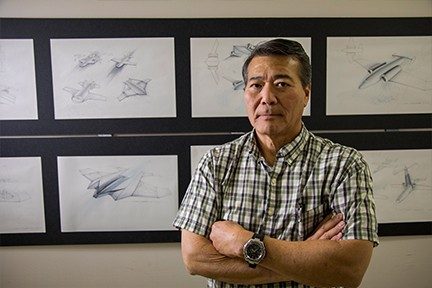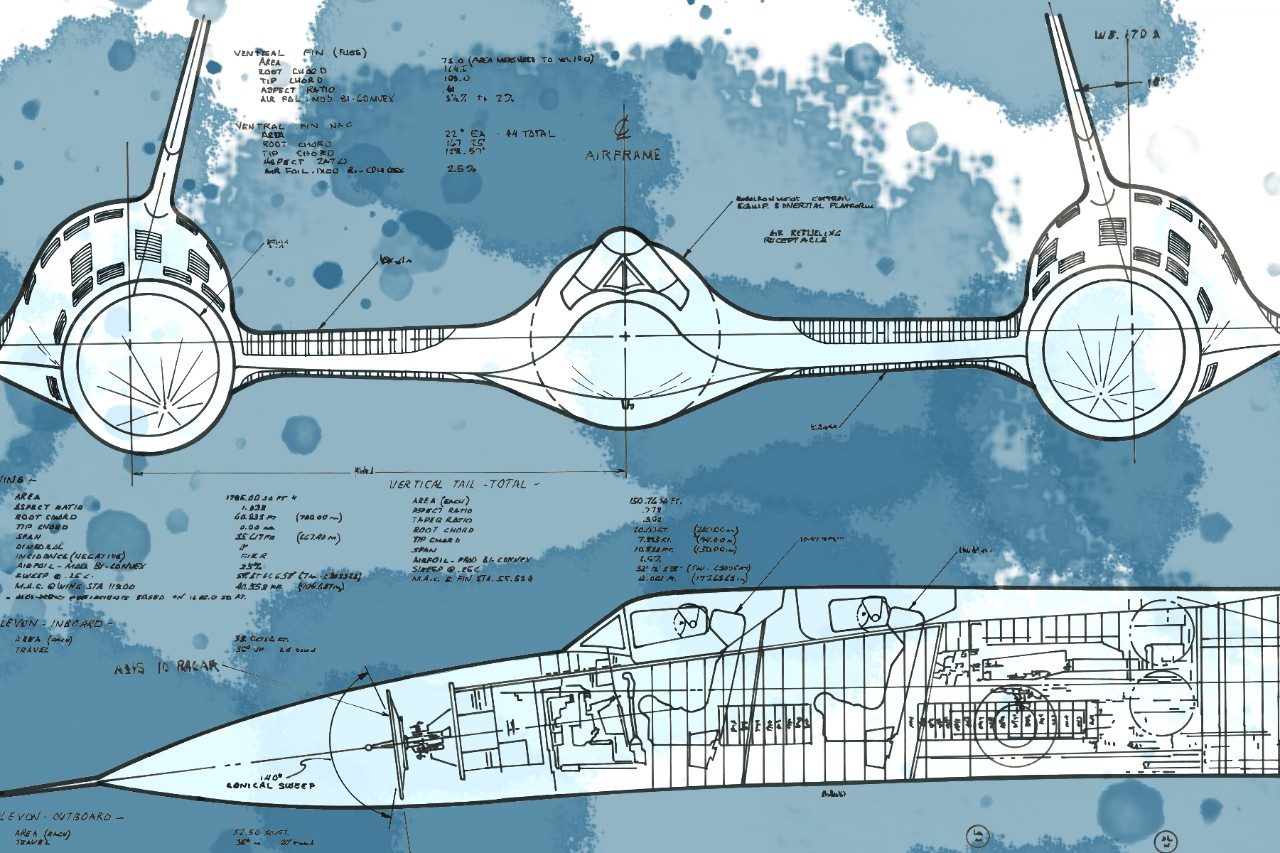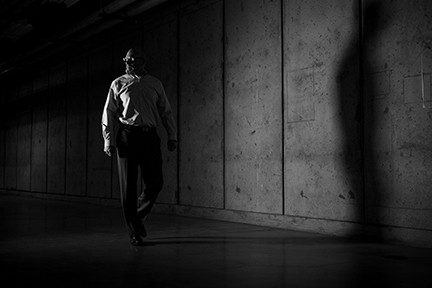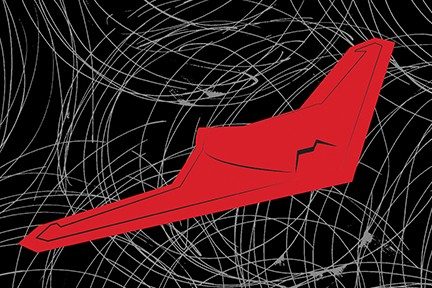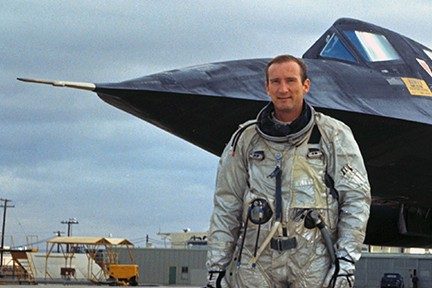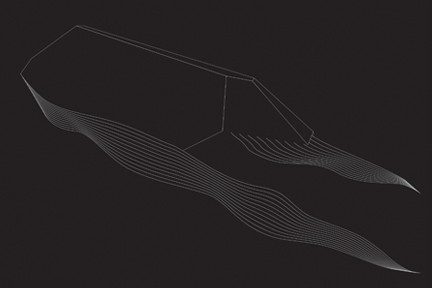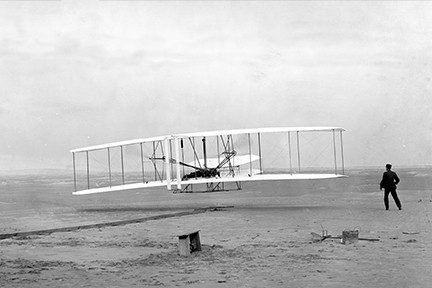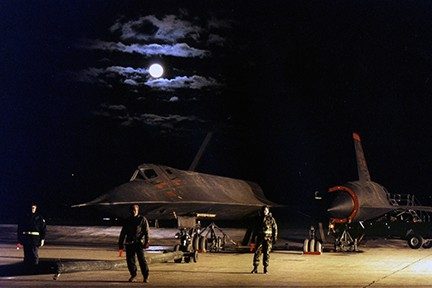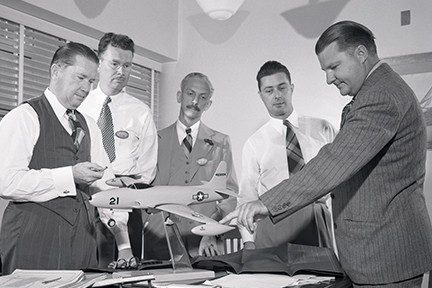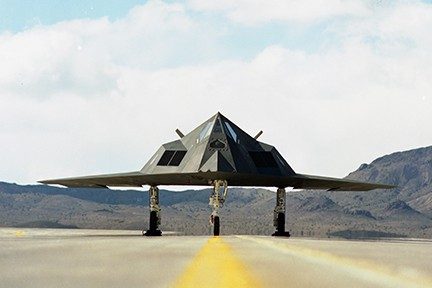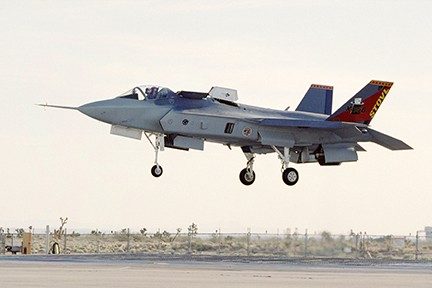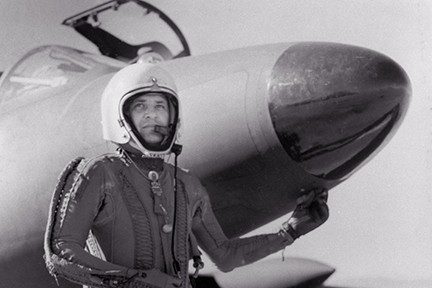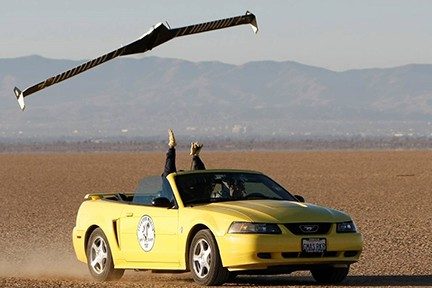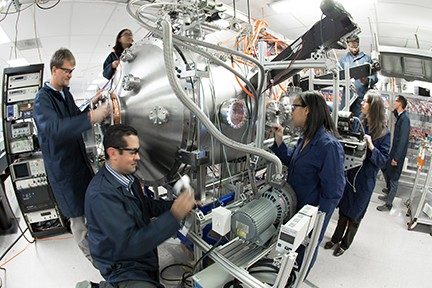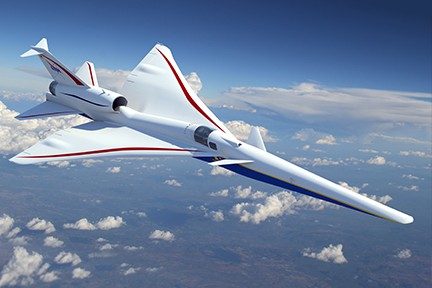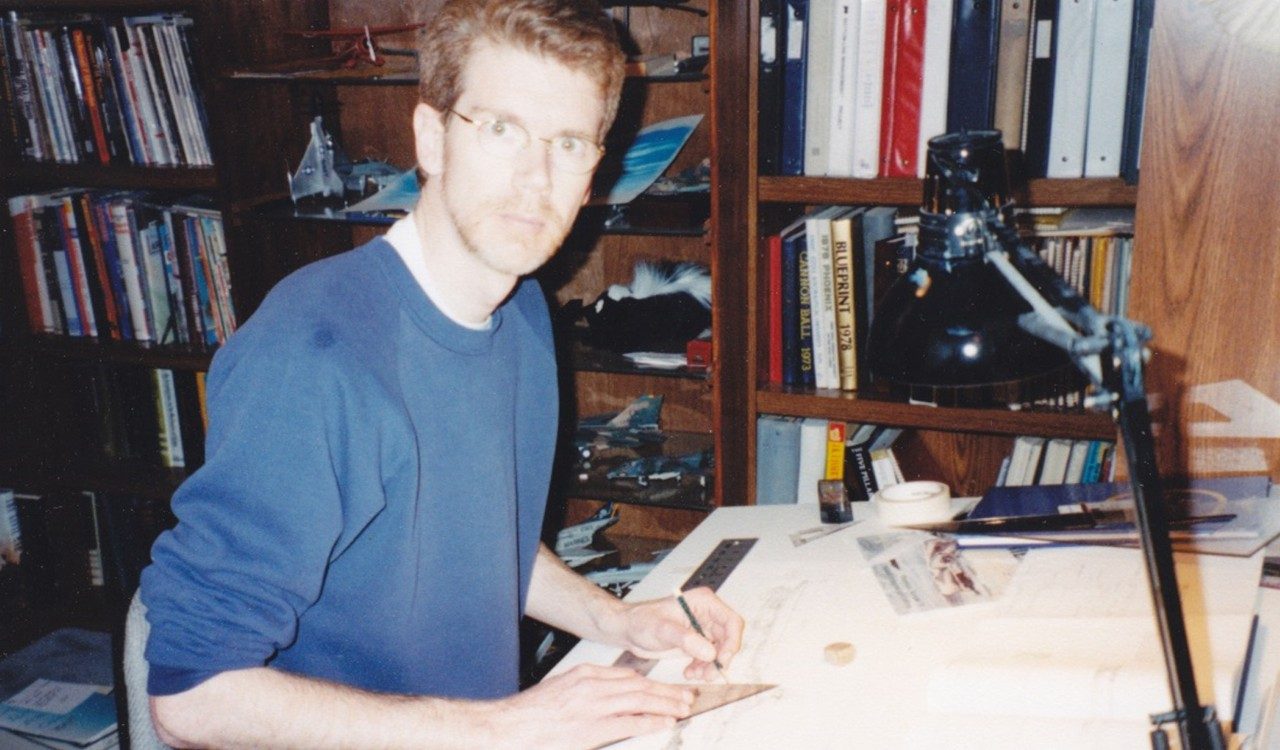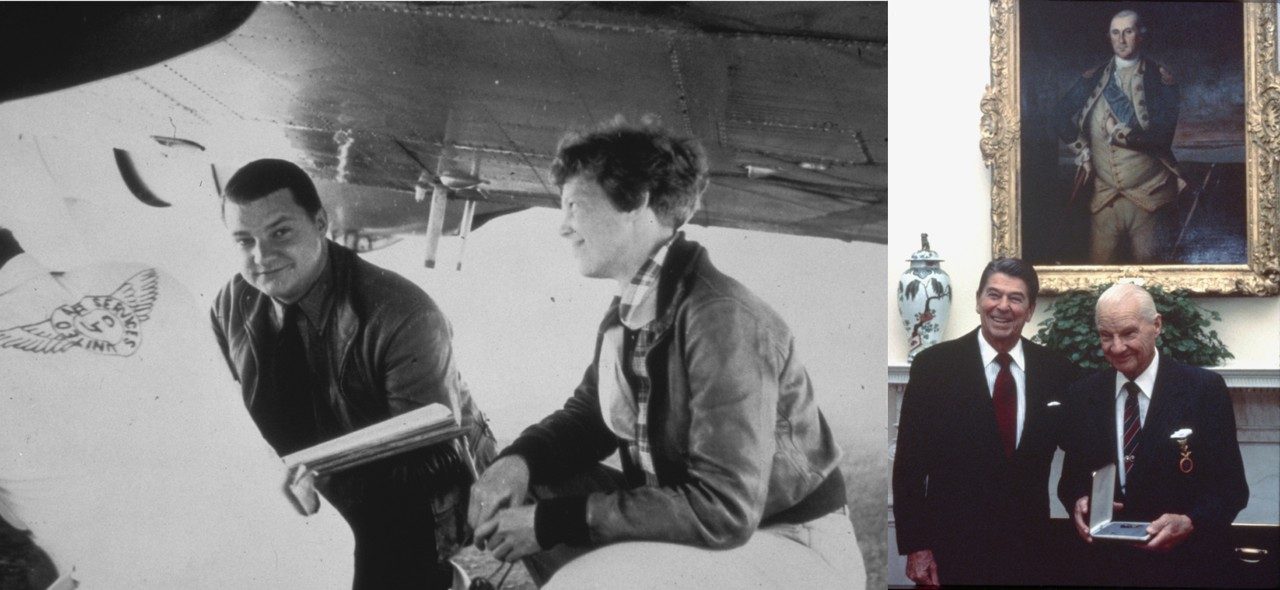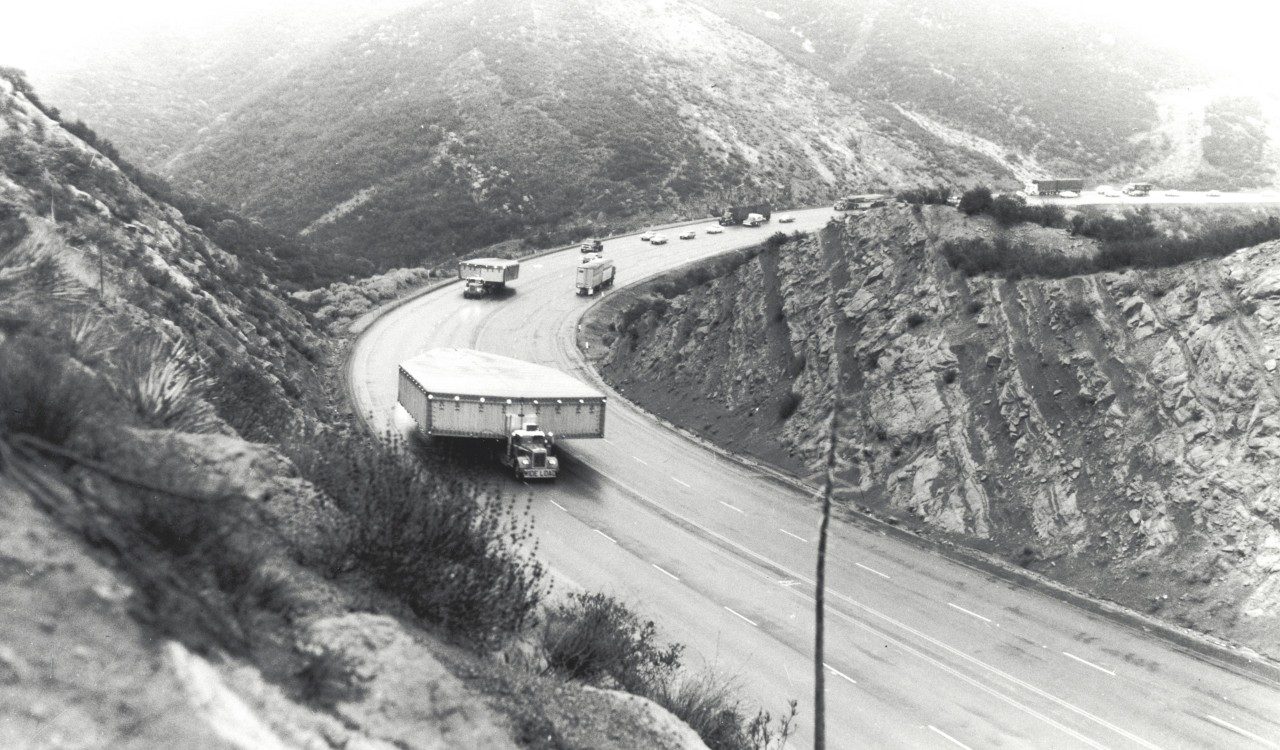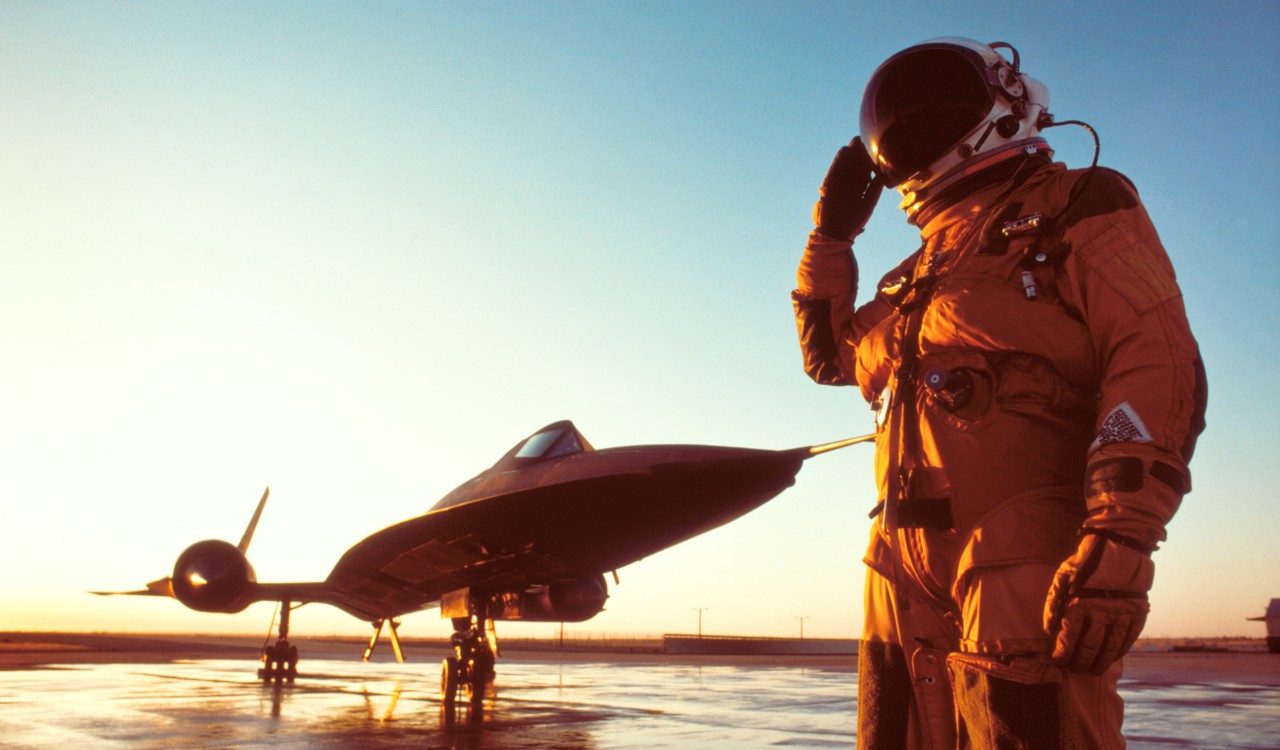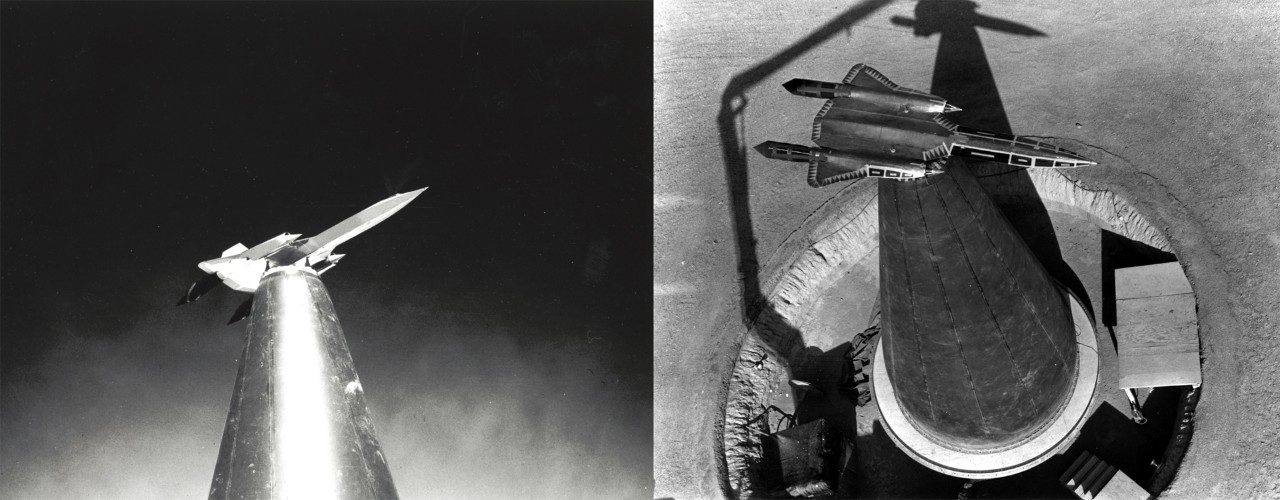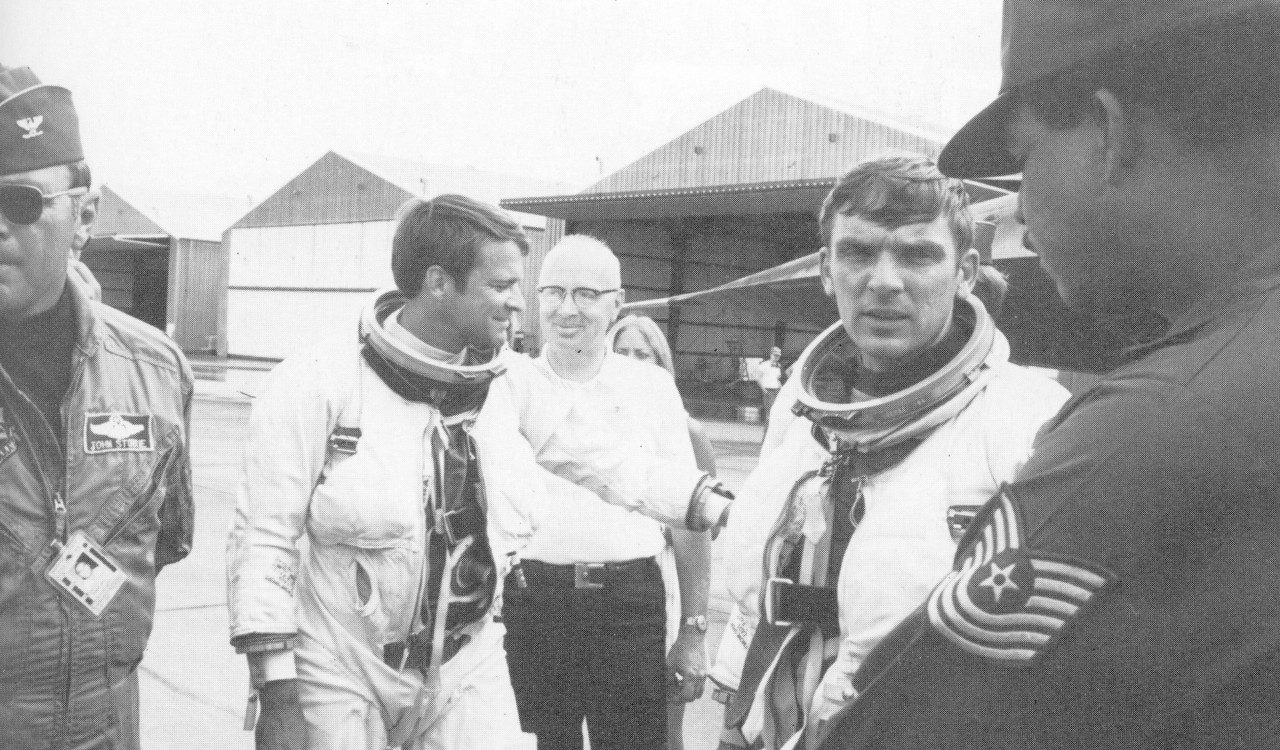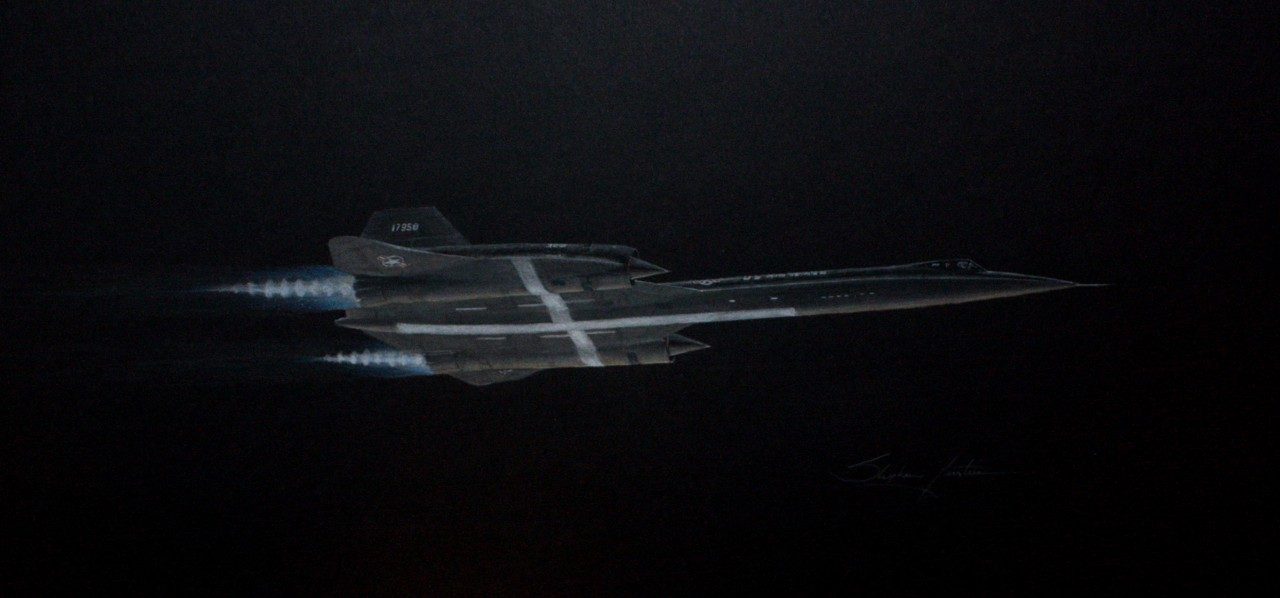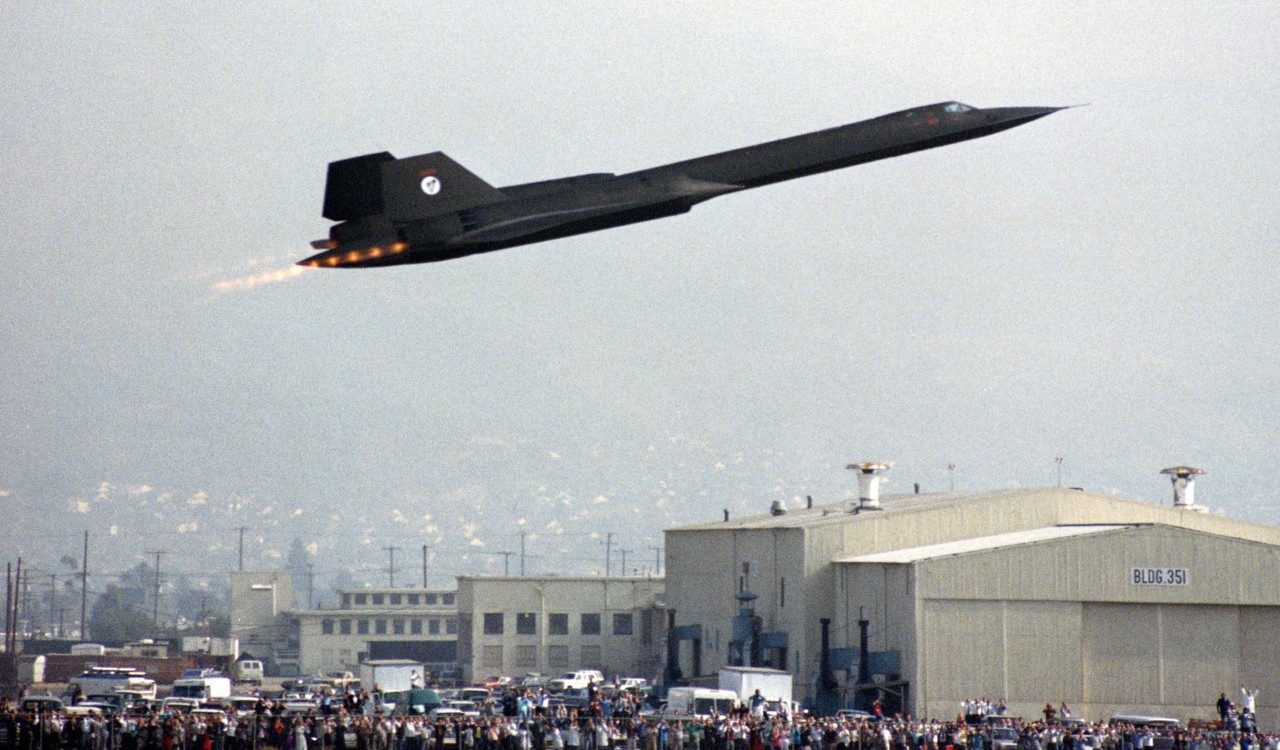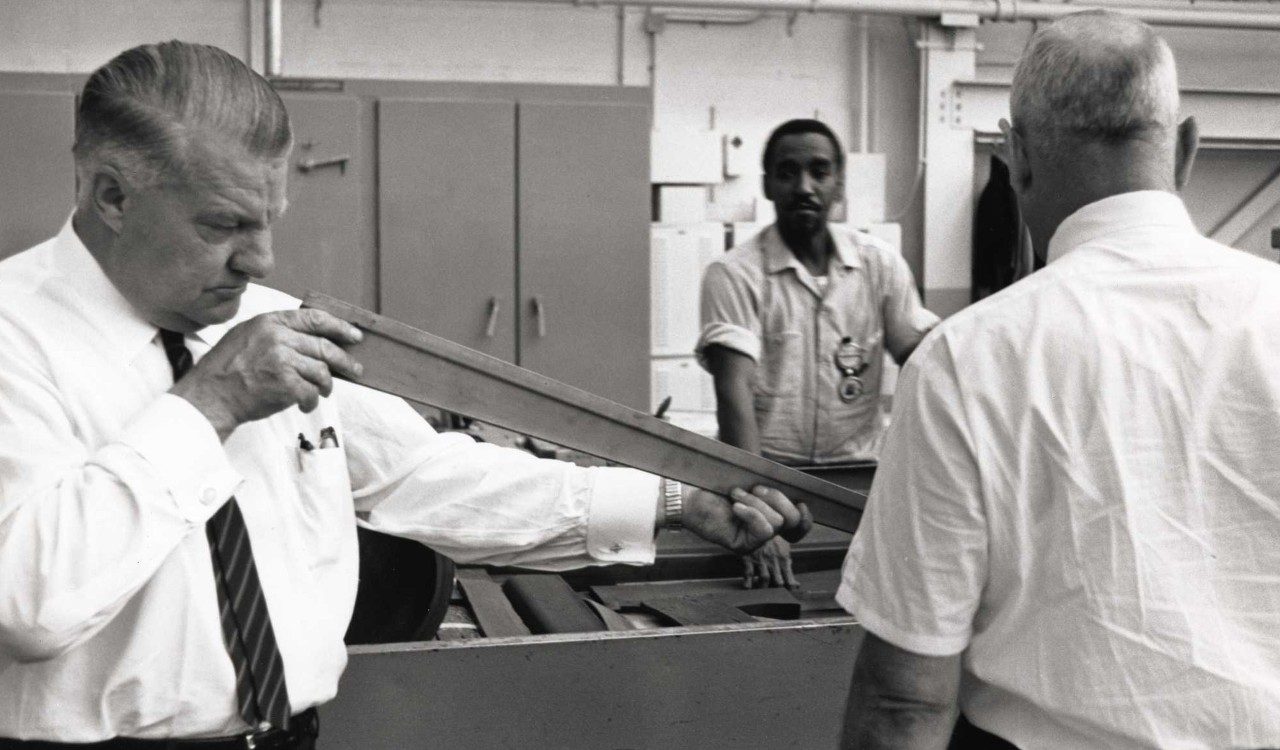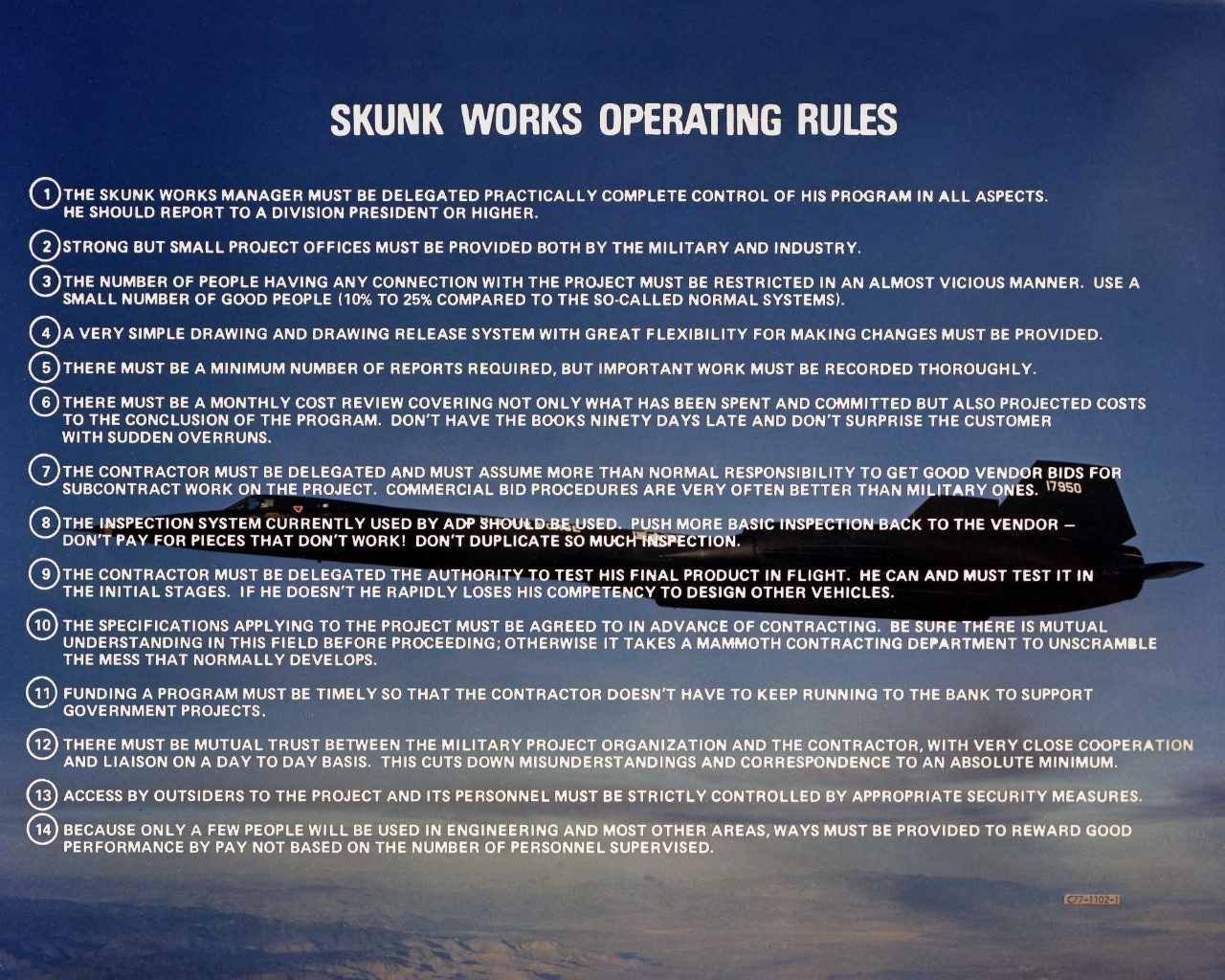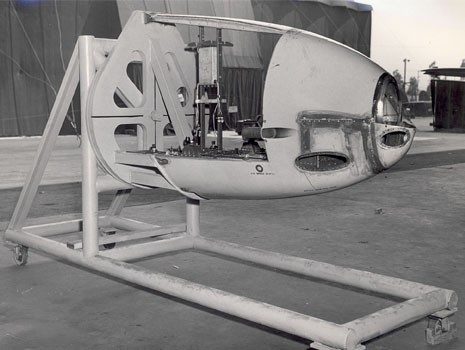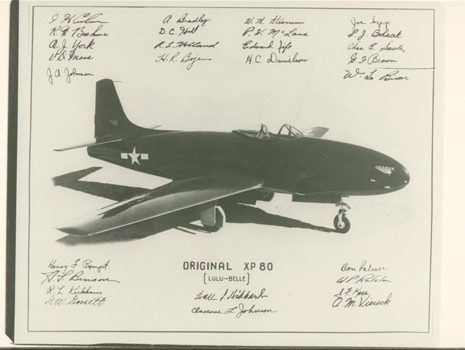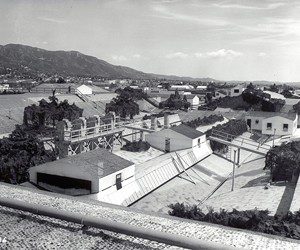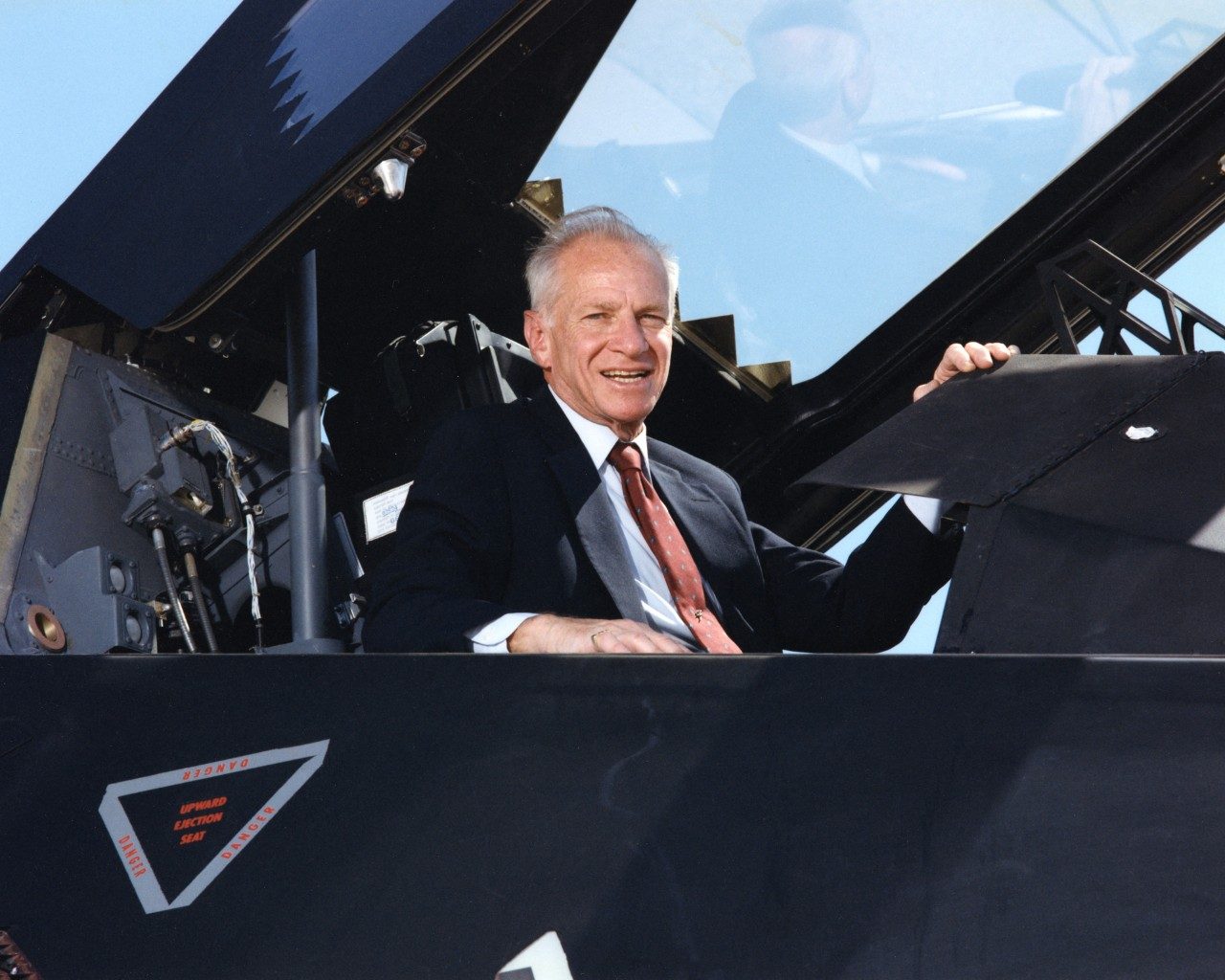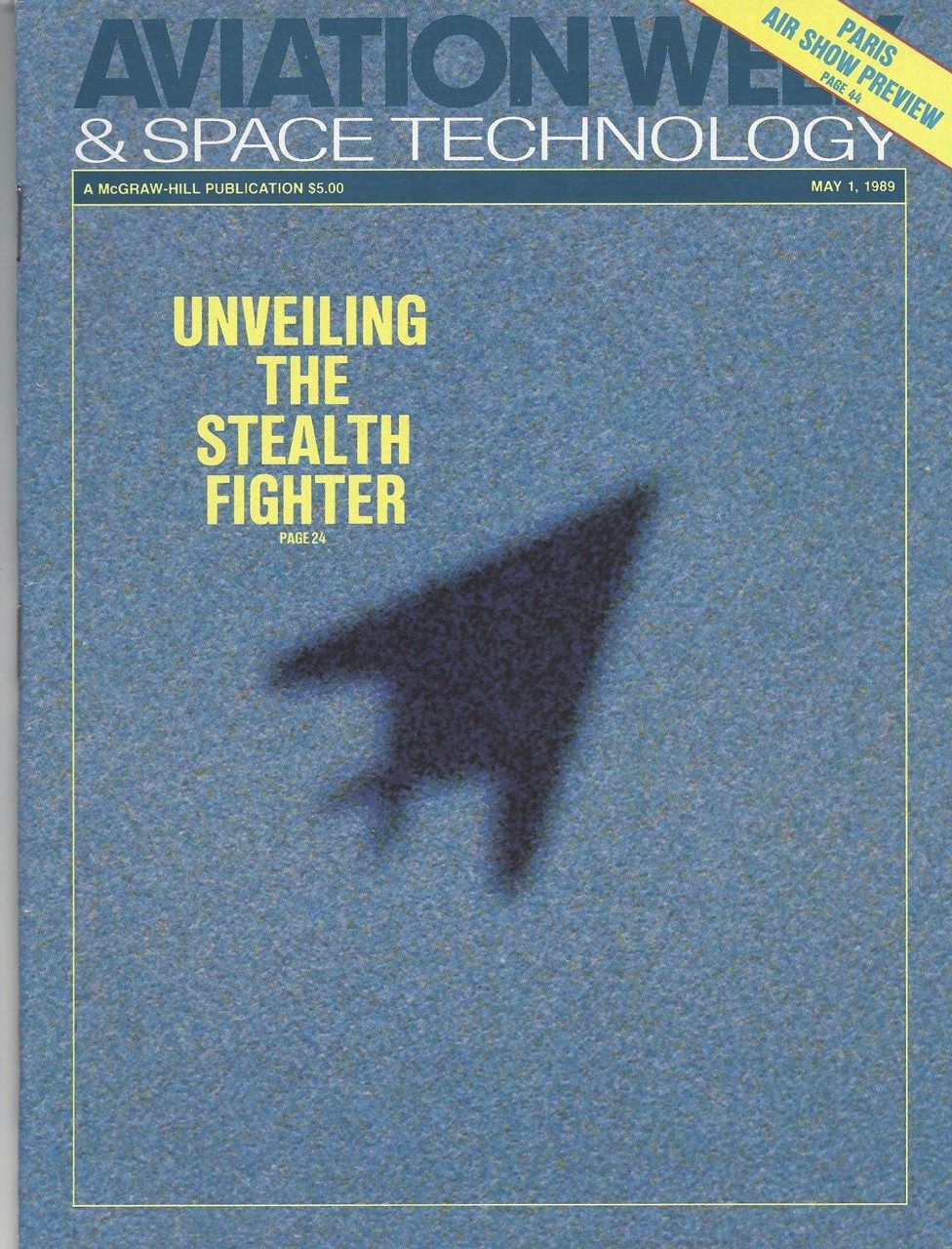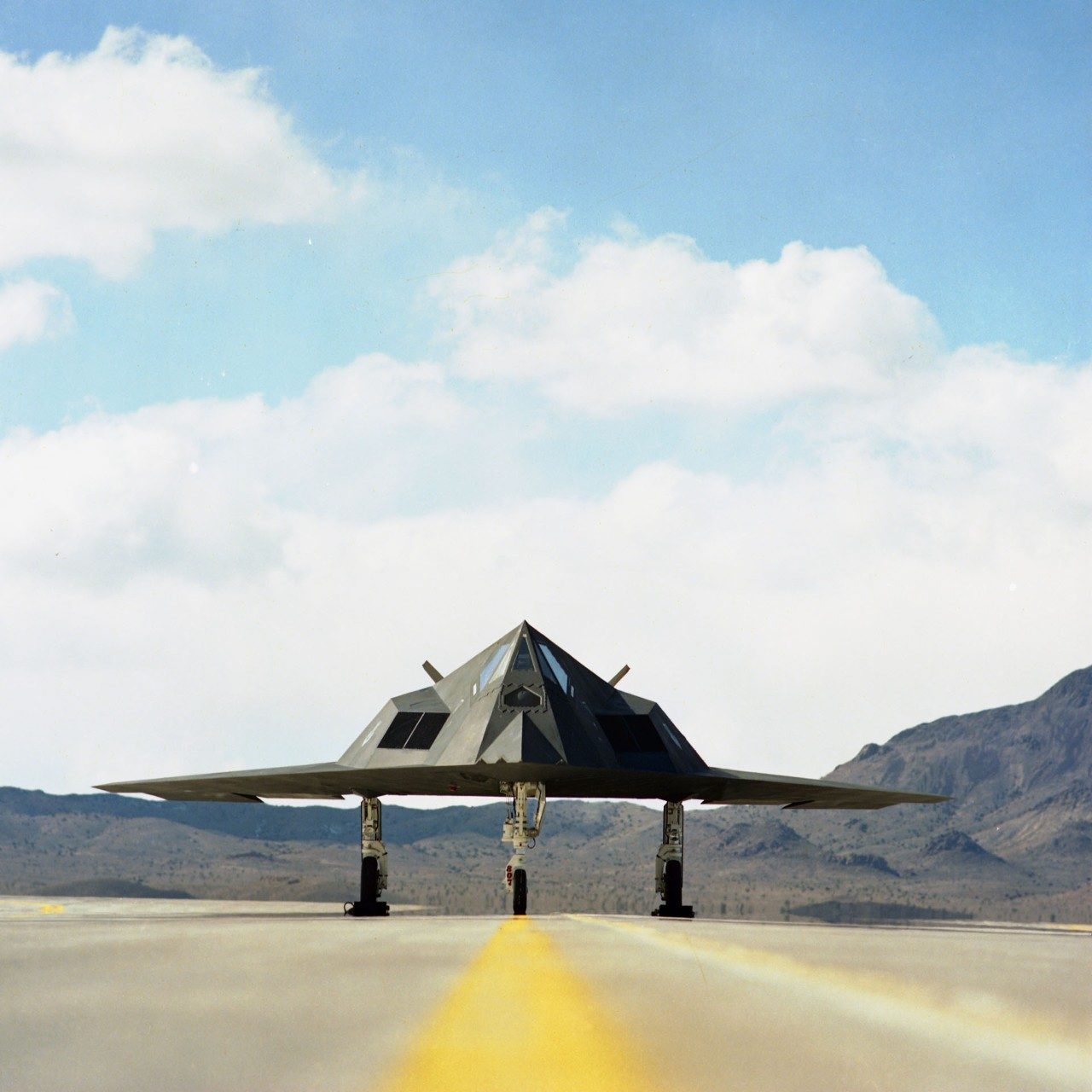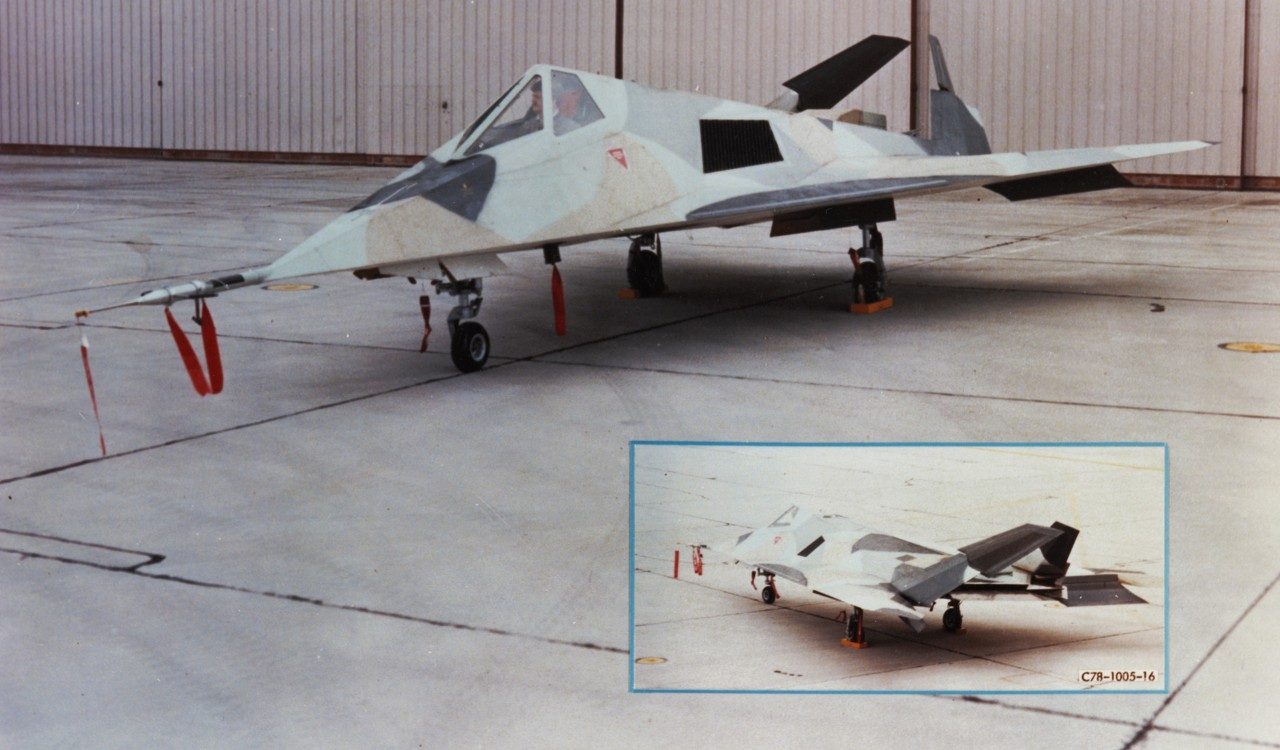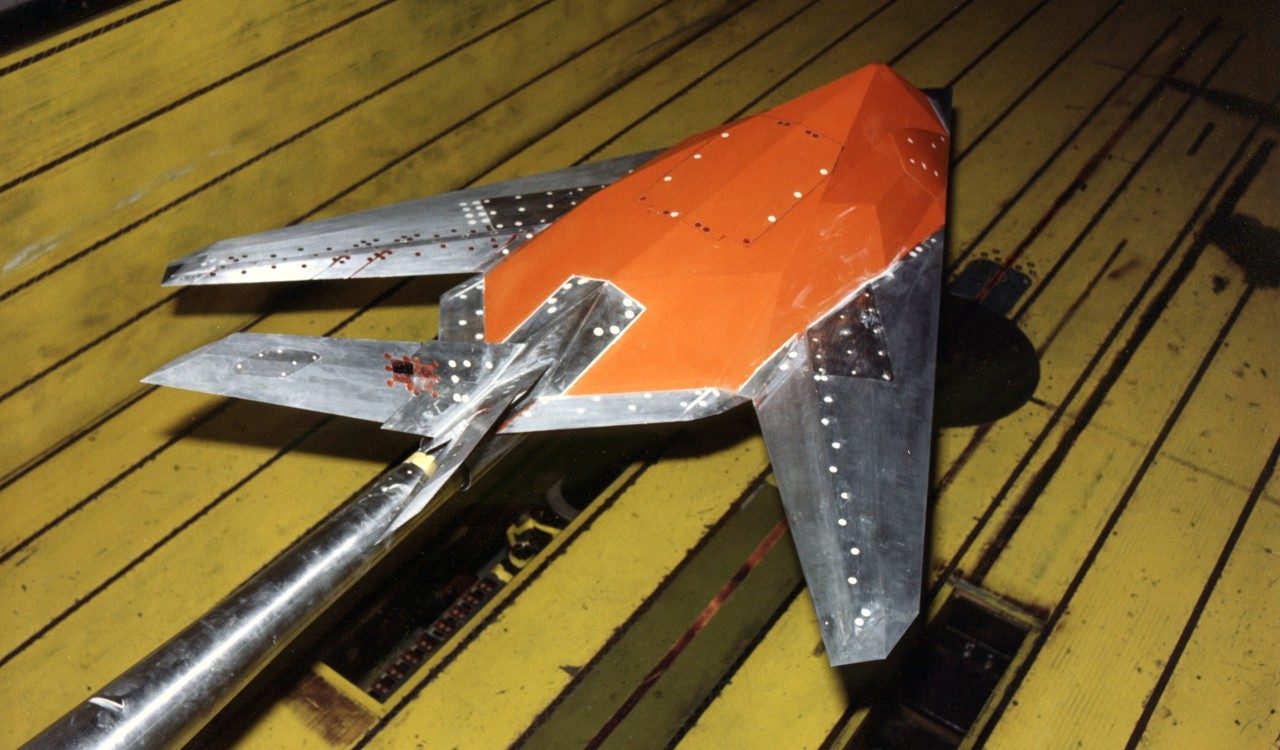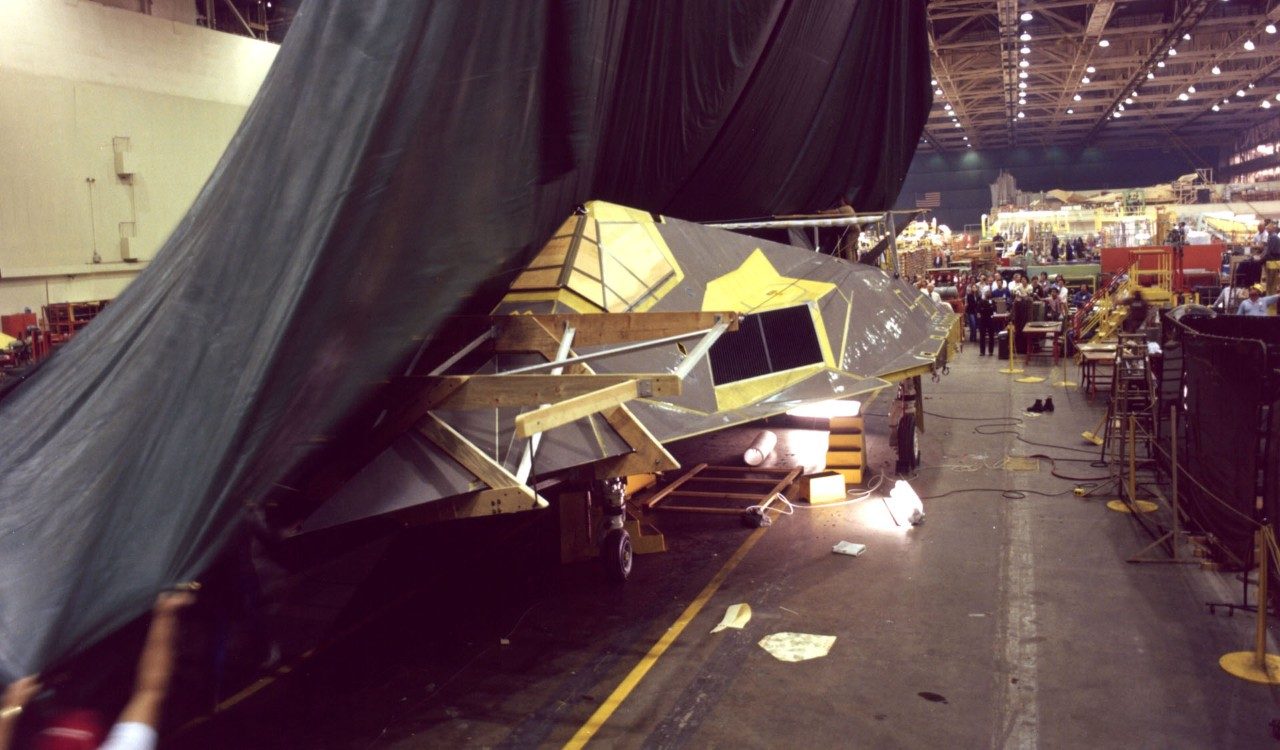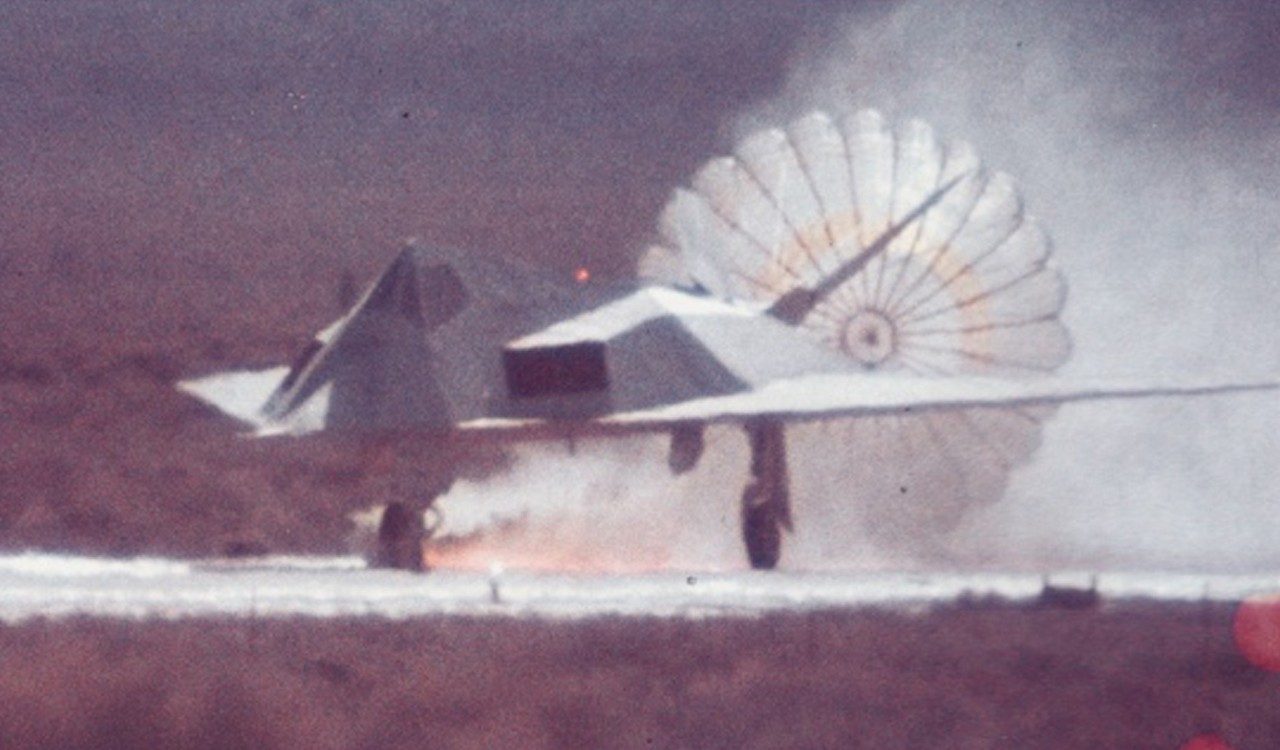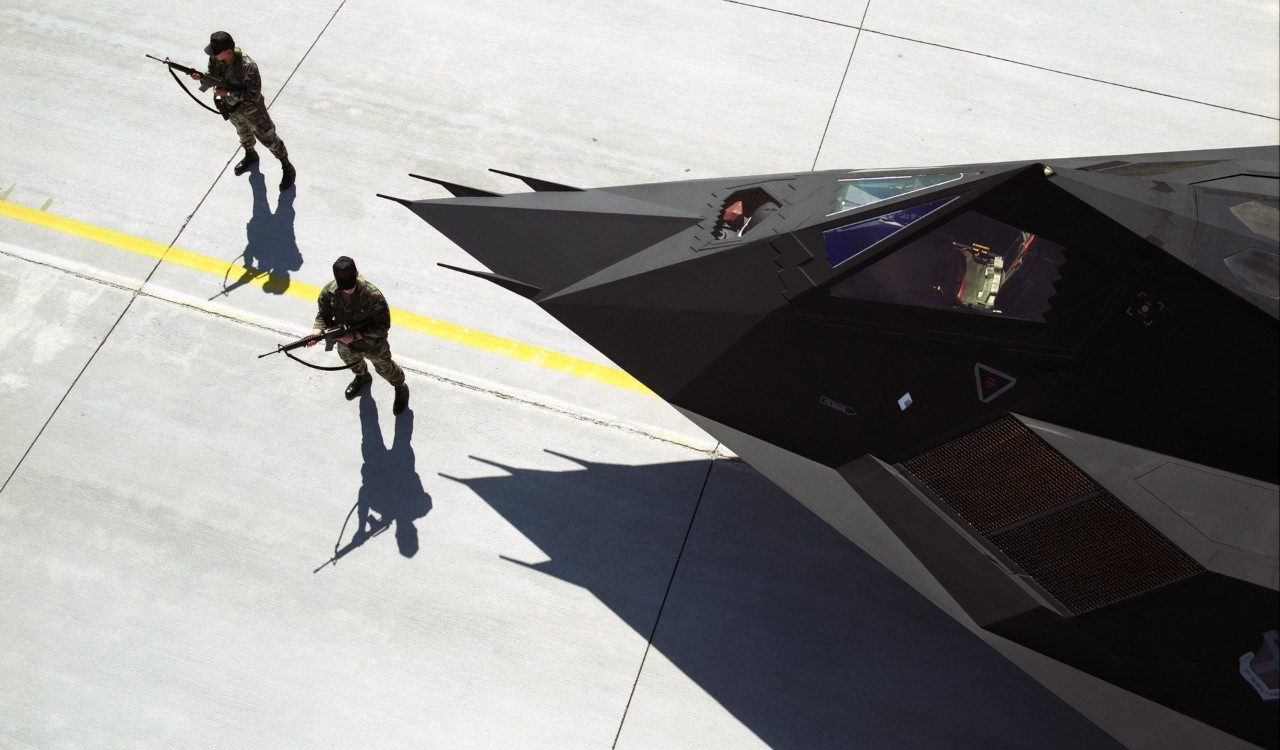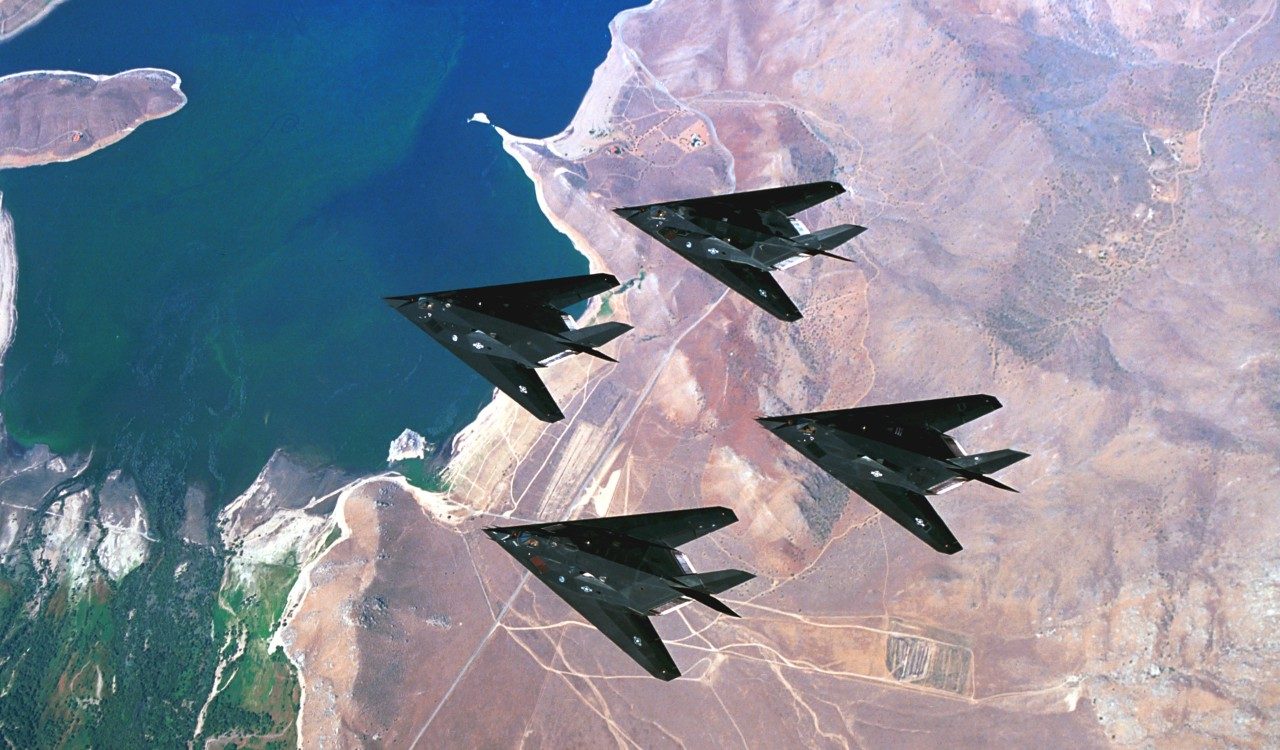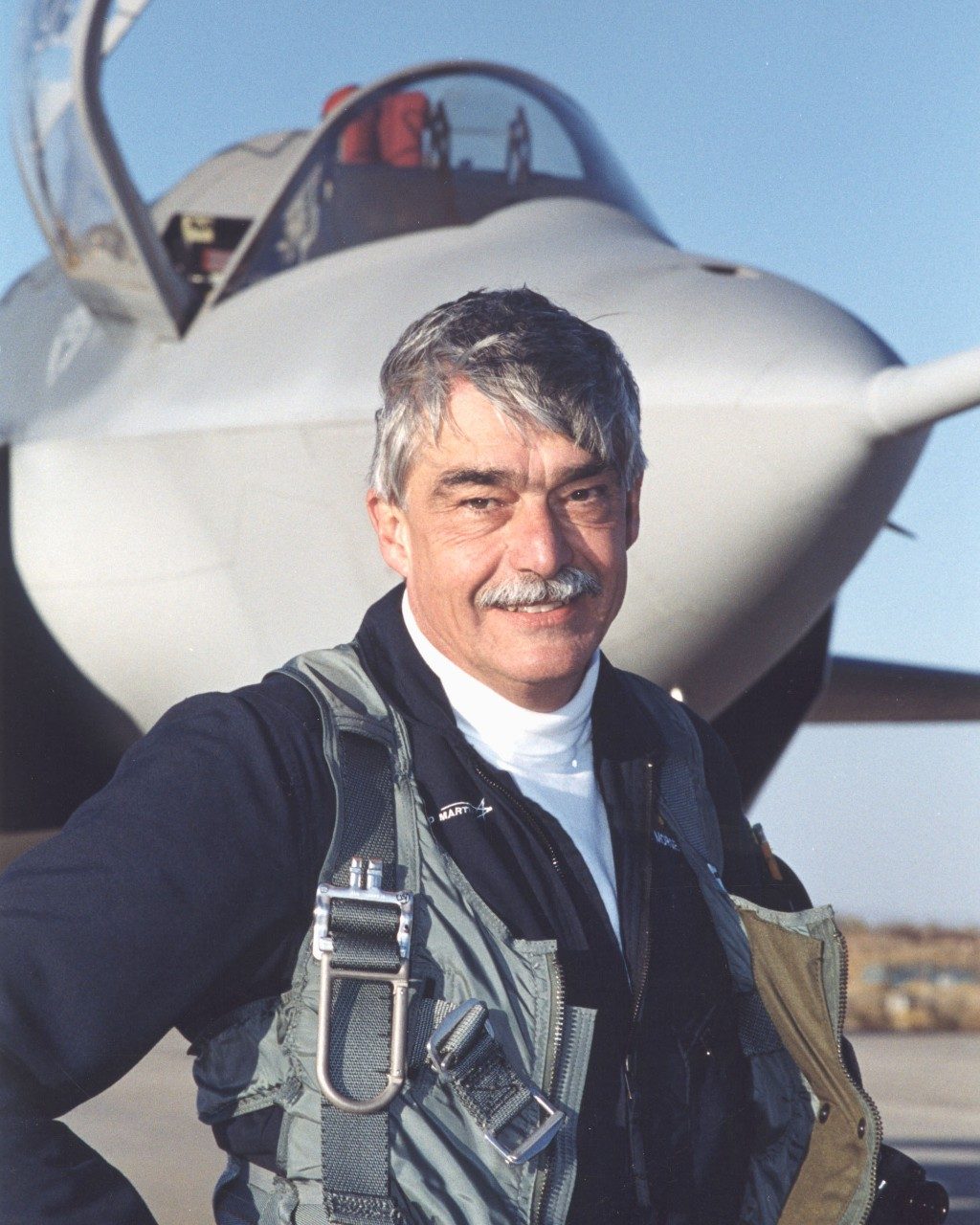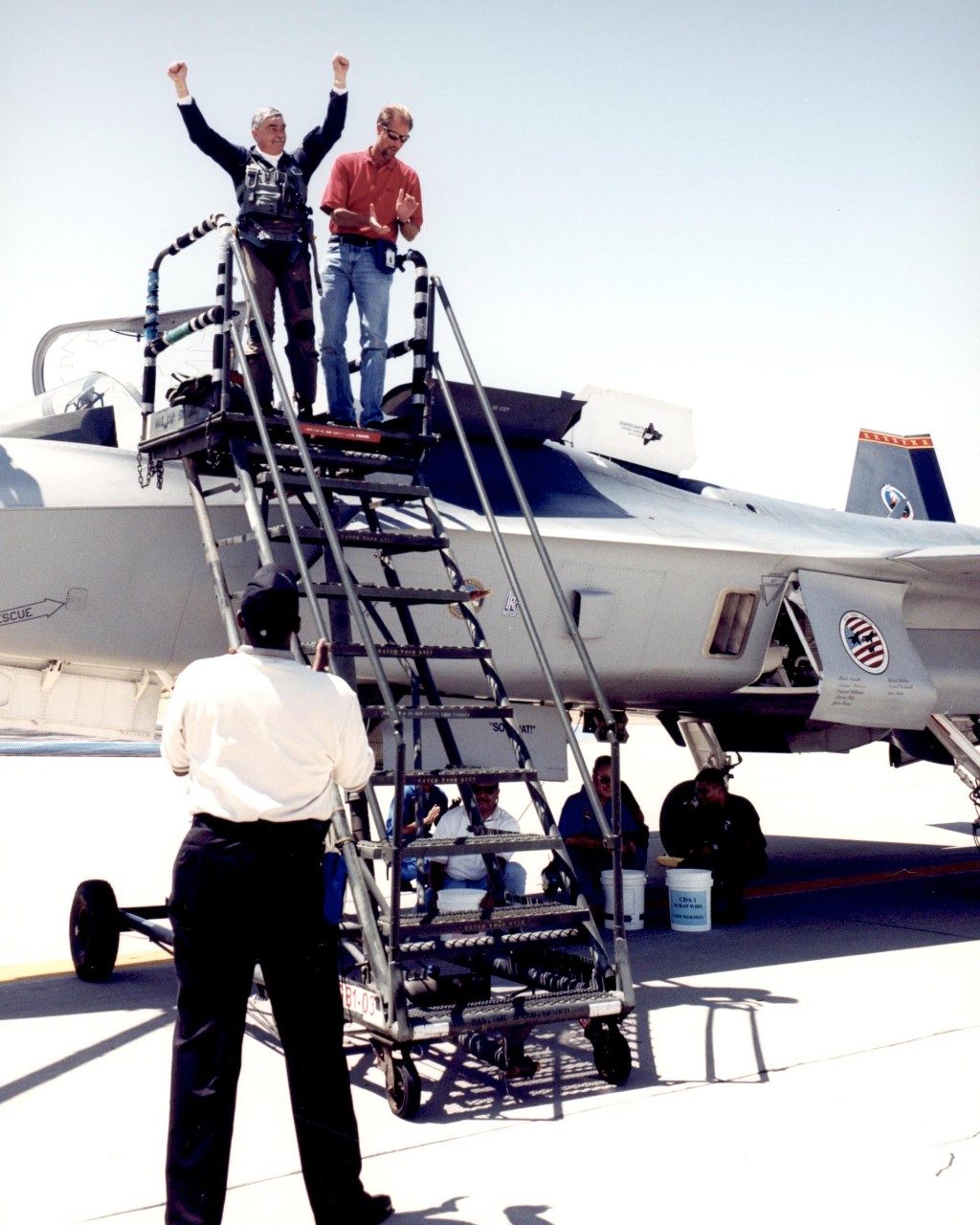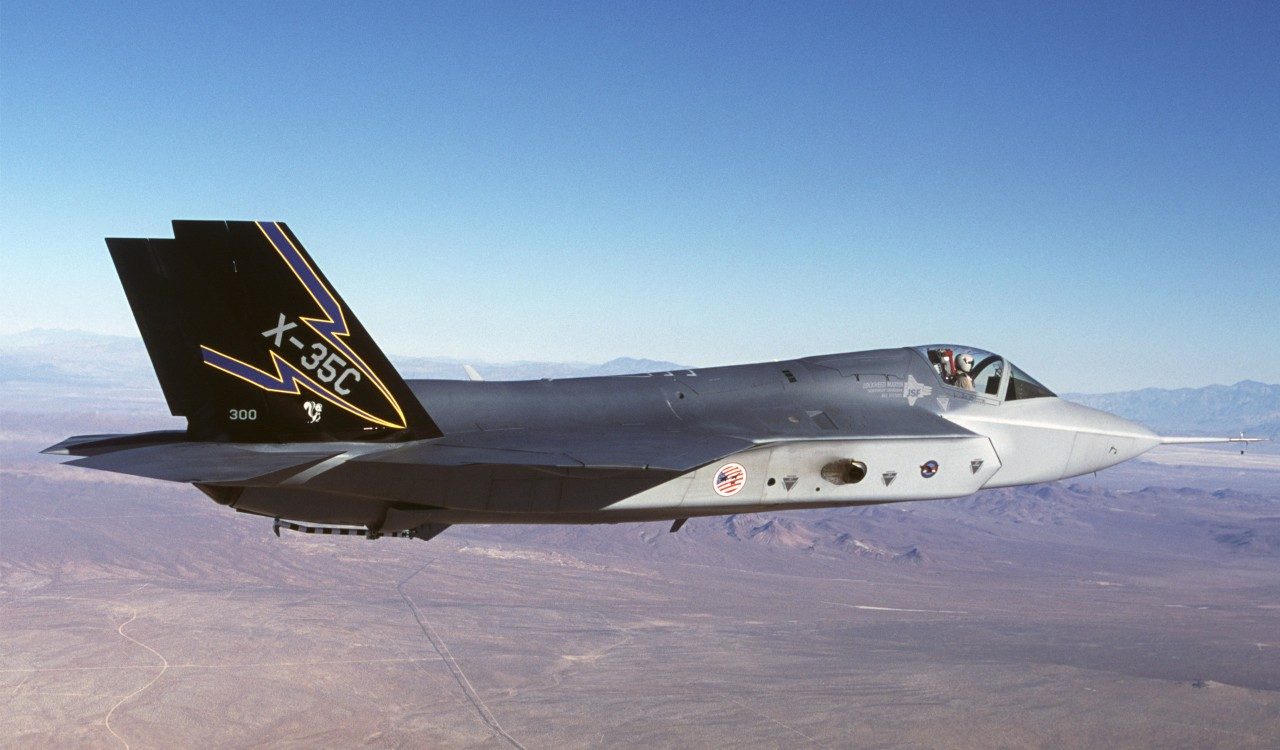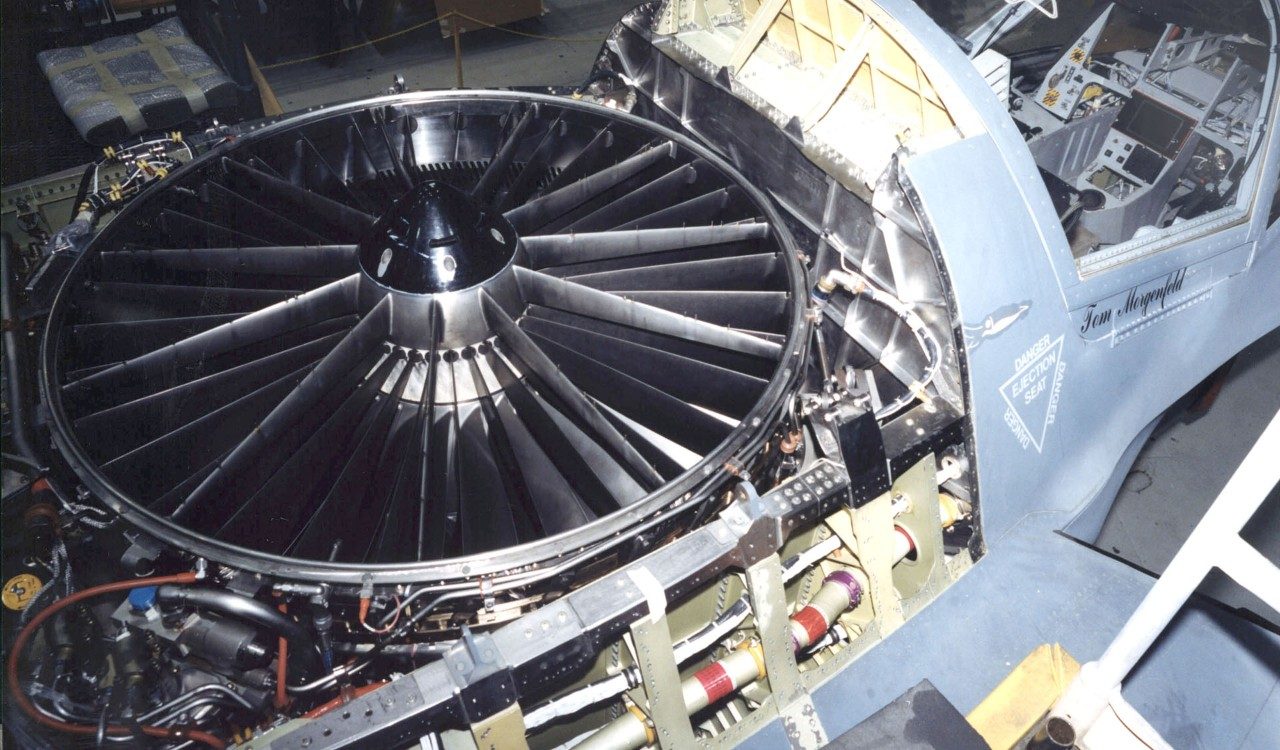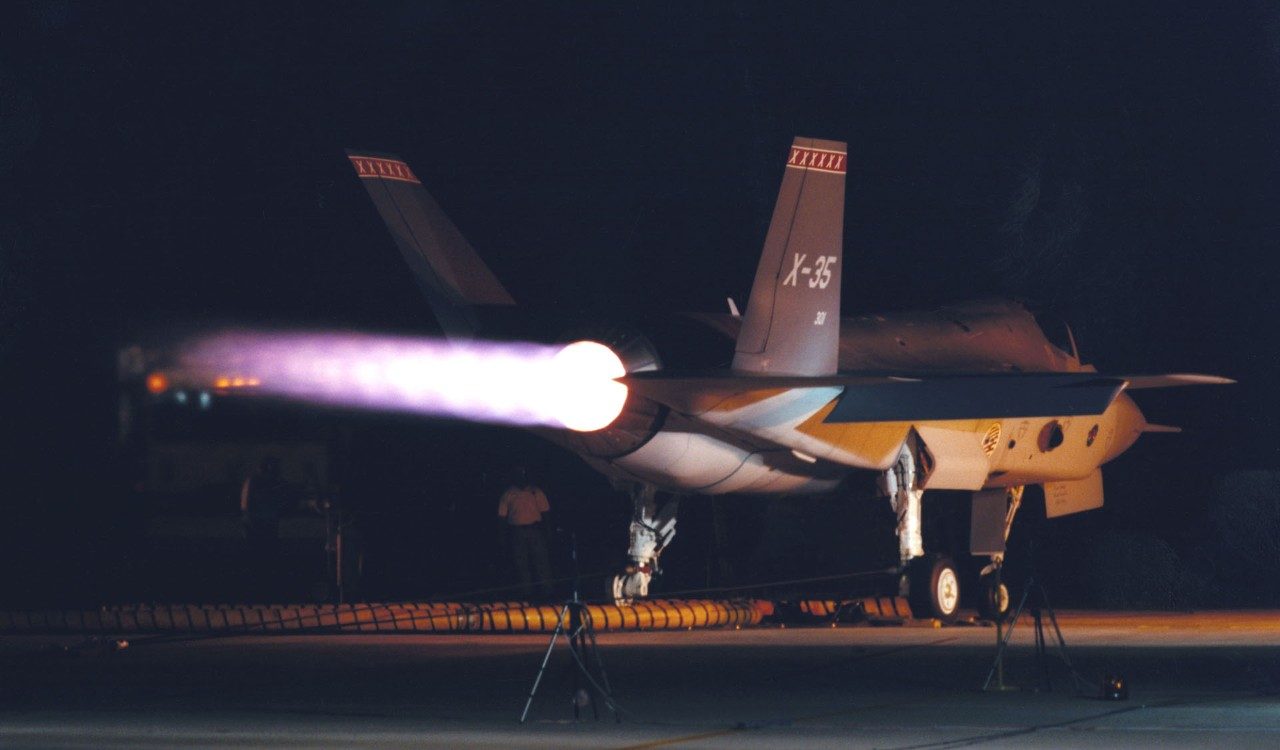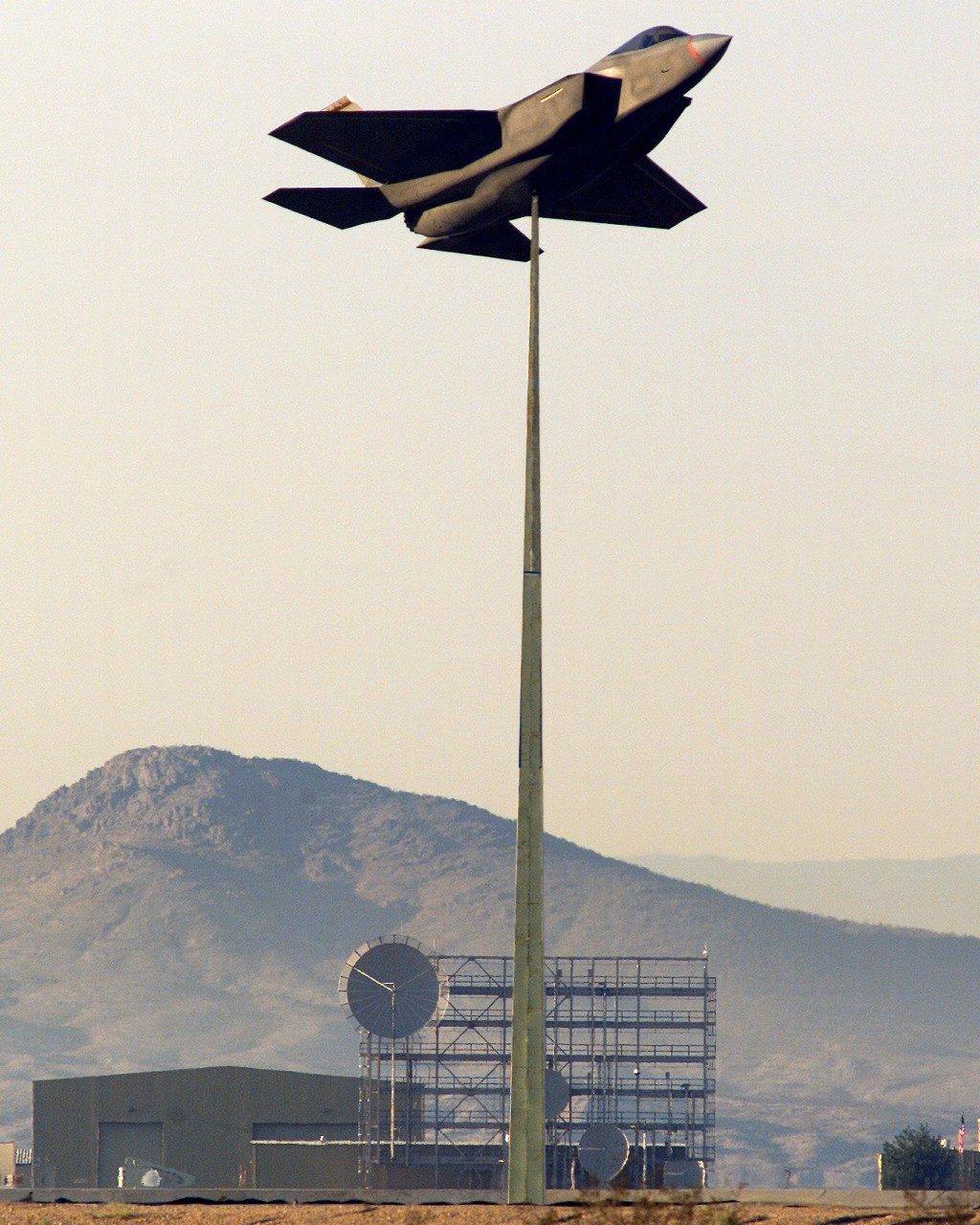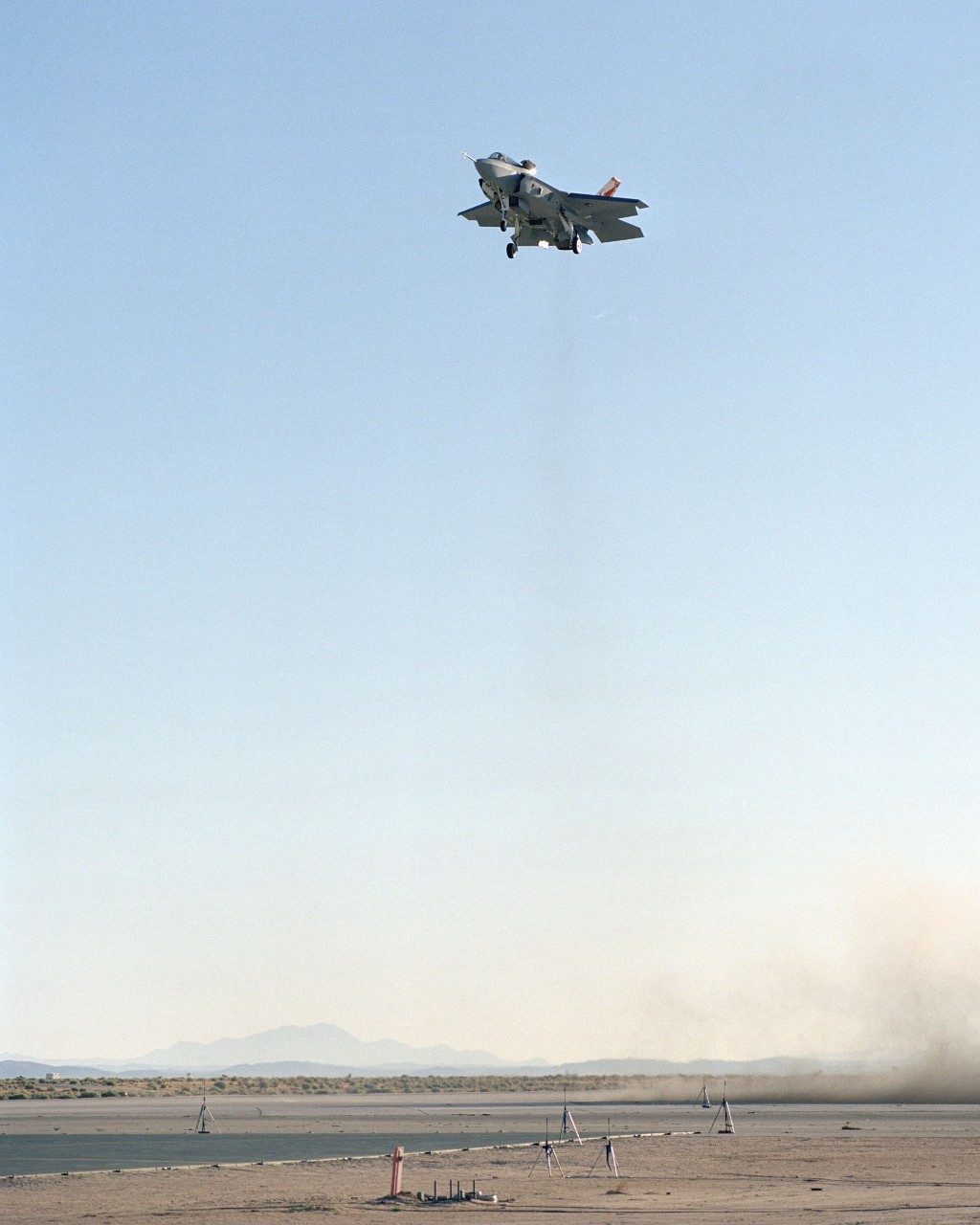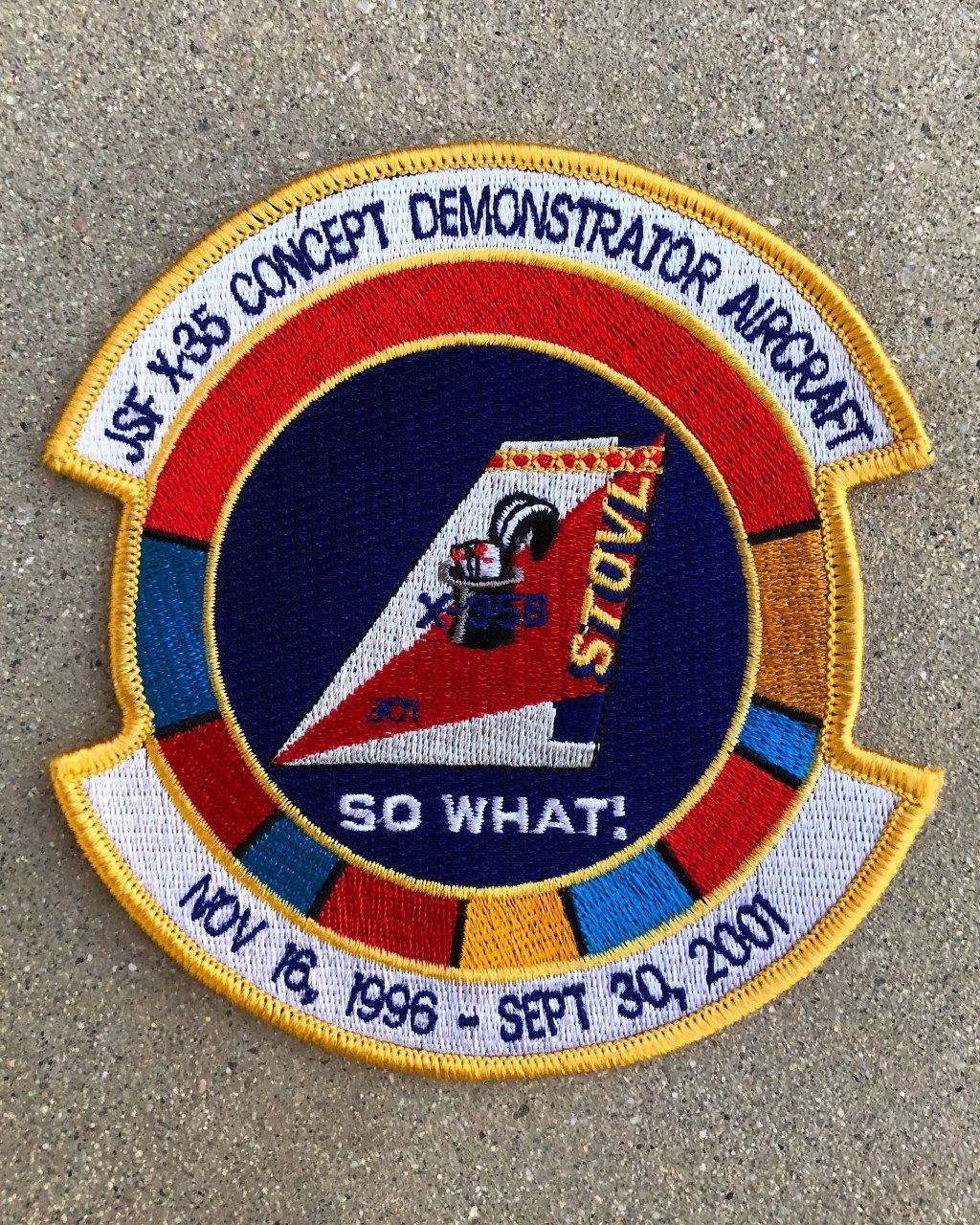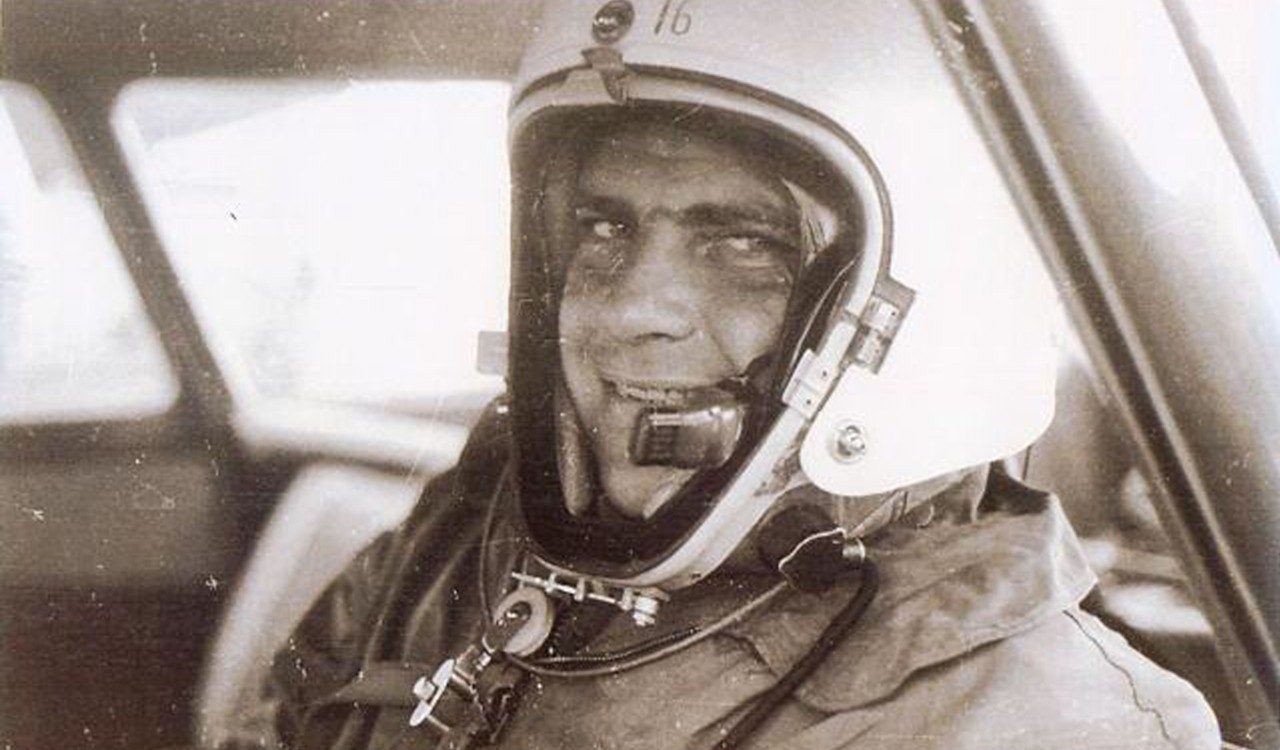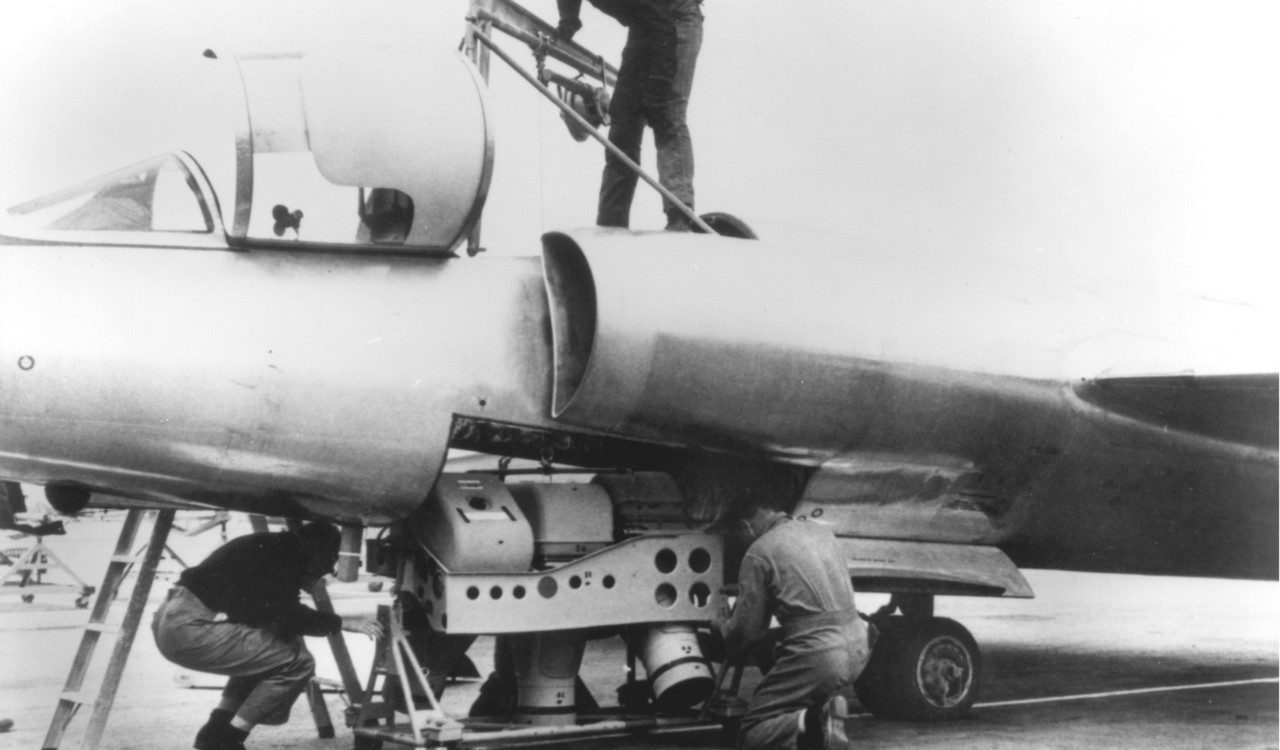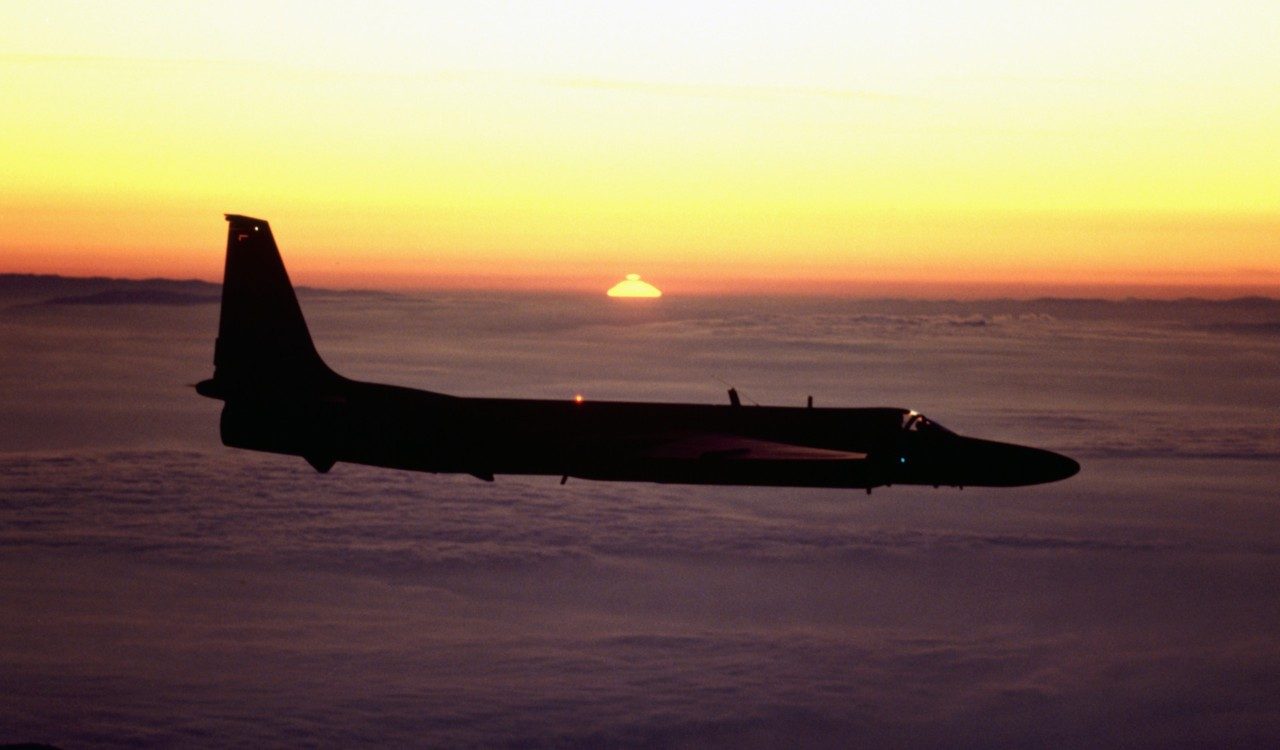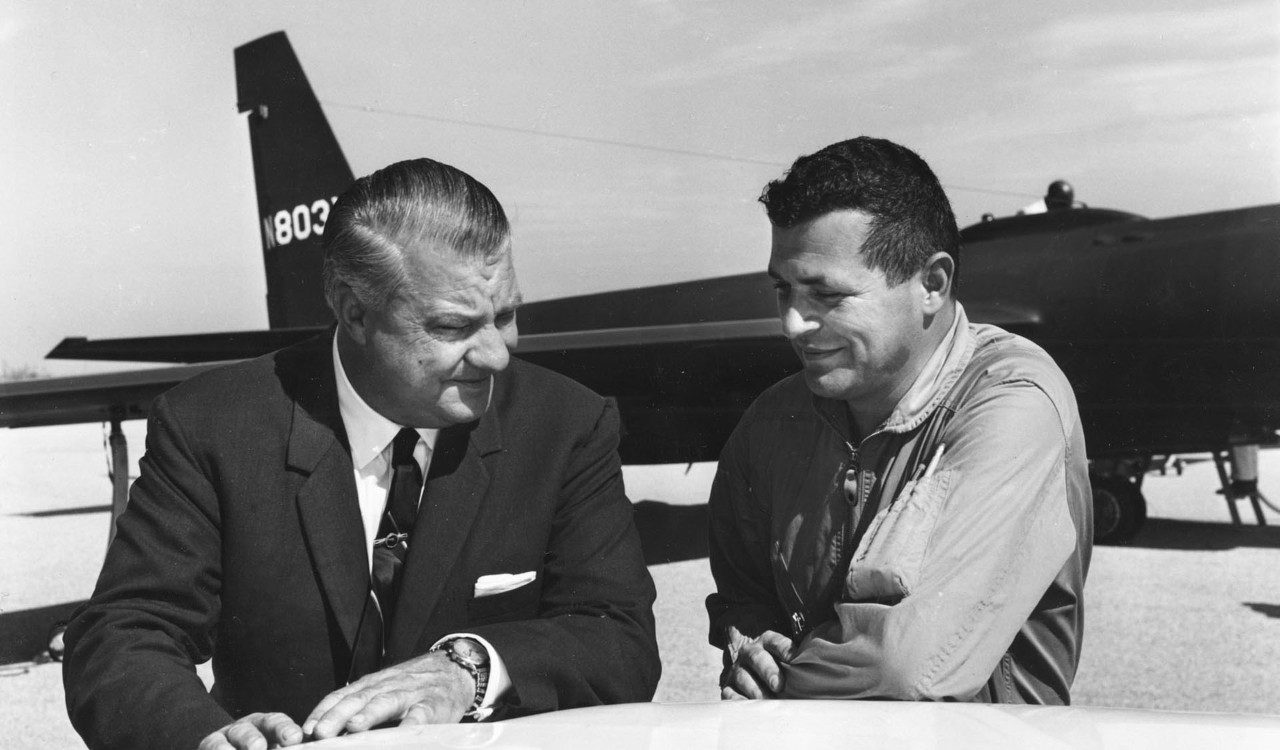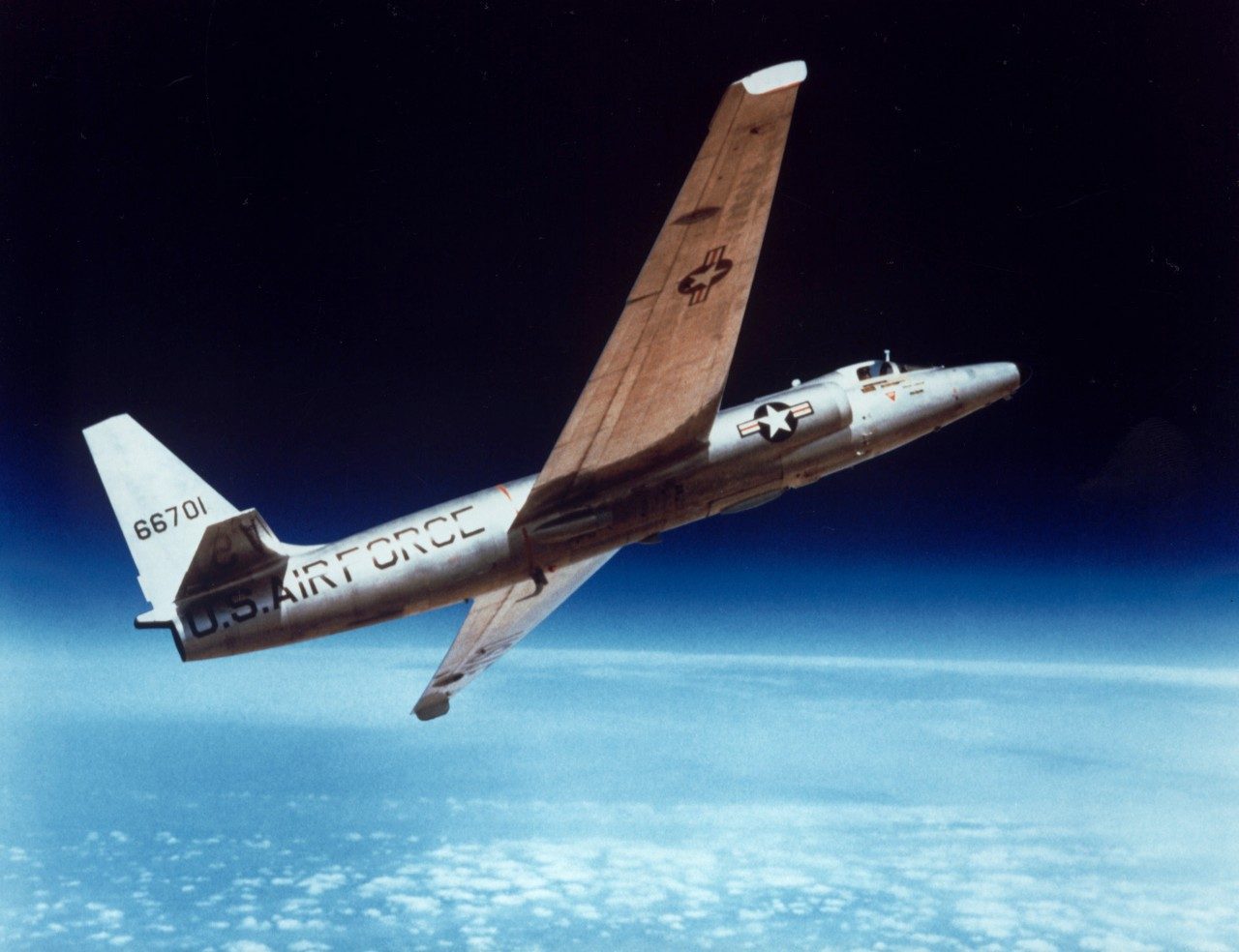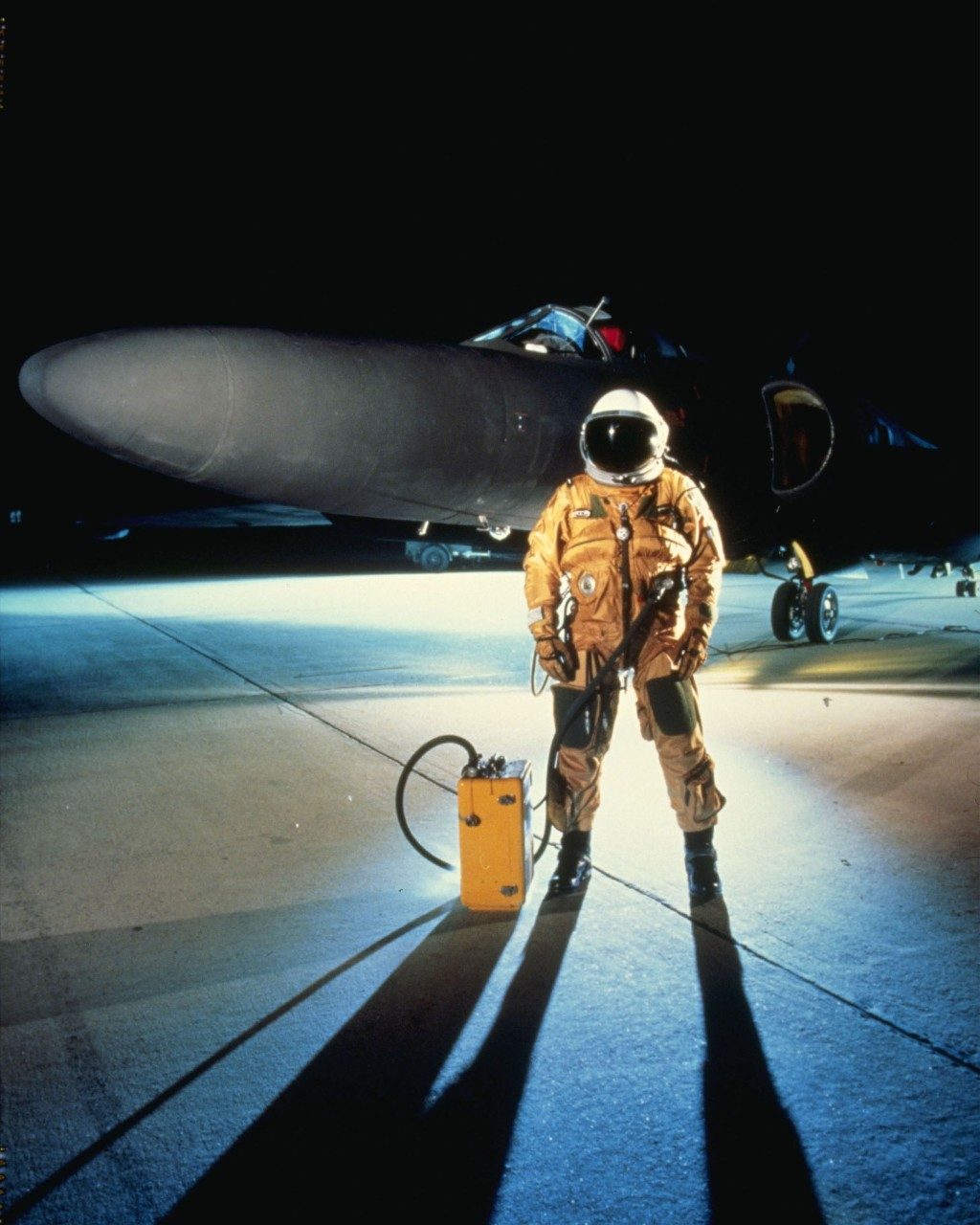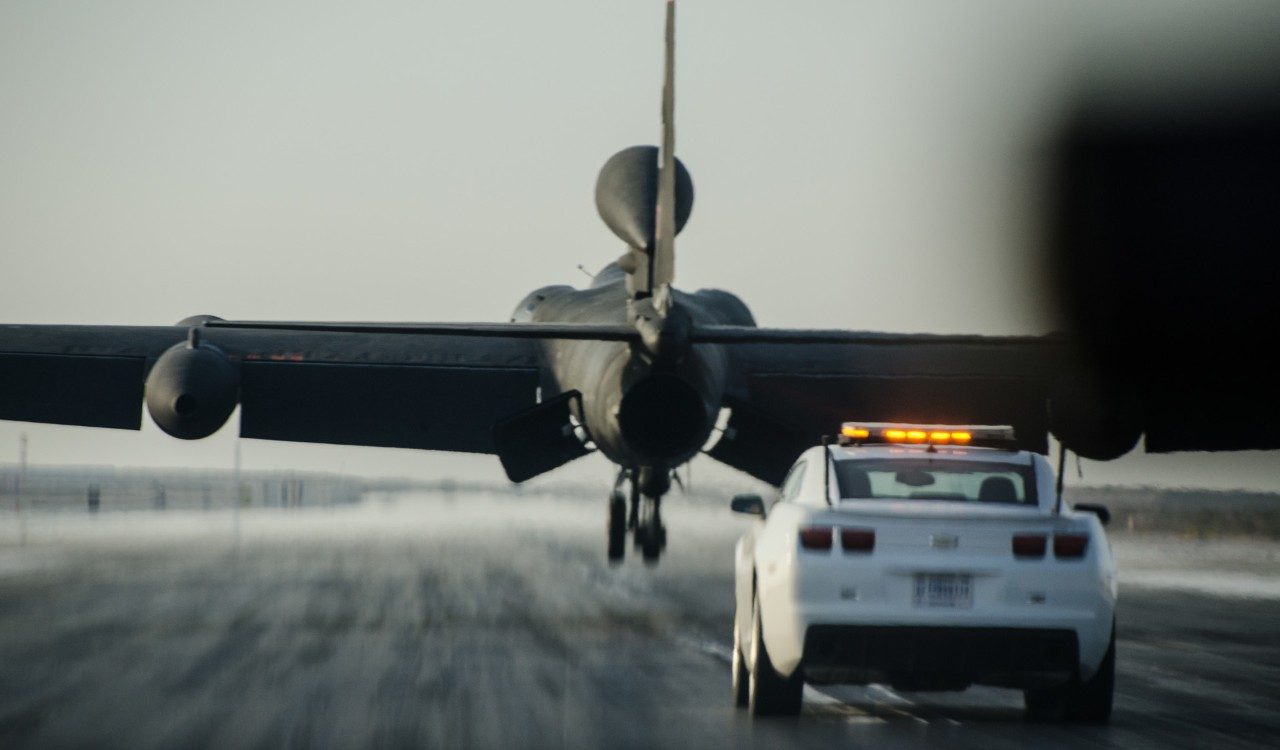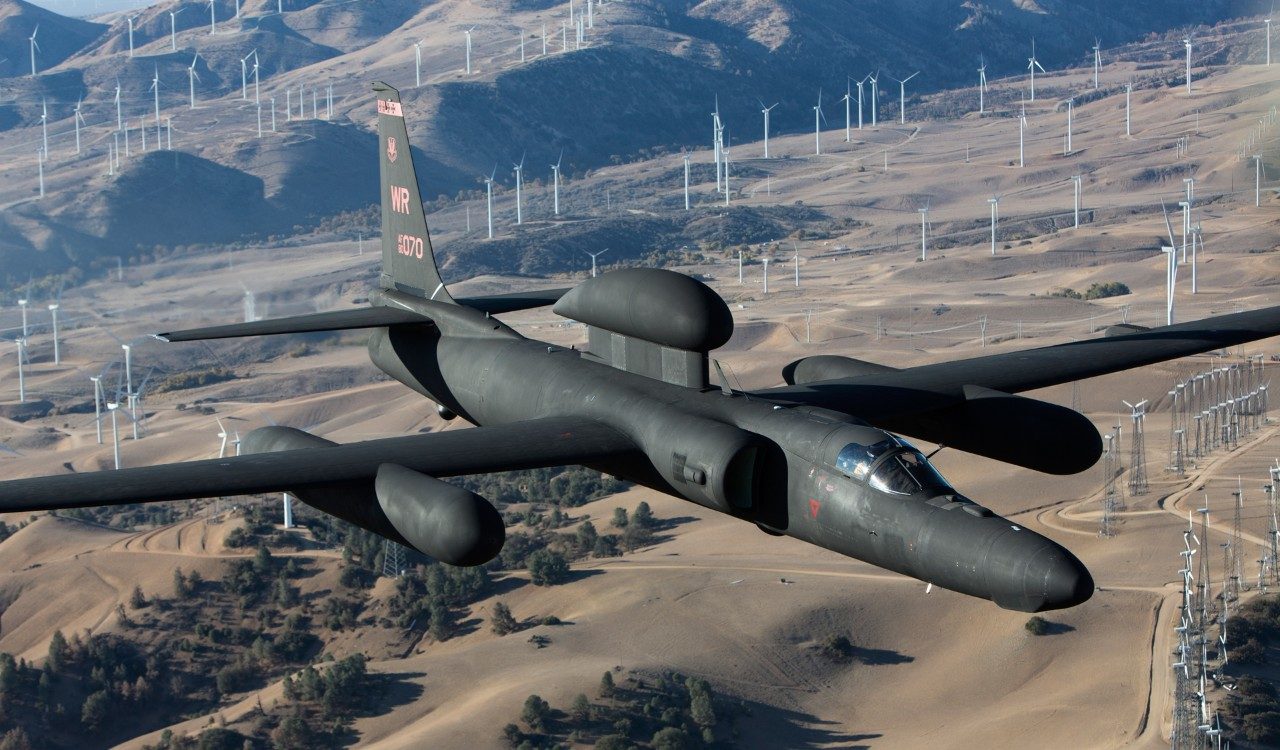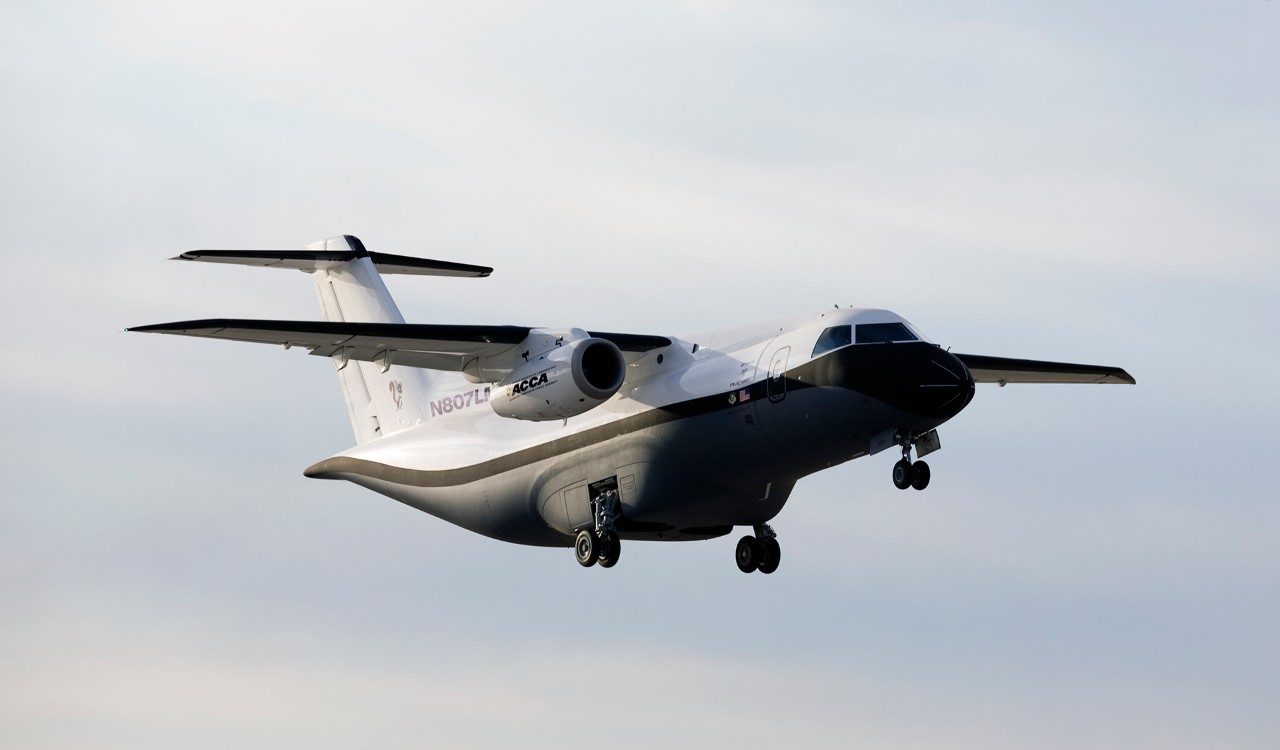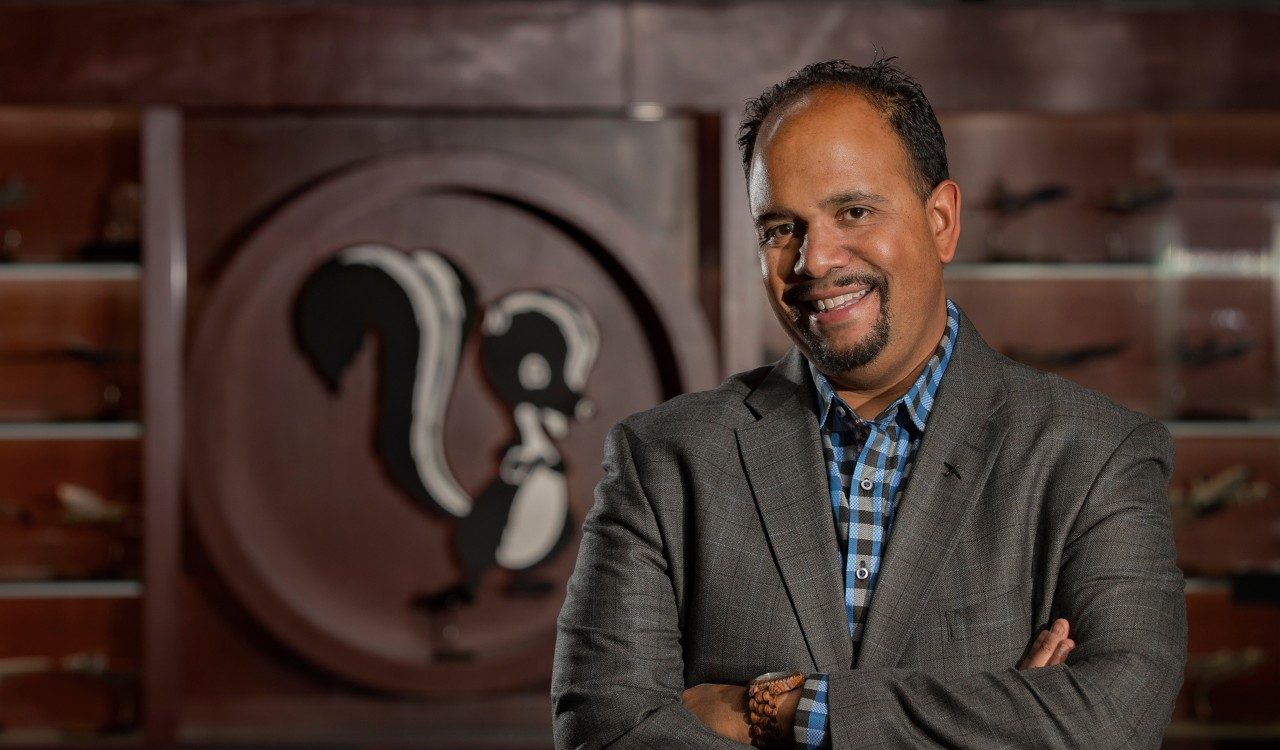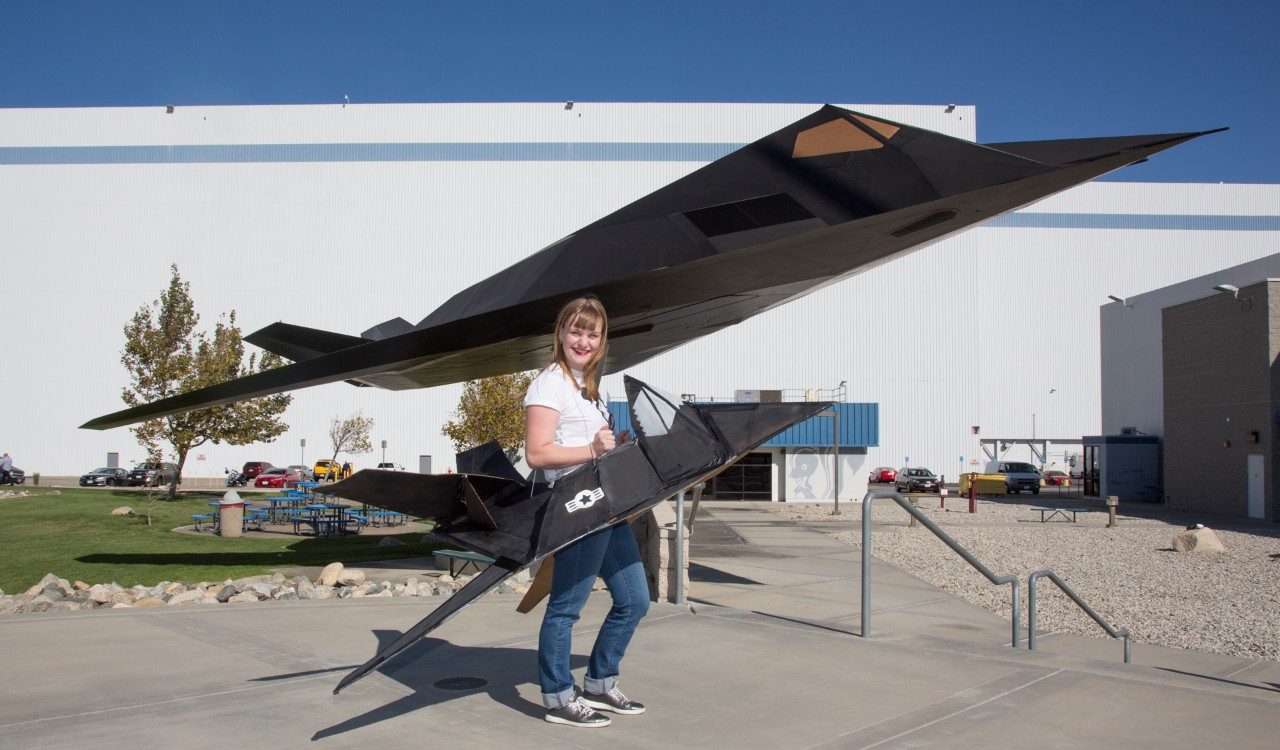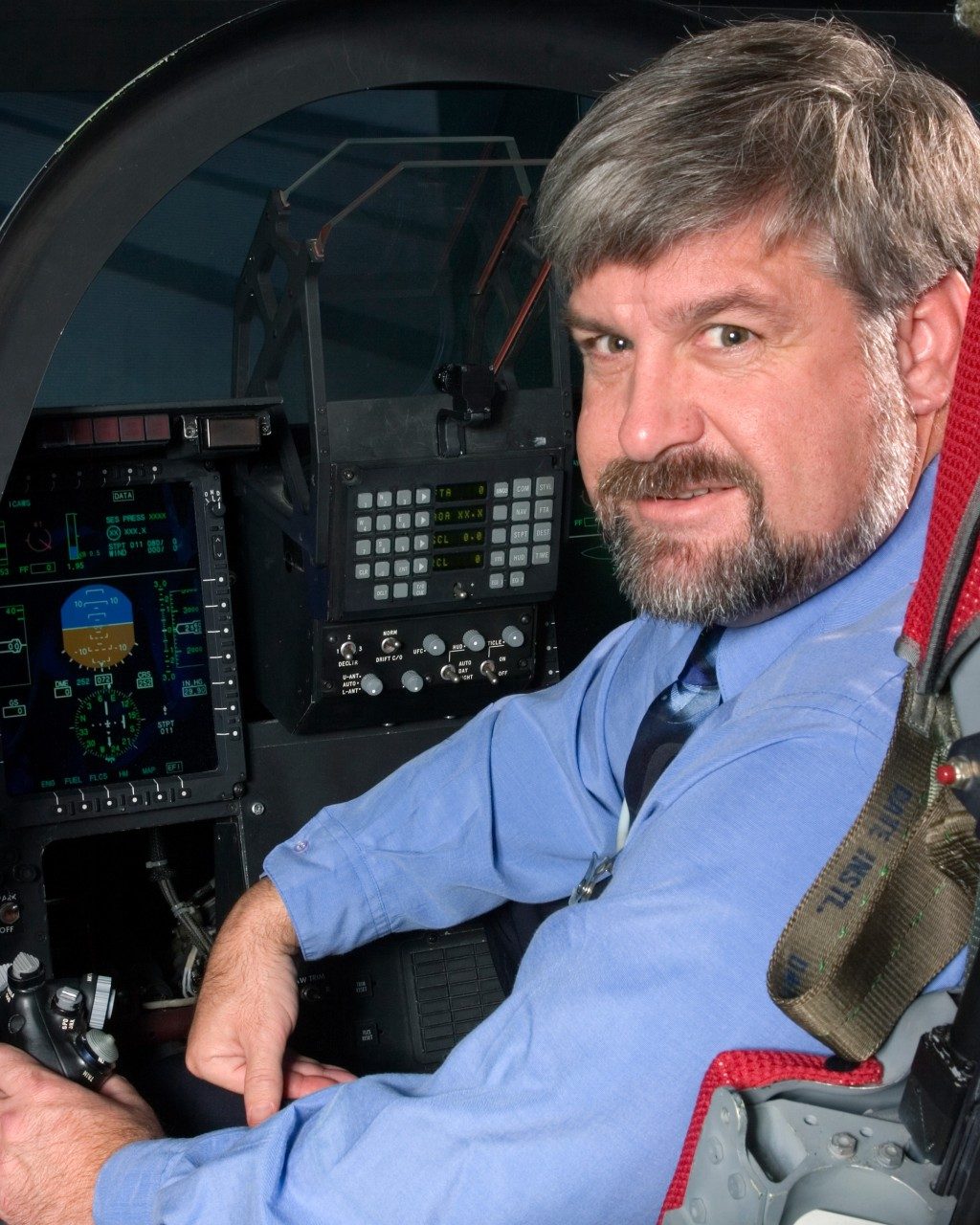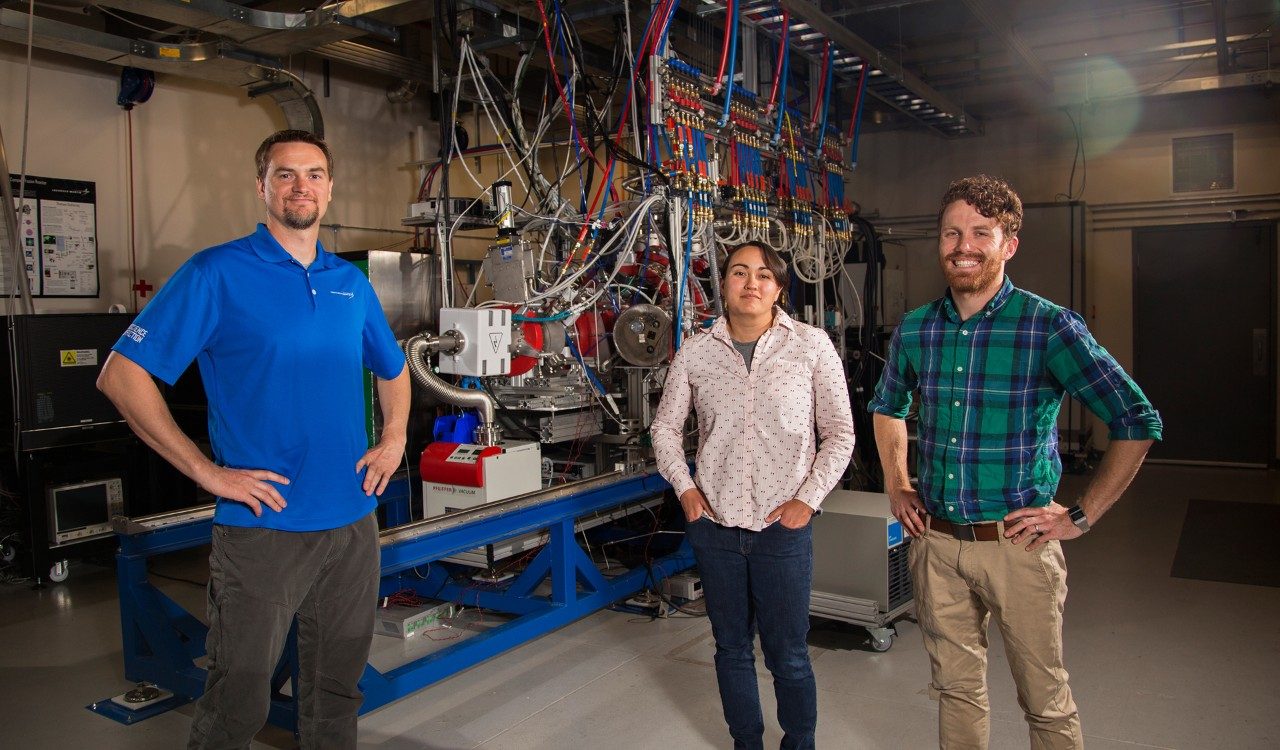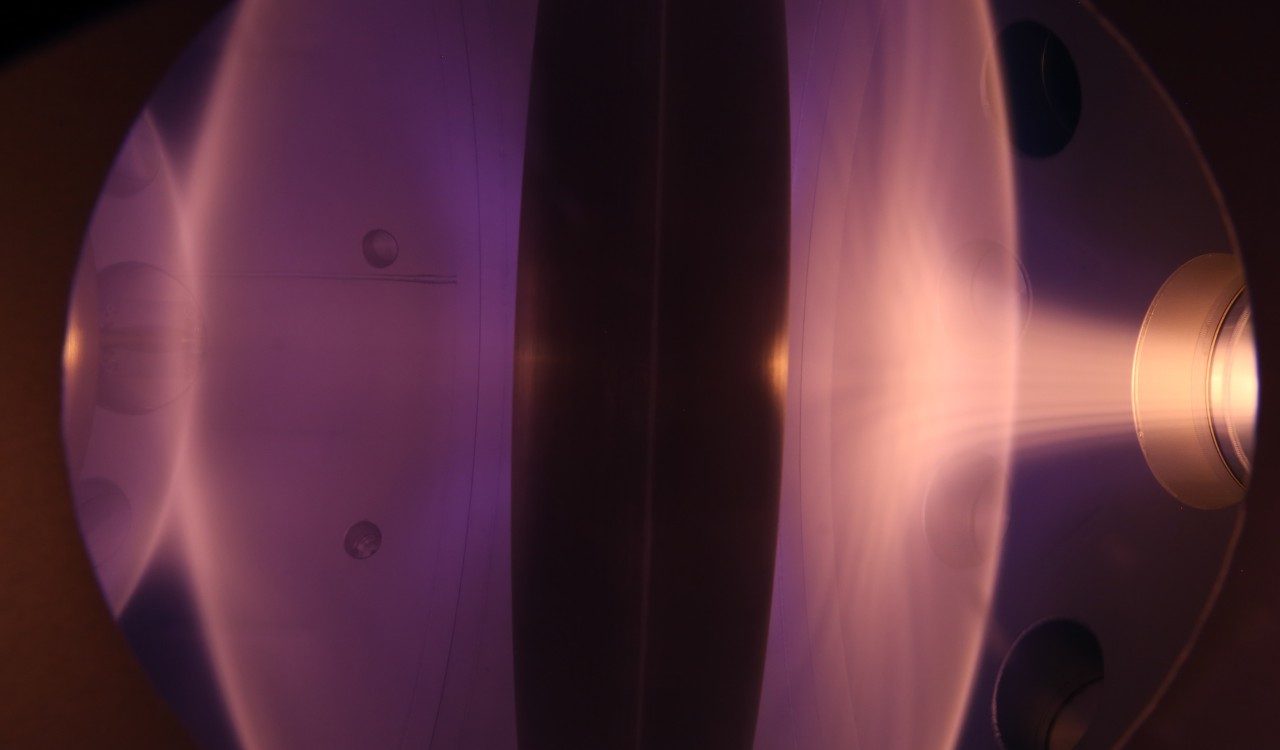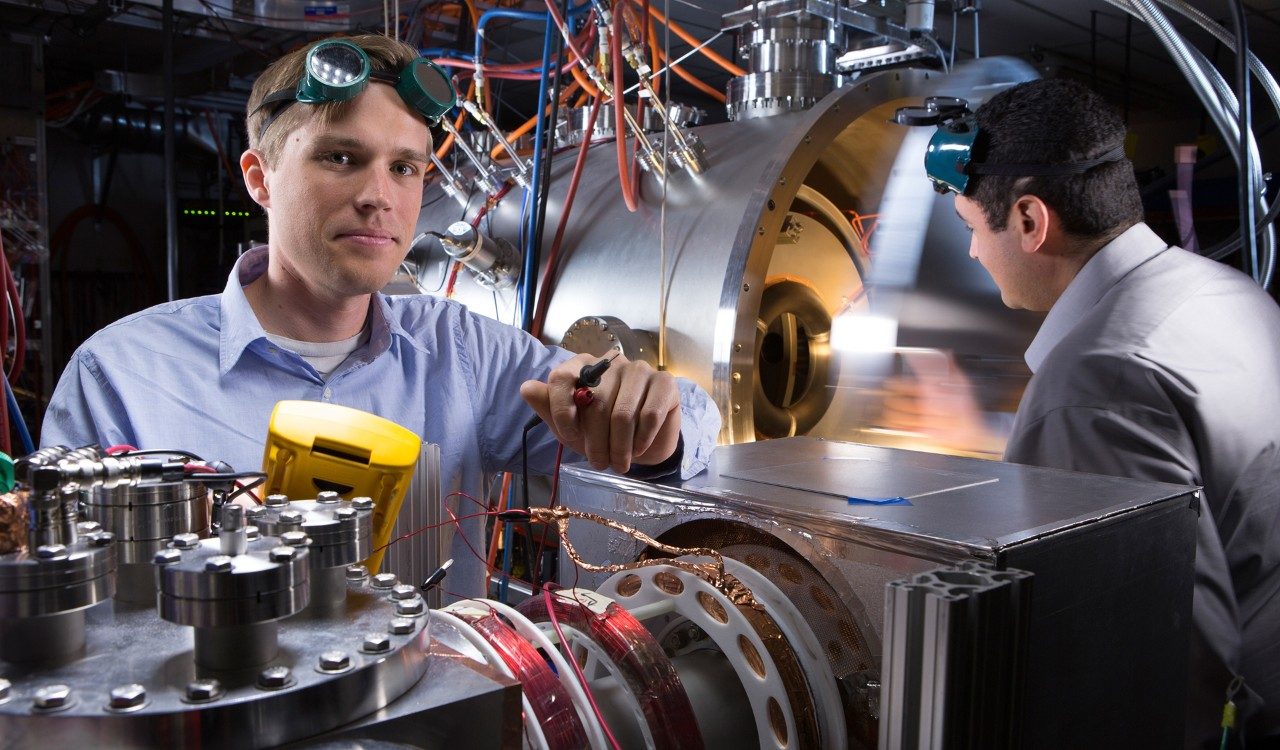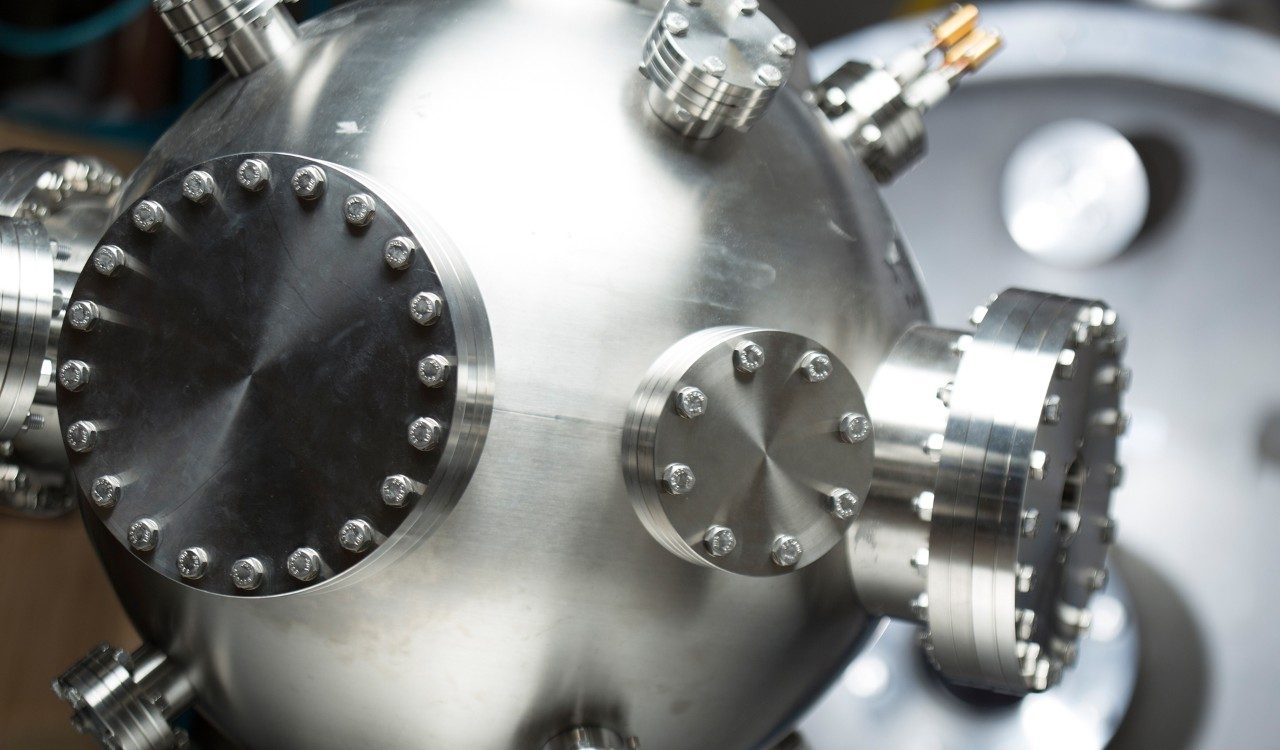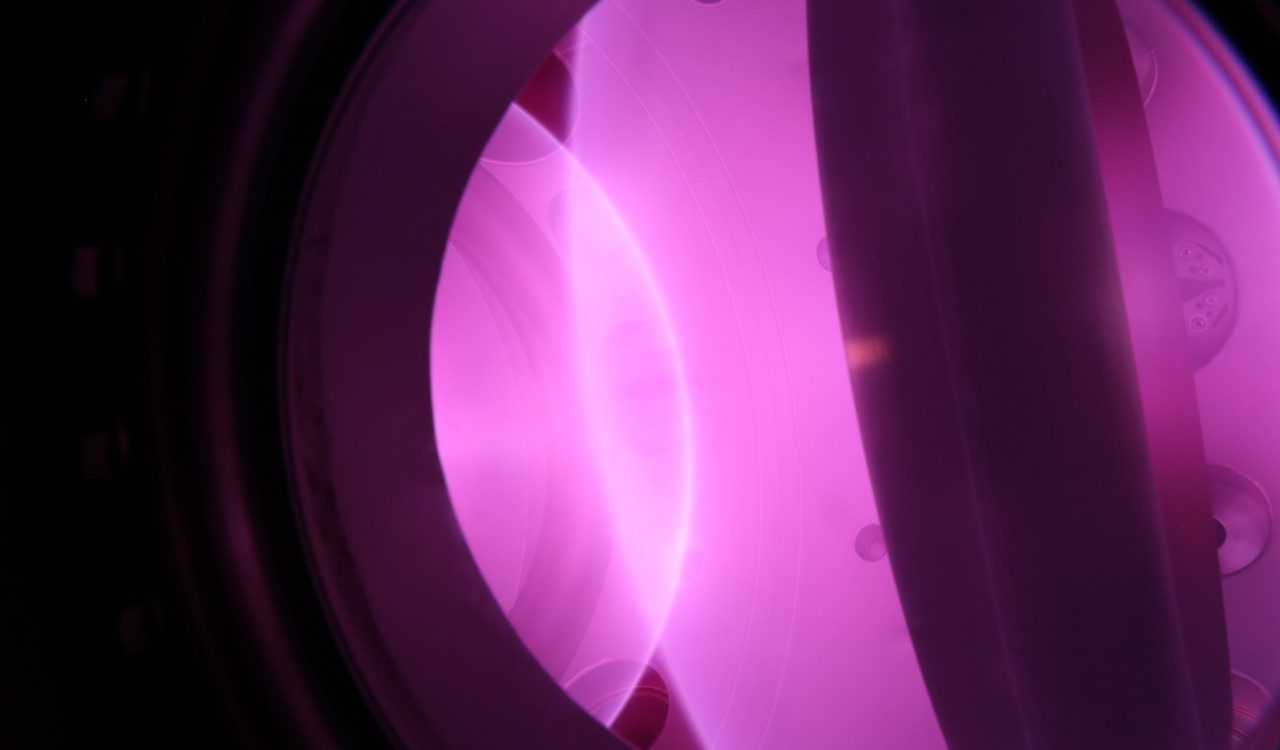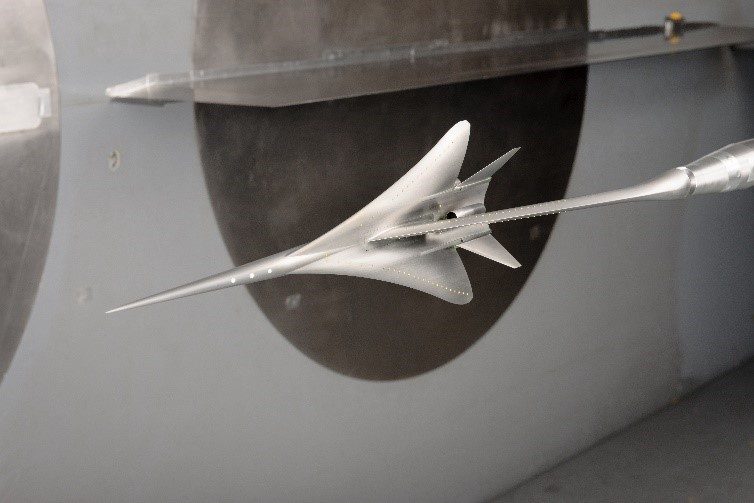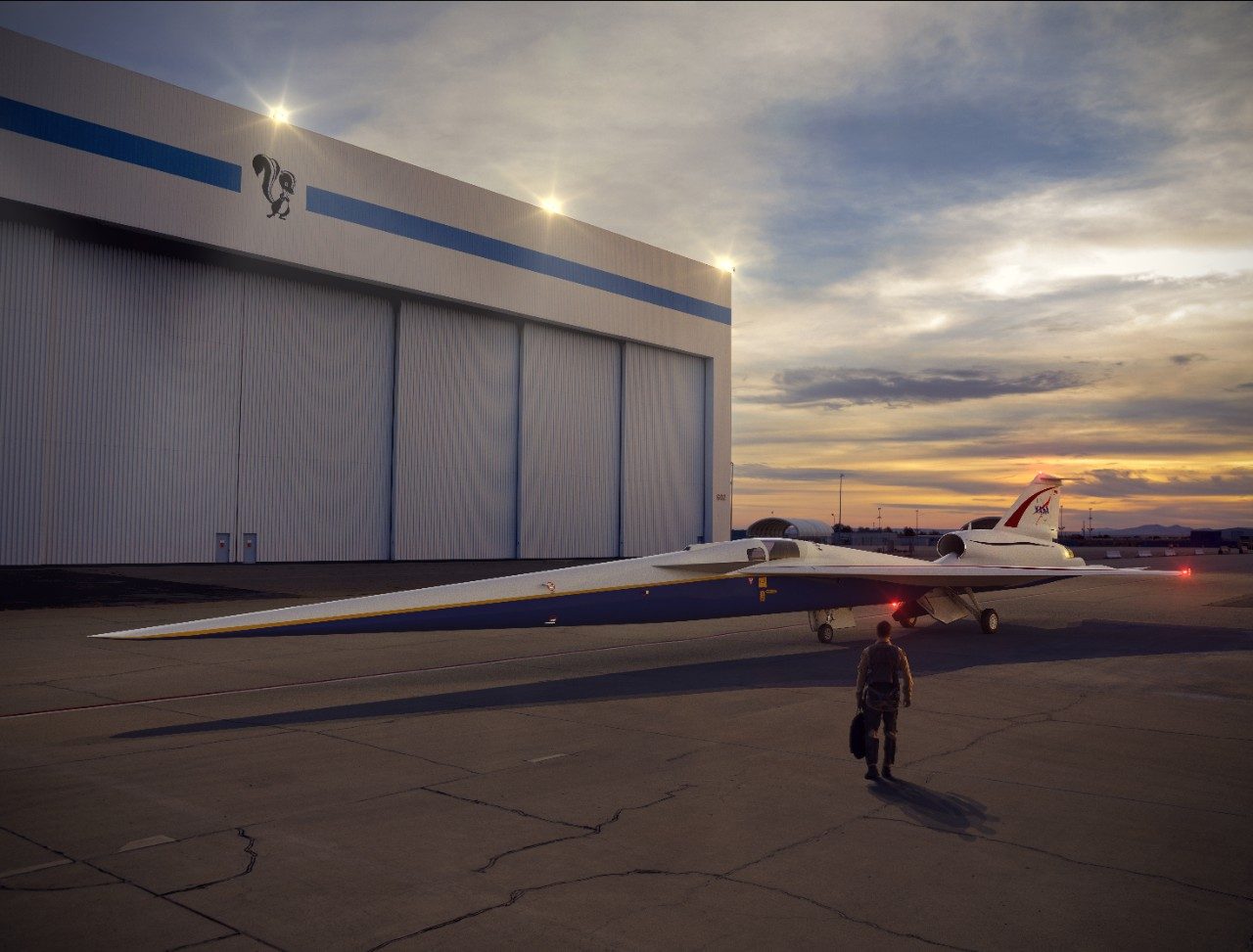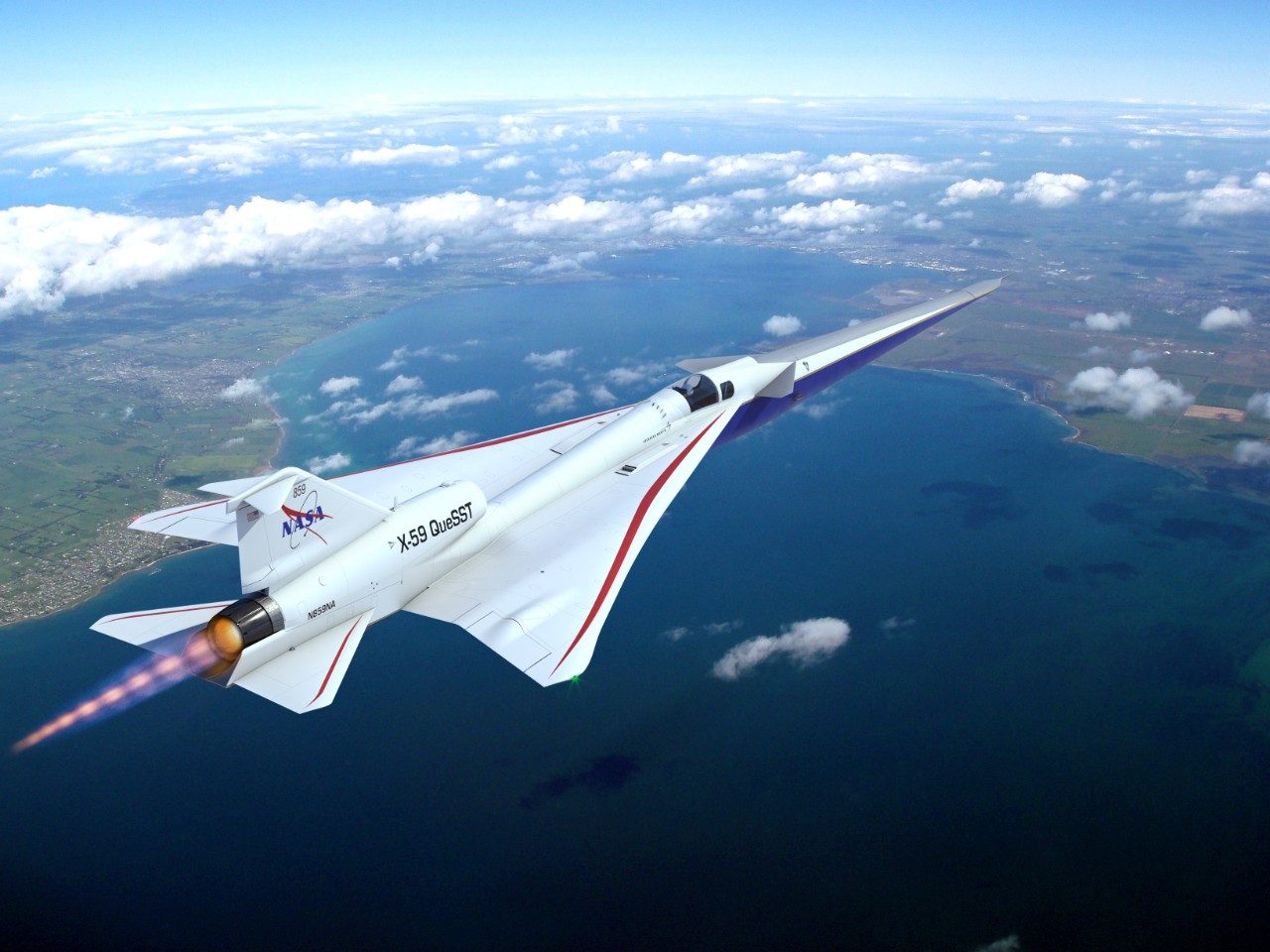In celebration of the enduring innovation of Skunk Works®, Lockheed Martin launched Inside Skunk Works, a podcast giving audiences around the world a glimpse into the disruptive innovations, dedicated people and daring Skunk Works culture founded many years ago. Available via Spotify, Apple Podcasts, Stitcher and SoundCloud.
Behind the Episodes: Season 2
Episode 1: Visioneers
Long before a new aircraft can achieve its first flight, well before the first rivet or bolt is put into place and before even the first piece of hardware can be fabricated, a new design must be created and agreed upon by engineers from a variety of fields. Each aircraft design is uniquely created to meet a specific set of parameters and requirements so that it can successfully accomplish its missions. It is the job of conceptual artists like Eric Watanabe to work with engineers from multiple fields to create never before seen designs for new and emerging aircraft technology.
“My job,” Watanabe says, “is to democratize creativity and sketching.”
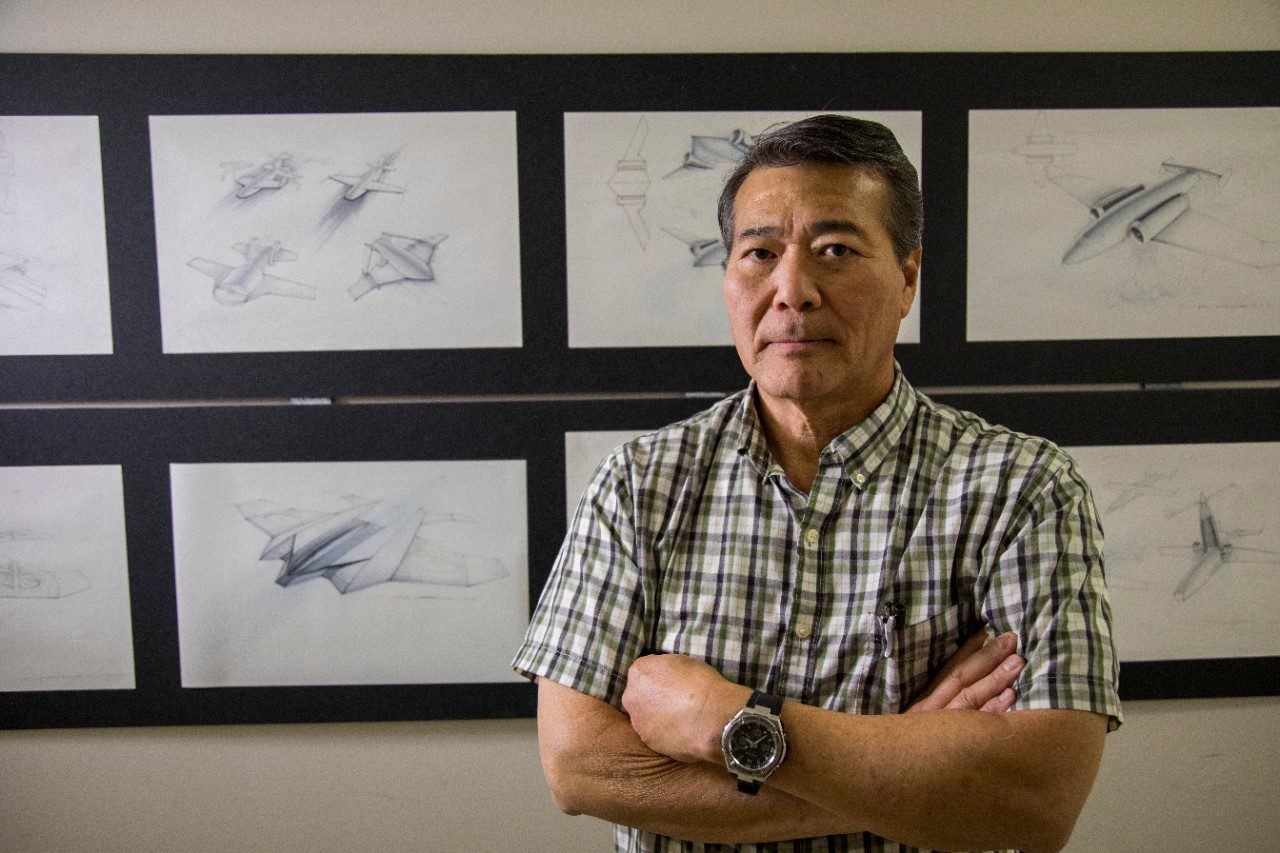
While in school Watanabe initially studied drawing, painting and graphic design but was strongly influenced by his uncle, an industrial designer for Panasonic, to pursue his own degree in industrial design. Even as a child, Watanabe was fascinated with exploring the way that things around him worked and fit together, especially machinery. Watanabe recalls his childhood toys often being the focus of his curiosity, frequently disassembled in his search to find the spark within them that made the toys seem to come to life.
“I used to love earth-moving machines - backhoes, bulldozers, cranes,” Watanabe says. “They were like dinosaurs, they all had character, they all had a voice. They’re alive. They’re monsters.”
In design, as well as life, it is important to take in and draw inspiration from your surroundings and to maintain a childlike sense of wonderment and creativity, according to Watanabe.
A new concept usually begins only as a description of its mission and the parameters that it must meet. From there the engineers will give a briefing that can include a very rough preliminary concept sketch. Then designers, like Watanabe, create a wire-frame sketch of the product that allows for the concept to be seen all the way through; a skeletal plan of the aircraft to come. At this point the collaboration across fields goes into overdrive to modify the design and build up the full design around the wire-frame concept.
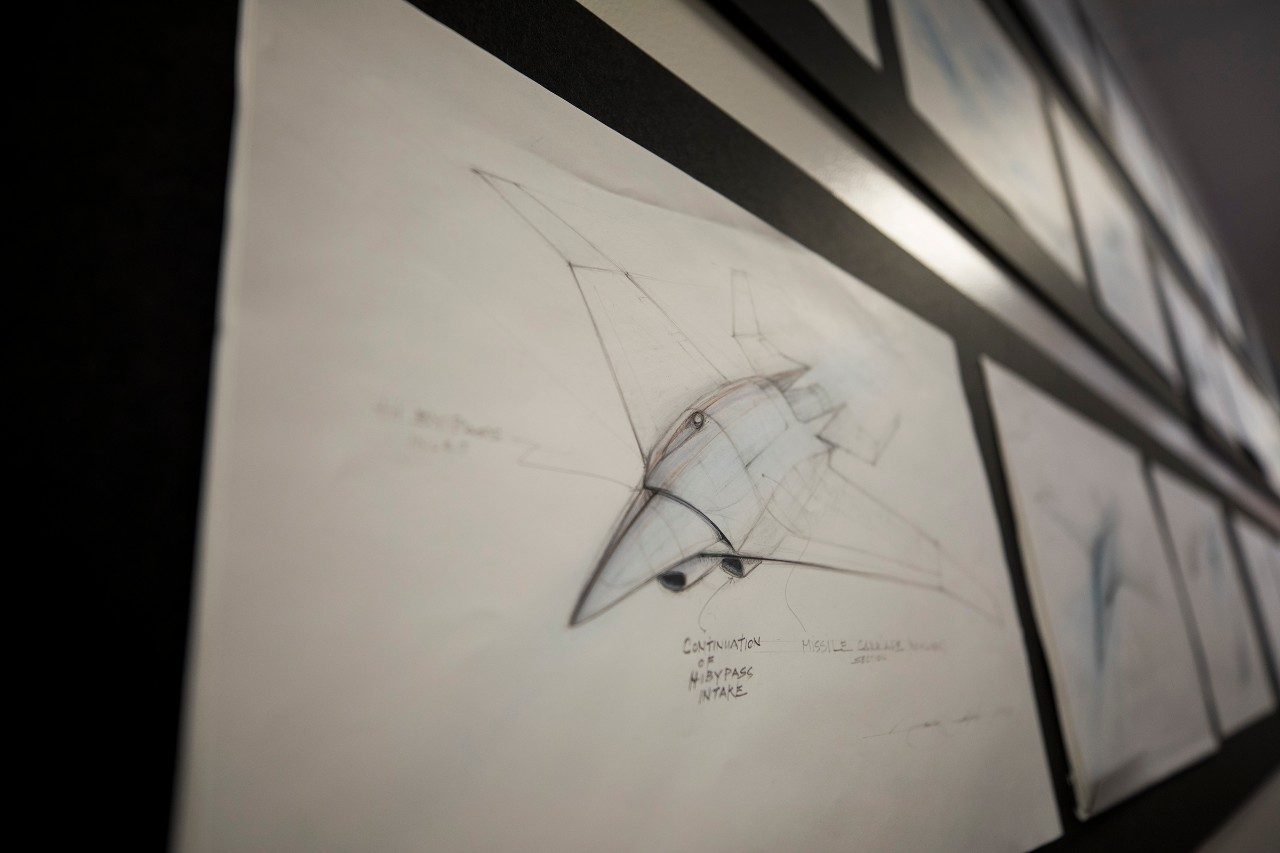
Episode 2: Wolf Pack
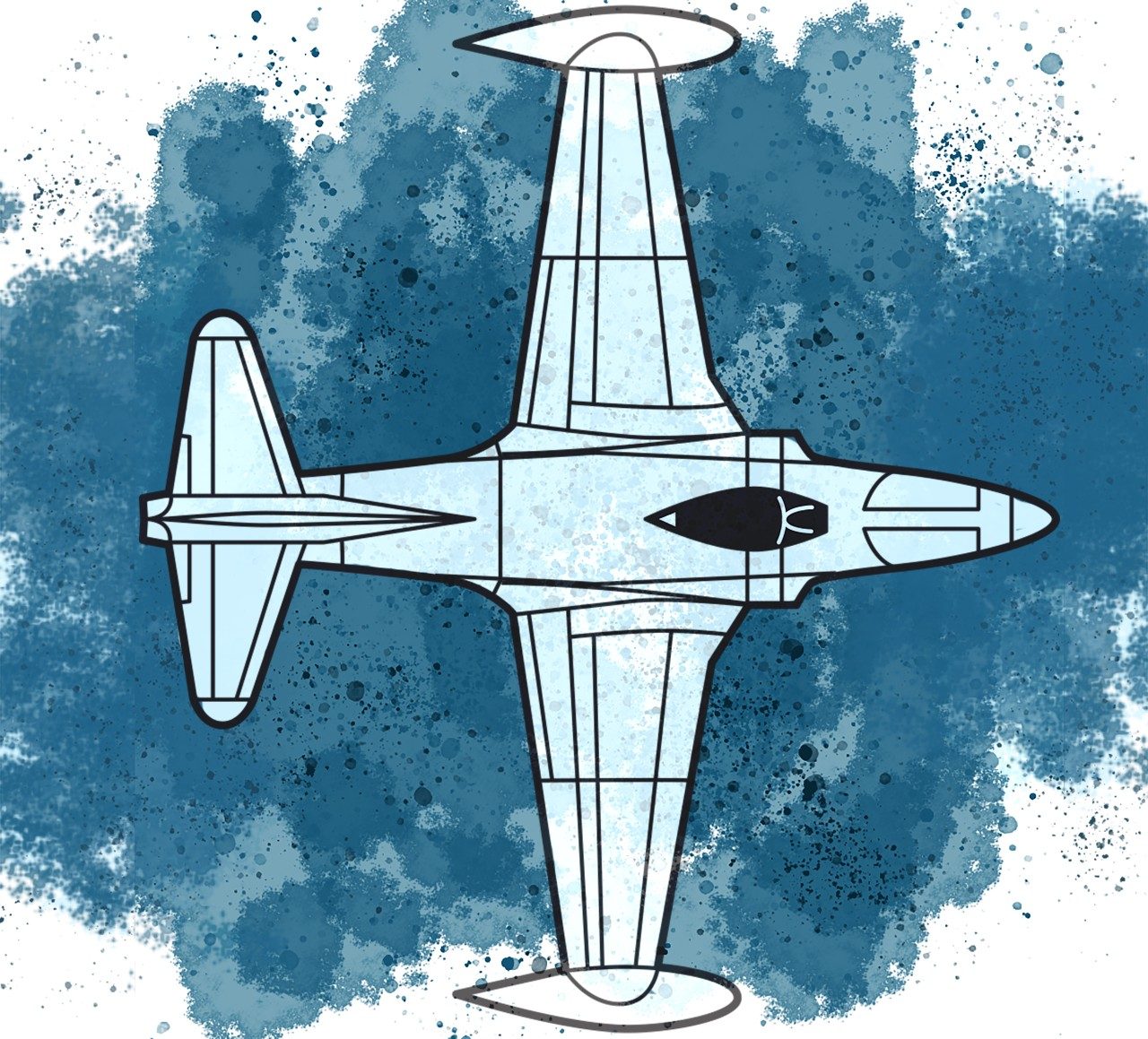
1st Gen
The first fighter aircraft to feature jet propulsion emerged in the 1940s, near the end of WWII. These aircraft traveled at subsonic speeds when flying level and were not drastically different from their propeller driven counterparts at the time. Combat engagements had to be conducted within visual range, and there was no form of radar or defensive technology within the aircraft.
2nd Gen
The advancements in technology and the ongoing tension of the Cold War saw further advancement in jet fighter systems between the mid-1950s and 1960s. In addition to incorporating new technology and afterburner, the swept wing jet fighters were now able to break the sound barrier and travel at supersonic speeds. Combat engagements still occured primarily within visual proximity, though emerging weapons systems began to pave the way for engagements beyond visual range. The anticipation of nuclear warfare and beyond-visual-range combat lead to a focus on Interceptor and Fighter-Bomber aircraft, as opposed to aircraft designed for close-range dogfighting.
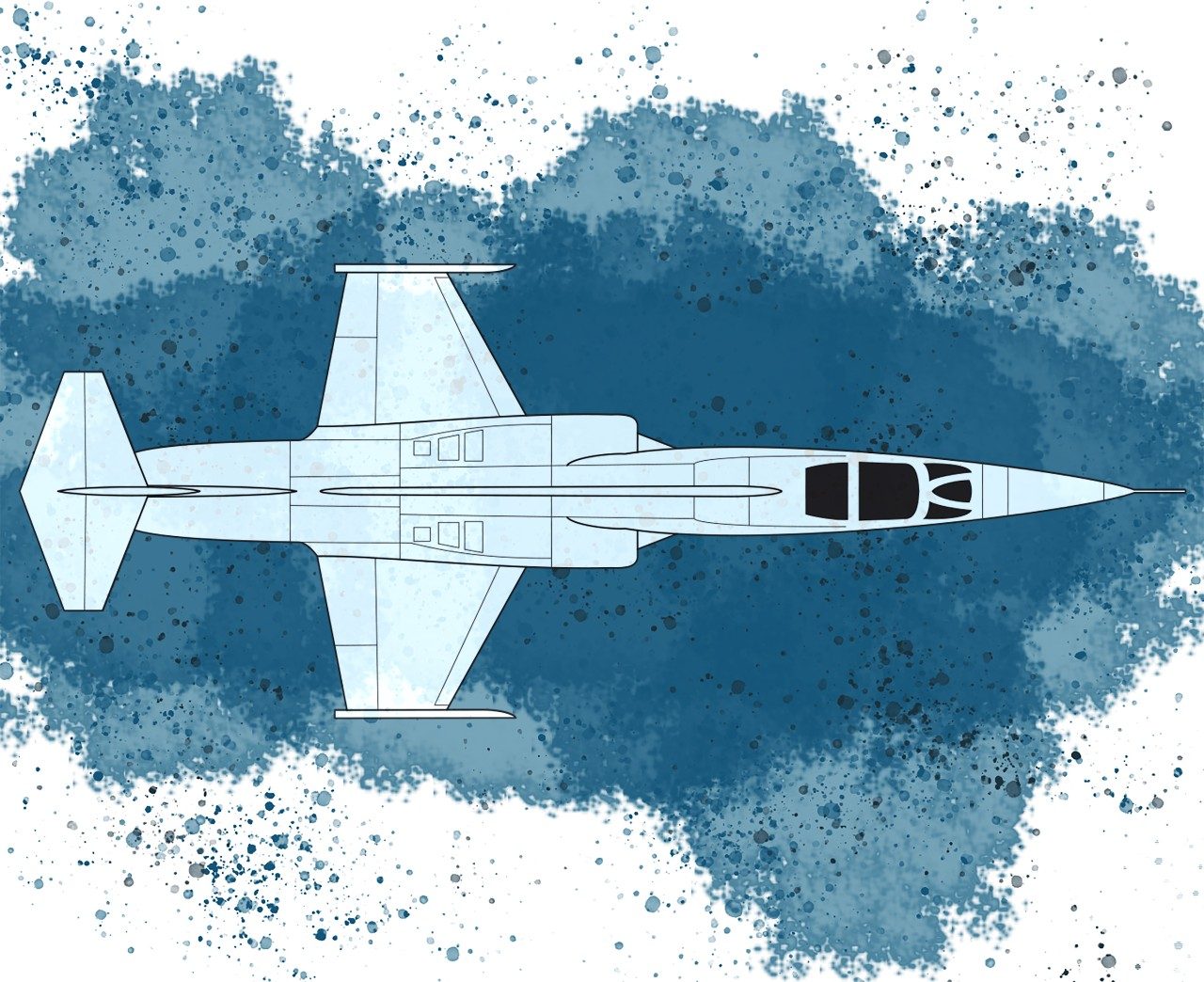
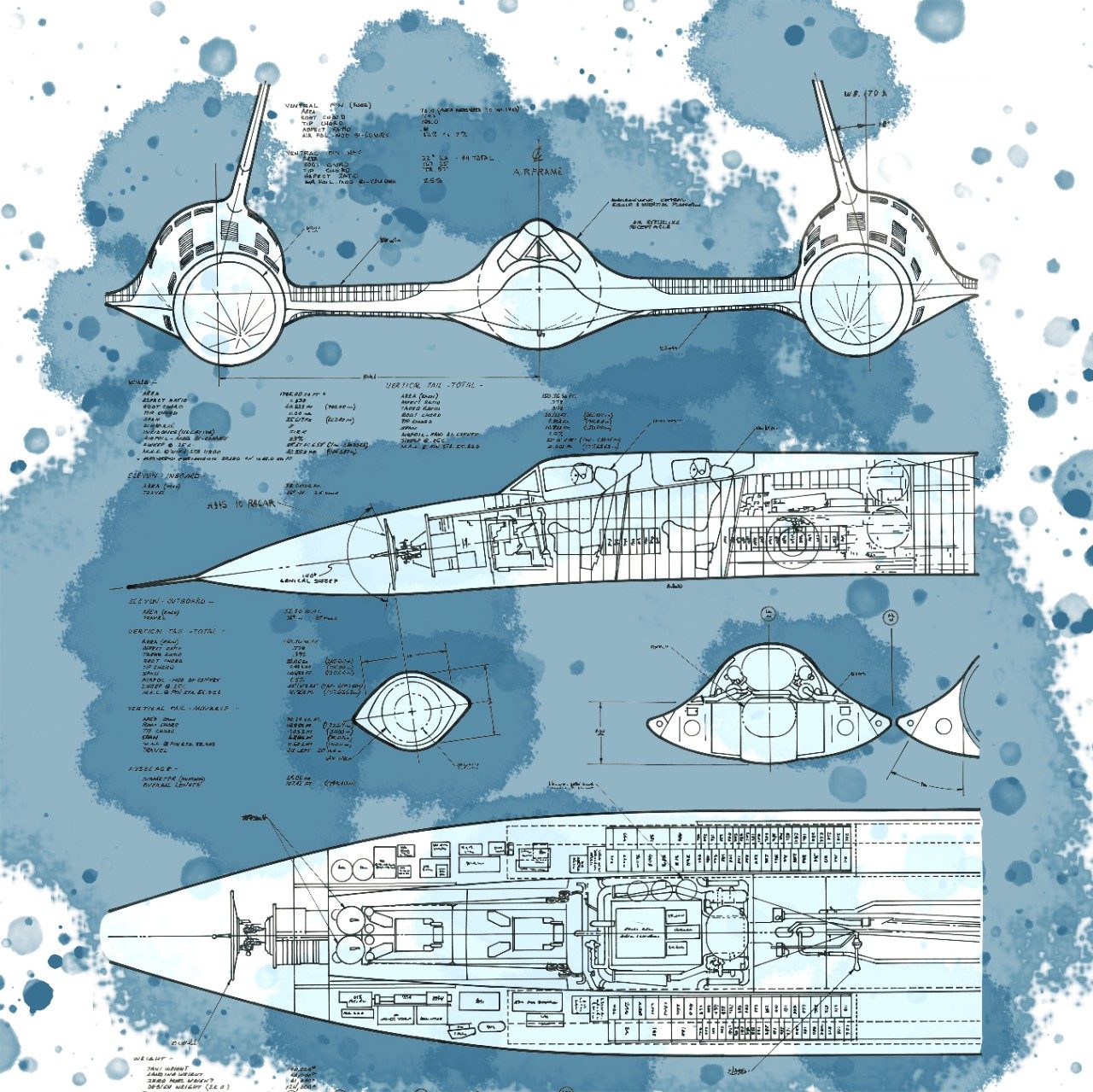
3rd Gen
There was a change in priority between the 1960s and 1970s, during the Vietnam War, and close-range maneuverability and attack capabilities became a primary focus of third generation fighter aircraft. Aircraft incorporated more advanced avionics and aerodynamic design enhancements, allowing for sleeker and more maneuverable designs. Third generation aircraft began to identify the need for “multi-role” fighters that would be capable of accommodating versatile mission parameters as needed. Evolving missile and armament technology combined with advanced radar systems allowed for more accurate engagement from beyond-visual-range.
4th Gen
Covering a broader span of time, developed between the 1970s and the 2000s, fourth generation aircraft still remain in service today. Their multi-role capabilities, or the ability to take on air-to-air as well as air-to-ground roles as needed, make them a valuable asset in combat. The F-16 became the first aircraft to incorporate a Fly-By-Wire system. FBW utilizes computers to allow for electronic control the aircraft, as opposed to the previously used hydraulic systems. In addition, use of heads-up display and hands-on-stick-and-throttle systems help pilots maintain focus without needing to remove their hands from flight controls or frequently look down into the cockpit. Advanced avionics, radar, and stealth developments also mark the improvements seen in fourth generation aircraft.
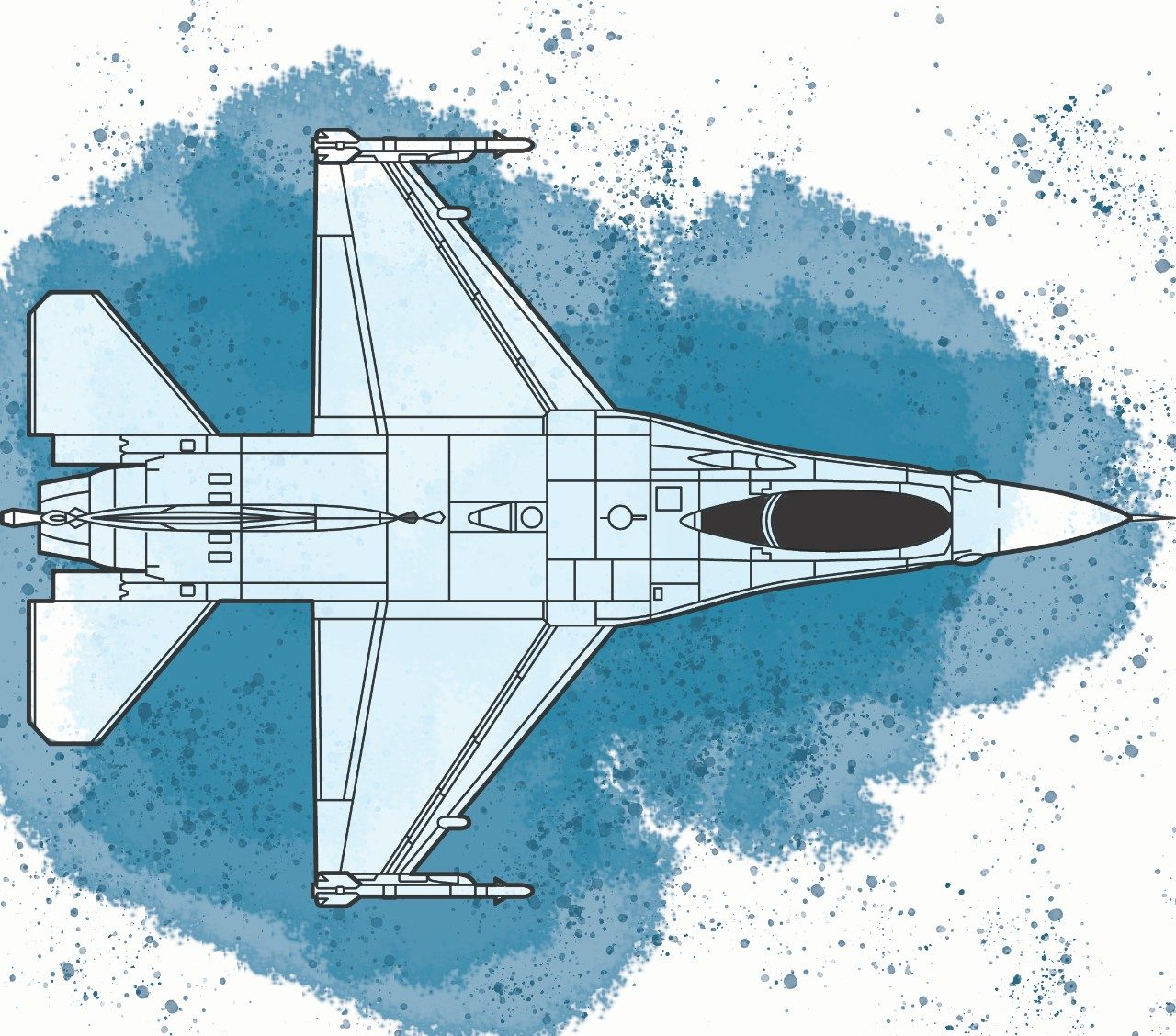
5th Gen
The current fighter generation, fifth generation aircraft, are in a state of ongoing development and production. The F-22 Raptor developed initially by Lockheed Martin’s Skunk Works program opened the door for fifth generation classification, and from there the development of the F-35 Lightning. The advanced avionics systems and engineering, high stealth capabilities and miniscule radar profile, in addition to advanced onboard computer and processing systems form a stealthy multi-role fighter aircraft unlike any seen before. An array of sensors and computer systems provide pilots the ability to “see” through the aircraft, identify threats prior to being detected themselves, and to communicate information to other aircraft via a network system, creating an advanced level of situational awareness and airspace superiority.
At the time of the F-22’s initial creation, there was no classification for fifth generation aircraft, but the newly created fighter jet certainly exceeded the qualifications of the generation preceding it. In true Skunk Works fashion, engineers and aviation experts worked together to officially create the fifth-generation classification, setting precedent for future expansions of generations as technology progresses.
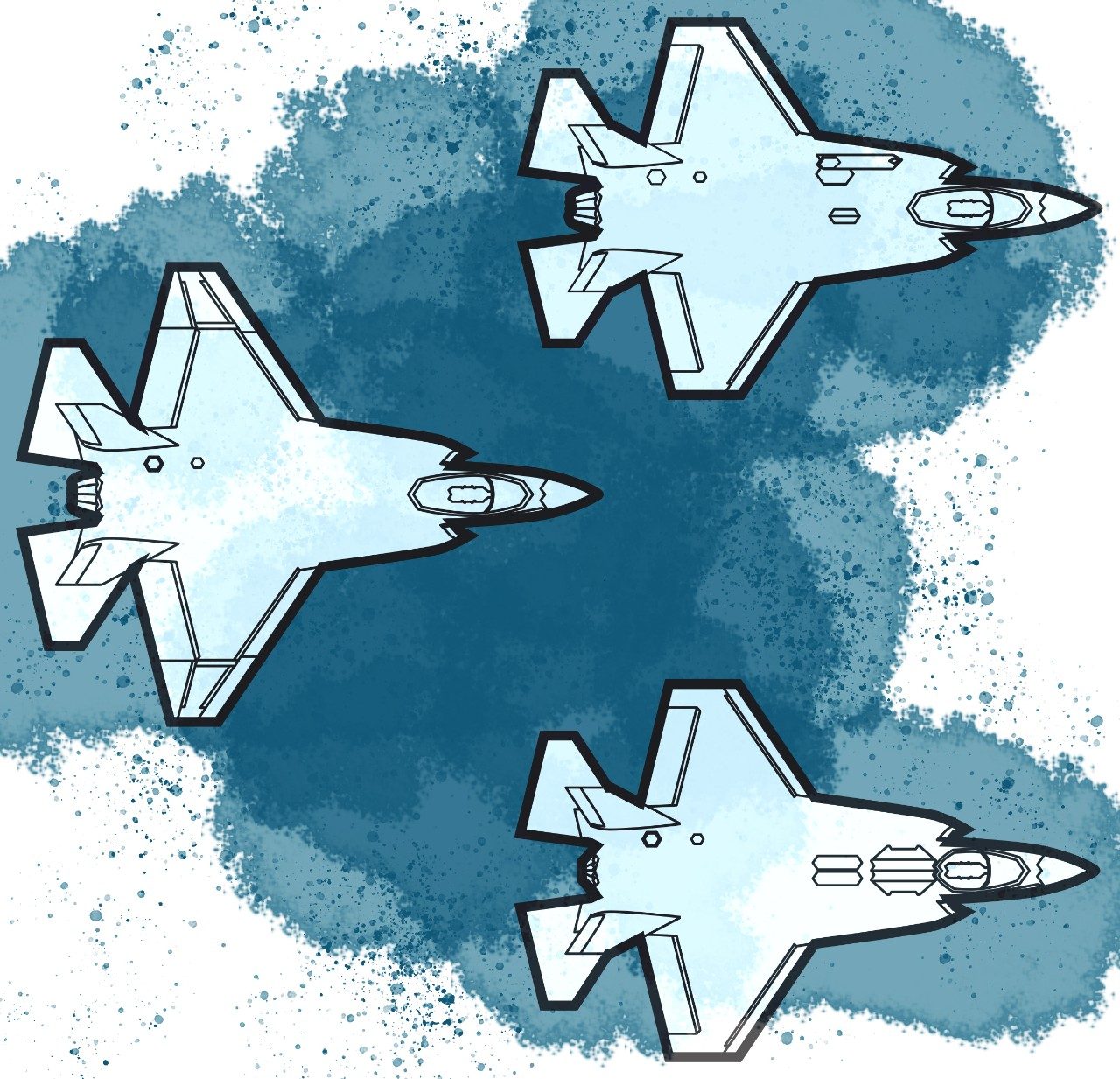
Episode 3: Trusted with Secrets
He has traveled through four continents and 24 countries, narrowly escaped rocket and improvised explosives attacks, received a Joint Service Commendation Medal, has been in a plane crash while transporting classified materials and has held a security clearance for the entirety of his adult life. It sounds like a story straight out of Hollywood, but for Ward Albin these situations are all far from fiction.
Albin joined the military early and served in the Air Force with the military police. After leaving active duty and transitioning to the Air Force Reserves he had decided to pursue a career as a police officer. In the meantime, a friend convinced him to apply for a position with Lockheed Martin, as a temporary job, while looking for something in law enforcement.
“Just on a whim I went down to Lockheed Martin and an employee directed me to where the office was that you can fill out an application and I just walked up and asked for an application, filled it out, and had a job offer later that same day,” Albin said.
With a background in security and the fact that he already possessed an active security clearance Albin’s skill were in high demand among an industry experiencing rapid growth and the emergence of multiple sensitive projects. The call with a job offer came in before he had even returned home from applying for it and he joined the security team for Lockheed Martin Skunk Works® in 1984.
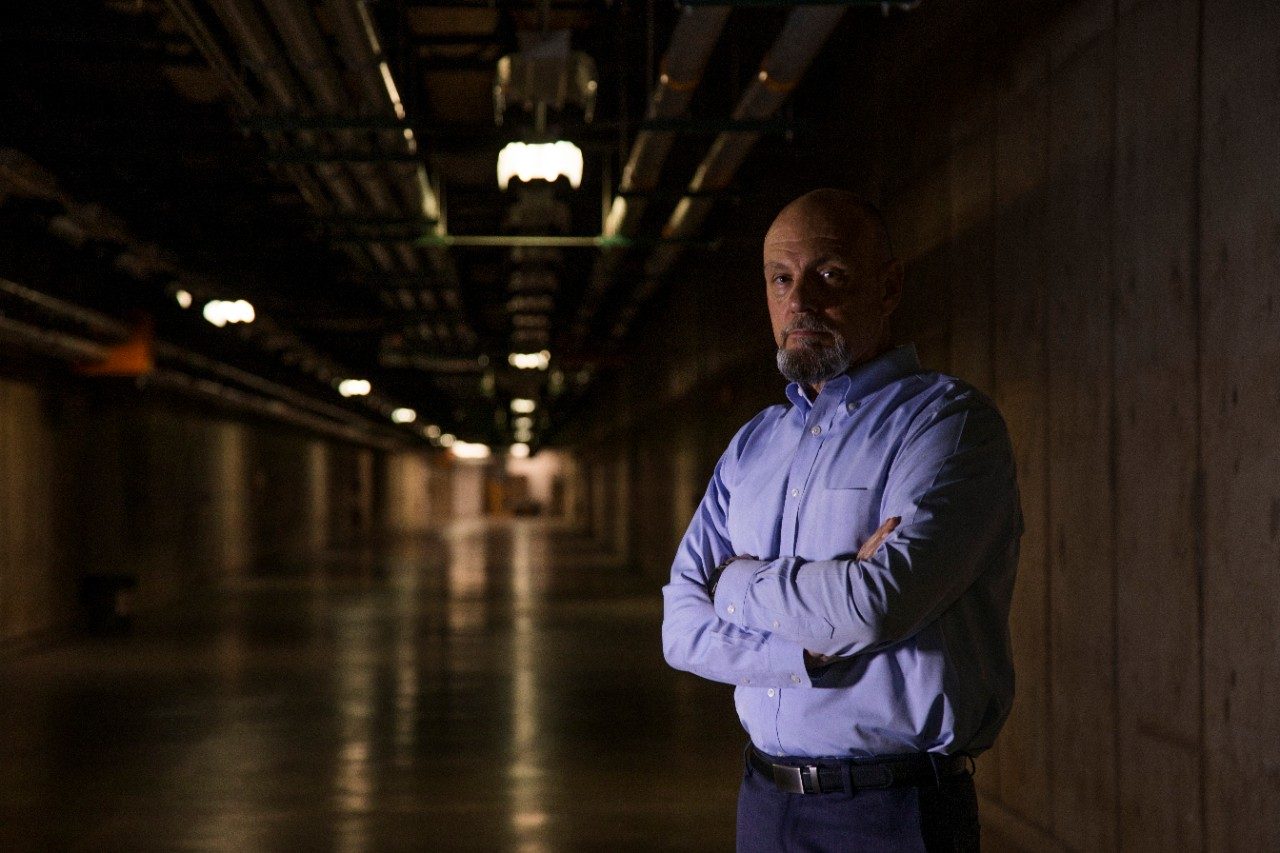
Thirty-five years later, advancing technology and ease of access to information has heavily impacted the way that security professionals, like Albin, conduct their operations. From the rapid availability of resources for stories to be checked against to the ever-increasing threats of information leakage through emerging platforms, the technology available in today’s modern world has created an entirely new security landscape than what Albin first encountered in the 1980’s.
“It’s harder. Our job is a lot harder because there’s so much information out there and everything can be checked,” he said of the new challenges facing security operations.
After his initial six months working as a security guard, working night shifts and still pursuing law enforcement options, Albin was offered a new position as a Security Representative for the Special Projects. He agreed to give it a try and soon all of his plans to change careers went out the window – he was hooked.
In addition to overseeing security operations for advanced development projects Albin spent a year working in the communications vault. The Vault, aptly named, was a room buried deep below one of the Skunk Work’s buildings secured by a thick metal safe-like door containing multiple machines and phones for relaying secure information. While there Albin assisted in securing the transmission, receipt and transportation of highly sensitive and classified information.
“We had message traffic coming in from all over the world, because we had offices and activities going on around the world,” Albin said. “My duties were to bring message traffic up to Ben Rich (the former Director of Skunk Works), selected stuff, for him to read every day.”
Transporting classified materials comes with its own set of very specific and very strict rules that must be adhered to as a matter of safety and national security, whether transporting it across the hall or across the country. No stranger to Murphy’s Law, Albin has experienced situations turning from bad to worse while transporting classified materials. One of his most memorable moments of bad luck occurred when he was involved in a plane crash while transporting classified materials at an airport that had been the scene of a drug and firearms bust only a week before.
“We ended up in the drainage ditch, and we were shaken up and a little bruised but were largely unhurt,” he said. “Our Plane had a bent prop and a damaged wing. It was interesting, as we climbed out of the airplane and out of the ditch, we were shortly met later with the volunteer fire department at the airport and the local sheriff. As we’re climbing out trying to figure out ‘well, what do we do next?’ the sheriff started to ask a lot of questions and he was very suspicious of what we were doing – of course we had these brown opaque wrapped packages along with some crates.”
With their cover story falling apart before their eyes and the prospect of arrest looming closer, they made the decision to inform the sheriff of their identities and that they were transporting ‘sensitive’ material, as well as to show him their credentials. Avoiding injury, arrest, and compromising the materials, Albin and his partner were able to rent vehicles to transport the materials across the country in time.
Albin admits that the cover story used for that particular assignment was not one of the strongest, especially taking into account the surrounding circumstances. Most cover stories are created in a way that sheds enough truth to lend the story credence but omits aspects that can expose anything sensitive, he explains.
“The best cover stories are a high degree of truth,” Albin said. “There’s just enough off that you don’t have to lie – you’re just telling them 80 percent of it, and then the 20 percent remainder you just don’t talk about.”
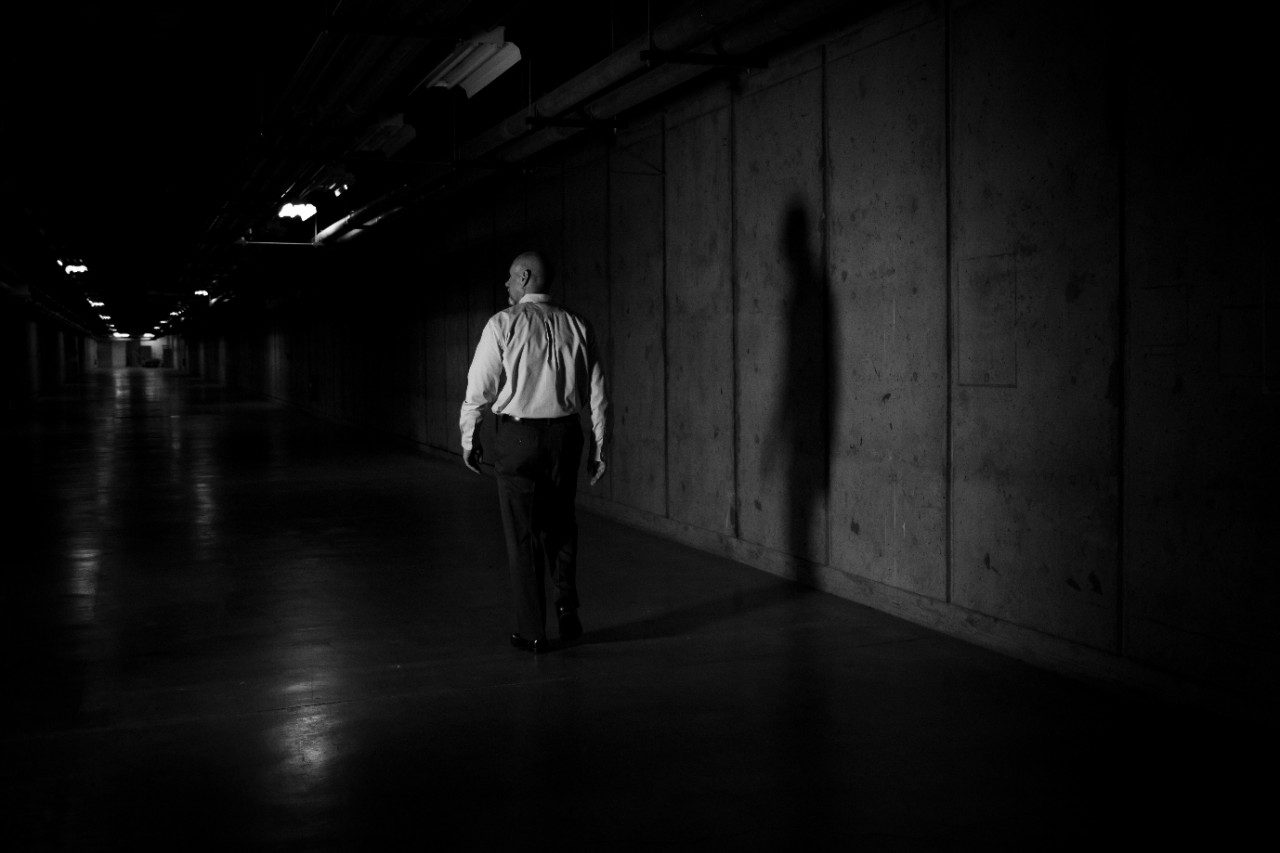
Episode 4: Dull, Dirty, Dangerous
Project “Tagboard” began officially in 1963, launching a mother-daughter reconnaissance duo unlike any seen before them. In an effort to find new ways to keep pilots safe in hostile air space following an incident in 1960 when pilot Gary Powers was shot down on a reconnaissance mission, Lockheed Martin’s Skunk Works division leader Kelly Johnson created a concept for a new unmanned aircraft system. Originally called Q-12, this new system concept aimed to fly high and fast, collecting information deep within hostile territory, and it was designed to be launched from its perch atop the back of modified A-12 aircraft.
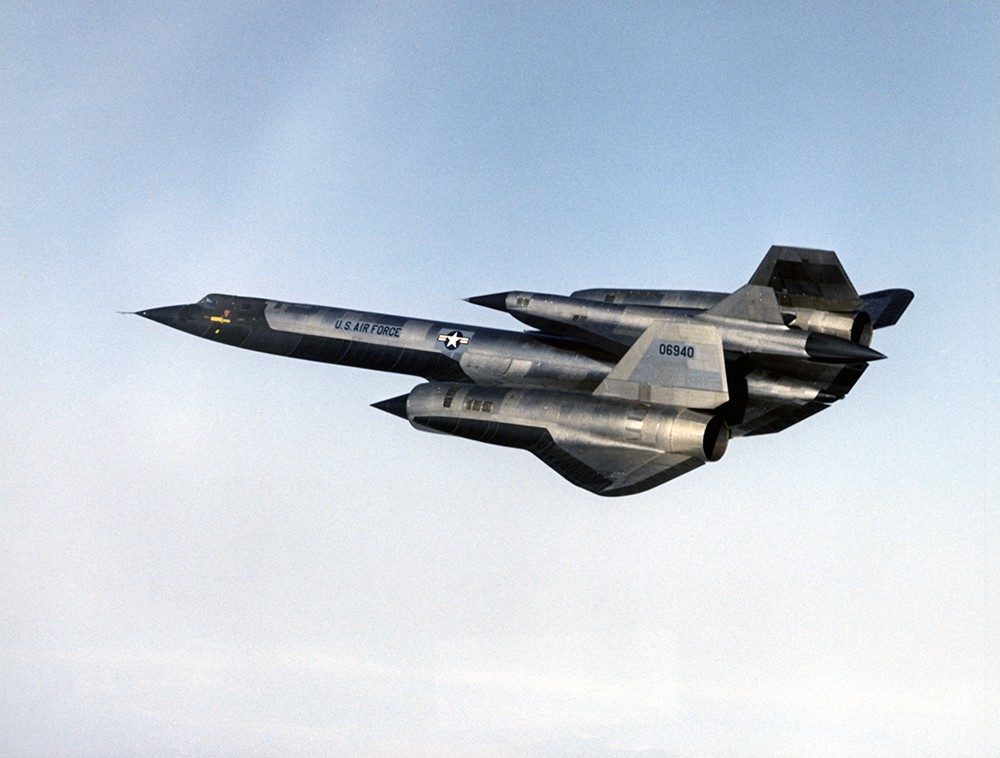
Built for the Central Intelligence Agency, the A-12 was a high-altitude, high-speed reconnaissance aircraft that eventually evolved into the iconic SR-71 Blackbird. A modified two-seater A-12 was created to launch the new drone during flight from a set of pylons mounted on the top of the aircraft. The manned aircraft and drone were redesignated M-21 and D-21 respectively because of their nicknames – “Mother” and “Daughter”.
The D-21 could fly faster than a bullet, reaching speeds exceeding Mach 3.3, at an altitude between 87,000 and 95,000 feet, and for a distance of up to 3,000 nautical miles. Rather than being remotely piloted, the drone was preprogrammed with a flight path and it operated independently following launch, making it a true unmanned aircraft. After flying over hostile territory and capturing reconnaissance images, the drone would return to accessible air space and drop its film canisters to be recovered in air by a JC-130 Hercules, using a technique developed by the USAF to capture film cannisters dropped from early satellites, or by ships in the water. Due to the nature of the areas that it would be flying into, after releasing its cargo of film footage, the drone would self-destruct.
Following a test flight mishap in 1966 the M-21 aircraft was retired, and alterations were made to allow the modified D-21B drone to launch from under the wing of a B-52 bomber instead. The D-21B had to be outfitted with a large rocket that could propel it up to necessary speeds after being deployed from the under-wing pylons of the slower aircraft. This new system of launching the D-21B underwent years of turbulent testing and the drone eventually conducted four operational missions before being retired in 1971. Despite its short-lived operational career, the D-21 remains an integral part of unmanned aircraft history and helped to pave the way for work being done today on intelligence, surveillance and reconnaissance unmanned systems.
Episode 5: Dutch 51
Transcript of Interview with Bob Gilliland, Steve Justice and Robert Gilliland - Recorded on February 23, 2019
Steve Justice: We want to walk people through some of the conversations you and I have had.
Bob Gilliland: Well, I remember one right now.
SJ: What?
BG: A lot of people out there call you the new Kelly Johnson. We have to get that in there. I bet you haven’t forgotten that.
SJ: No, I haven’t and I’m very flattered by that, that you would even think that since you actually knew Kelly, and hopefully they just edit that out and don’t use it.
BG: I hope they do use it!
SJ: (laughs)
Narration: You may recognize Steve Justice, retired Skunk Works Director of Advanced Development Programs. Earlier this year in February, Steve met up with his friend, Bob Gilliland. Every time they got together Bob would tell stories about his time as a pilot in such a cool, casual way as though everyone must understand what it’s like to fly in an SR-71 for the first time.
SJ: You know, when I told my wife about it, it’s like we’ll always leap at the chance to go out and visit with Bob and his son Robert. And of course Bob comes fully prepared. He has his flight suit with him and a bunch of memorabilia, a number of books that had the airplanes that he flew in it. It was so good to see him again and you know I’m sitting across from this guy that had more flight test time of Mach 2 or Mach 3 than anybody else. That’s the only pilot to have flown every version of the Blackbird, to have worked with all of these icons in the industry and was just as down to earth as you could possibly get. What an honor it was to be able to spend time with someone that lived what I only get to read about. I’ll carry that always.
Narration: On July 4th, 2019, Bob passed away at the age of 93. We are honored to share the stories we captured that day back in February.
SJ: People need to understand where you came from.
BG: Well I was from Memphis, Tennessee and my main interest there was not getting the Mississippi river and me in trouble. Then I went away when I was 14 to Webb’s School near Nashville and my dad had even gone there. He wanted us to get a good education and he knew that’s where I could get it.
SJ: So what year did you graduate?
BG: 1944, when World War II was still on, and I wound up at the Naval Academy.
SJ: What did you do when you got out of the Naval Academy?
BG: Well let me tell ya. I graduated but not into the Navy. I elected to go into the U.S. Air Force because they said that they would put us right into flying, and so I got sent to San Antonio, Texas. That’s where I first soloed.
SJ: So did you always want to fly?
BG: I think I thought I’d like it.
SJ: So you go into the Air Force, and do you immediately go into pilot training?
BG: Yes. After I finished up in San Antonio, then I went over to Arizona, but they had a rule over there that if you were over six feet tall or over 180 [pounds] you had to go to big bombers. And I was over on both counts. Another guy from the Naval Academy, but he was a short guy, he was ordered to go over there to San Antonio but he’d get to fly fighters there. So Saturday night I knocked on the door of the commanding officer and he was having a bunch of people there. He probably didn’t know because we shook hands and said, “Come on in.” And I said, “Well Sir, I’m here on an important thing if you’d give me two minutes of your time.” He said, “What’s all this about?” and he knew I was from the Naval Academy and I told him that I knew this other guy from the Naval Academy and I told him that he wants to go into bombers and we would like to reverse it if you can. He said, “Come and see me at 8 o’clock Monday.” So I did. And I got 50 copies of this new change of assignments and that did the job.
Narration: Bob was an experienced pilot and flew virtually every aircraft in the Air Force’s inventory. He encountered many close calls and challenges during flight and was known for successfully navigating them.
BG: One time I got up, I pulled up and went way high like that and then stalled out and I had to get it out of a spin.
SJ: Oh, it went into a spin in a T-33?
BG: Yeah.
SJ: Yeah. Ok. (laughs)
BG: I wasn’t planning on all of that!
SJ: So you’re in the Air Force. Did you move to operational airplanes at that point?
BG: And I put in for I and Jimmy Hartinger. We were big buddies in flight school. And he had put in for Fürstenfeldbruck which was north west of Munich, Germany. The other base was on the south side of Munich, Germany, so I got assigned to one and he got assigned to the other.
SJ: So what did you fly in Germany?
BG: I flew the P-47, a tailwheel with a four bladed prop.
SJ: What year was this?
BG: We got there in June of 1950.
SJ: So about 5 years after the war at that point.
BG: Yeah.
SJ: So you’re flying P-47s and do you finally get jets?
BG: Oh right away! In fact I made a comment. I said, “What’s this hunk of junk?” talking about that because I had already flown jets. By the way, I went to the Pentagon and I went into this guy’s office and the lady tried to prevent me from going to the Pentagon where I had never been before and so I talked to him and I said, “I’d like to see if you could get me to be based in the Gulf of Mexico south of the Pentagon.” And so I got assigned there and it was close to Memphis and I did get a chance to go back and forth from Memphis a little bit.
SJ: To visit family?
BG: Yeah.
SJ: After you finish flying down on the Gulf you moved up to Knoxville?
BG: My dad he called me up when I was down there in the Gulf of Mexico and says, “I’d like you to come up here and you can join the Air National Guard and help me and my work.” And so I took him up on this and called the Guard and they said, “Hell yeah! We’d like have you in the Memphis Guard.” So I was in the Guard in Memphis and then got in the Guard in Knoxville. And when I got the Guard in Knoxville I flew this airplane here.
Narration: Steve mentioned how Bob came to this interview equipped with his books and memorabilia. Bob was pointing to a photo of the F-104 Starfighter.
SJ: So this is where you flew the F-104 for the first time.
BG: Yeah, and that’s the one that let me get hired by Lockheed.
SJ: Was the 104 an exciting airplane to fly?
BG: Very much so! It was terrific! It was faster than any of the other airplanes.
SJ: How fast did you go in an F-104?
BG: Oh this thing will go Mach 2.
SJ: Did you ever go Mach 2?
BG: Constantly! It was always because of that thing that I got in with Kelly Johnson. He designed it.
SJ: So tell people what it’s like to fly an F-104.
BG: Well one thing about it you’ve got a nose wheel and tires and you got an afterburner, and so if you put on the afterburner and you don’t let the thing roll ahead it could blow a tire.
SJ: So you had to be very careful about using breaks.
BG: Yeah. Exactly. You go burner and you better have everything free to accelerate.
Narration: Lou Schalk was the chief test pilot of Skunk Works® at the time and he recruited Bob to join Lockheed.
BG: And we were in Downtown Burbank and he says, “How would you like to come over here with me?” And so I said, “Ok. Tell me about it.” He says, “I can’t.” I said, “How do I know I would like coming over there with you?” He says, “You don’t.” So that was the conversation we had. It was a beautiful day while we were driving.
SJ: Why did you decide to take him up if you didn’t know about it?
BG: I guess I knew they were doing something secret and good so that’s why I assumed that would be the case. So Kelly Johnson called me over to his office. He knew I was flying this…
Narration: Once again, that tap is Bob pointing to a picture of the F-104.
BG: So he said, “I’ve got something that flies higher than this, flies further than this,” and so then he stands up and it was just me and him in his office and he said, “Now let’s go and take a look at it.” And so that was his secret one that we hadn’t flown yet.
SJ: This was the A-12 Oxcart, the CIA [aircraft]?
BG: Yes. Only fighter pilots could fly that.
SJ: Ok. So Kelly walks you over to this hanger and you walk in…
BG: Yeah. And I could tell it was high and fast and heavy.
SJ: What did you see when you walked through the door?
BG: Nothing. They didn’t have any black stuff on it. It was 94% titanium. That’s what I could see on the first time I looked at it.
SJ: So was it still being built when you saw it?
BG: Yeah. This thing was under construction. Oh and then after that, since it wasn’t ready, Kelly told me to come on over in two weeks. And I said “Well, Levier wants me to go over to Europe again and fly for the Germans and the Italians.” And so then Kelly says, “Well, we don’t have anything ready to fly yet and it’ll be a while, so you might as well go over there again and do that.” So I did and I went briefly to Germany and then I went to Italy and so I finished up with those guys. I got back on a Sunday and I met with Kelly. We would always meet at 7 o’clock on Mondays and the very next day I got a subsonic flight in a secret area.
SJ: So the very first flight in a Blackbird you did was with one of these CIA A-12s?
BG: Yeah.
Narration: Lou Schalk, who recruited Bob, was the first pilot to fly the A-12 Oxcart, a single seat aircraft operated by the CIA and the precursor to the SR-71. Bob became one of the A-12 test pilots.
SJ: Ok. So you fly the A-12 the first time. Was it still kind of in its natural metal color or had it been painted black yet?
BG: Oh no. They didn’t have anything painted black yet. That happened later. One thing I forgot to mention that we had a different engine at first too.
SJ: Yeah. You actually had the Pratt & Whitney J75s inside that.
BG: Yeah, exactly. And so when you’d get the thing you’d accelerate on out and climb and then that’s when we’d blow engines all the time. In the beginning we would blow very frequently before we moved out of the J75s we would be able to go beyond the 3.2 Mach.
SJ: When you say blow an engine, the engine wouldn’t blow up?
BG: It wouldn’t destroy the engine. They could go back and fix it but it would blow up as far as you were concerned.
Narration: Bob is describing an engine unstart, where the compressor of a supersonic aircraft’s engine suddenly stalls. Steve describes what a pilot would experience during an unstart.
SJ: One engine stops. At that point as I remember, the Blackbird has when it’s at cruise has around 15,000 pounds of drag on it. Basic drag. And when you get an inlet unstart it’s about 7,000 pounds of drag that shows up on one side of the airplane, extra, all of a sudden. So the drag goes up by 50% on one side of the airplane causing the airplane to yaw violently to one side. The airplane would hit the pilot in the helmet on the side that the engine was still good. That’s how he knew which engine was good.
SJ: When the inlet would unstart and you would try to restart it…
BG: Generally they would restart it once you slowed down.
SJ: It would restart? Do you have any idea how many unstarts you experienced?
BG: No, I don’t.
SJ:A bunch?
BG: Yeah. It was part of the program.
SJ: Every flight?
BG: Yeah. There was pretty much an unstart on every flight.
Narration: All experimental aircraft require incremental test flights to slowly expand the operational capability of the aircraft. Every test pilot uses test cards to make sure they hit every test point. Bob flew A-12 speed runs which required he fly up toward Canada and down the Pacific Coastline. The A-12 could reach speeds as high as Mach 3.2. At this speed the turn radius is the size of a western state.
BG: We would take off and go north and so if everything was going good we would let it bag it up to a 30 degree angle and start swinging it up so you wouldn’t enter Canada. That was a no-no. Everything went really good.
Robert Gilliland: Although it would have been tempting for my father to see if he could just go a little faster…
Narration: This is Robert Gilliland, Bob Gilliland’s son. You’ll hear more from Robert throughout this episode.
RG: …he stayed exactly within the flight profile and obviously that would be confirmed by the instrumentation on the plane. And I think that that’s a trait that Kelly liked. That if he set a profile on a flight that he wanted it followed to the “T”, he didn’t want any deviations. It was too much at risk. That is the discipline that would be necessary, you know, to be a successful test pilot as well.
BG: I remember when I was way high and I flamed out that I would try one engine and look and it wouldn’t light. Then I’d bring it back and then I try the other engine. Then I kept going down and then pretty soon it was both engines. I couldn’t get a light out of any of them. In the past you would do like that and light it up and everything was normal again.
SJ: Were you going supersonic?
BG: Oh good god yes! I wouldn't be up that high if I weren’t!
SJ: Who was the chase pilot in the 104 that was following you?
BG: Oh that was Bill Skliar.
RG: And he was on his tail and as he was losing altitude and dad kept trying to get it relit, relit, and he couldn’t get it relit. And he was talking to the tower and he said…
BG: I said this looks bad. And I knew they had 30 knots on the ground too.
RG: Right. So as his nose is coming down and Skliar is going right down with him and Dad, every time he would try to get a relight he’d hit the throttle and it would flame out and finally he got one of the engines lit and just enough to get some power going and Bill Skliar…
BG: He was up under me and he said, “It looks like it’s lit now”. And so then I thought, “If I move my stick I could flame out again.” So I went and did a landing out of that deal where I was afraid to move the throttle. And so I landed downwind which was already a high wind. And then touched down I thought I better pick it up like this and slow down a bit, but I got back ok. That was a very close call because Skliar helped me a lot.
SJ: Is that the closest you’ve had to come to ejecting from an airplane?
BG: I’ll say I can’t remember having one closer.
RG: Dad, when he was doing the 104 flight tests, he had five dead stick landings in an F-104 that was another reason Kelly selected Dad for the SR-71 program as well. Because he brought them back.
BG: I had five dead stick landings in this thing. Where the engines quit and you can’t get a restart so you decide to land it instead of eject. But it’d been much safer ejecting on these things.
SJ: Why did you make the decision to try to land?
BG: Because I was flying the damn thing at first seven days a week and on the weekend I could practice a lot. As I got better at it, I had more confidence in it.
SJ: So you felt better trying to land it?
BG: Yeah and I did it too! Five of them. I don’t know anybody that did that many.
Narration: Kelly quickly heard about Bob’s successful dead stick landings from Tony Levier and wanted him to be a test pilot for the SR-71 program.
SJ: You’re one of the few people around that actually worked closely with Kelly and knew Kelly. What was Kelly like?
BG: For one thing he’s paranoid about security.
SJ: Security was very important to him.
BG: Yeah.
SJ: What was he like as a person? Was he smart?
BG: Oh yeah. When he was 27 years old that’s when he designed that other airplane during World War II that went from Burma to Berlin more than halfway around the world. He was only 27 when he did that one.
SJ: Kelly picked you to be the test pilot for the SR-71, right?
BG: Yes, the first flight on that was December 22, 1964. Naturally I would have hoped it would be me.
SJ: Because your job as a test pilot, you took risks.
BG: Sure. It’s part of the job.
SJ: Were you ever afraid to fly?
BG: No, never.
RG: I’ve asked him before, what’s the difference between a test pilot and a regular pilot? And he said, “Well the difference is that most pilots don’t incur emergencies on a consistent basis. Test pilots have to make life or death decisions constantly. You know, one of the things about the SR-71 program that my father did not know on the first flight that it was a milestone program, that is the Department of Defense was going to pay Lockheed a bonus if they could get the first flight of the Blackbird, the SR-71, before January 1 of that upcoming year. It was about month or so before the first flight and Kelly Johnson came up to my father and asked him, “How do you feel about going wheels up on the first flight?” One thing that my father was very good at was that he would always want to talk to the engineers, the different engineers that were involved in the different aspects of the airplane’s design and development, so that he could get a good understanding of what the airplane could and couldn’t do and understanding all the mechanisms and the workings of the aircraft. But he felt very confident in the ejection system so he told Kelly, “I’m fine either way.” And in this case, the SR-71, if the airplane’s landing gear did not retract as needed, then the pilot would have to eject. There’s no bellying in this airplane. And then you lose your prototype aircraft, you’ve lost millions of dollars, and you’ve set the program back years. So when Dad said, “Sure! I’m fine with it.” Kelly said, “Well hmmm… Let me think about it and let me get back to you.” And about a week or so before the first flight he said, “We’re going to go wheels up.” By going wheels up, Lockheed would get another bonus and if they went supersonic on the first flight they would get another bonus. And so before the first flight, they have a card and Kelly set forth the parameters of what the flight would entail and what would be accomplished on the first flight.
BG: So Kelly came up in his two engine Jet Star and then in this case we had three chase pilots. So I taxied out and parked and got in position and then we all rolled down the runway at the same time and took off and went up to about 25,000 feet.
Narration: Bob flew north up over Mammoth Lakes, California.
BG: So I got over the mountains, because even then it drops a sonic boom. So I went burner. Every time you go burner in this airplane one will hit but the other one won’t so you go like that and when you both got them you’d accelerate. So when I got up to around 1.8 Mach that’s when I got a problem.
Narration: A red light flashed on the instrument panel indicating the canopy was unsafe, so Bob pulled back the throttles and analyzed the problem. He turned to his right and left to determine if the canopy was secured properly. He determined that the air over the canopy was causing it to lift just slightly. A micro-switch triggered as if the canopy was raised during flight. He determined the switch was giving a false reading and that the canopy was indeed safe. He accelerated and ignored the flashing red light.
BG: So I came back and reduced it to minimum burner. And it slowed down from 1.8 down to .04. So I looked to see what the hell was causing that and then I went burner again. At first I thought,” Well this is the first flight and I think they’ve screwed up maybe the way they put the gauges. So I lowered it and I went all the way up to 1.5….
Narration: Robert told us that Bob later commented that if the canopy had in fact blown off, the engineers on the ground would have been very upset asking him, “Why do you think we put that big red light in front of your face?”
BG: ….and there was no problem. When I came back reduced power and Kelly says, “How is your fuel?” And I said, “Fuel’s fine sir.” Kelly said, “Well how about a fly by?” And he had a bunch of people on top of a building and so we just did a nice fly by. Then Kelly says, “How’s your fuel now? Says, “Fuel’s still good sir.” He says, “How about another fly by?” So we did another fly by like this. He had a couple generals there and they wanted one more fly by so we did that but then we had a malfunction and we started leaking fuel and it was leaking out big time so I came around and landed in a hurry. We were real happy that everything had gone good.
RG: When he did the last flyby with the SR-71 in front of Kelly as was requested with the generals, and it started dumping fuel it was a white stream coming out of the tail.
BG: Right.
RG: And one of the generals nudged Kelly and asked, “What’s that?” and Kelly had the embarrassment to say, “Oh it’s just a minor little problem.” But he had later told Dad that, “I wish I hadn’t asked you to make that last flyby.”
BG: (laughs)
RG: “Because it was a little embarrassing with the General nudging me like that.”
BG: Yeah.
Narration: Robert, along with his mother and sister, was actually present for the first flight as well.
RG: My mother got a phone call from one of her friends who was married to one of the employees at Lockheed in the Skunk Works®. To inform her that the flight was going off today. My mom of course knew my dad was a test pilot and worked for Lockheed and she also knew that he was flying something very super secret that he wouldn’t talk about. My dad had told her that he was flying something that he couldn’t discuss but that it would be going off very soon. And so my dad in advance previously told my mom that if she’s able to come out and watch the first flight, this is where I want you to park. So on that morning my mom got the call and she drove over quickly to where the flight was to take place in Palmdale and parked where my dad had indicated. And I was there and my older sister Ann. And so I was just a little guy at the time, I was only 2 years old, my sister was 4 years old. But what happened was when Dad, he rolled out to the end of the runway and then just sat there, there was a 104 behind him just idling and 2 104s were just circling overhead waiting for the rollout down the runway. And when he came overhead at least by the side where we had parked, my mom had recounted to me that my sister and I immediately were just terrified of the loud engines. I think we were both probably in tears at that time and when he came screaming overhead and my mom was there and she said the tears were just rolling off her face. Willing the plane off the ground so to speak. And you know, Dad disappeared off into the horizon.
Narration: Bob received a signed photo from Kelly for successfully completing the first flight.
BG: He put down in the lower right hand corner “To Bob Gilliland. Thanks for a fine first flight.” And then he signed it. I showed that to Tony Levier and he says, “Hell, I made several, a bunch of first flights for Kelly Johnson and he never wrote anything like that for me.” (laughs)
RG: At one point we lived in La Canada Flintridge which is down the hill over from, you have to go over the Angeles Crest Highway, it’s about a 45 minute drive and then you drop into Palmdale where Dad would have to have those 7 a.m. meetings, bright and early. And so he had this Mustang and it was very, it was a new Mustang, very fast and he’d go zipping around over the hill and down into Palmdale to make sure he wasn’t late for Kelly because he said, “Whatever you did, you didn’t want to be late for a Kelly Johnson meeting that’s for sure.” But I remember one day I was sitting in his car and I was in the passenger seat and I punched the glove box open and all these yellow tickets came flying out and I realized at that point when you fly at Mach 3.2 in the world’s highest and fastest airplane it takes a little getting used to go slow again when you’re in your car.
SJ: How did the name Dutch 51 come to be?
BG: That was from the Pentagon. They told you what your code number would be.
SJ: Really?
RG: Each of the pilots all got, you know, all of their call signs were ‘Dutch’ and it was either 51, 52, 53, or whatever. The irony I think is funny is that that Dad’s call sign was Dutch 51 and he flew out of Area 51.
BG: (laughs)
RG: He got a lot of questions asking if that was intentional, but I think it was really random that he just ended up with Dutch 51.
SJ: What did it feel like to be able to talk to people about the Blackbird for the first time out in public. Do you remember doing that?
BG: I would be careful who I, I was used to doing things that were secret. So I just would just keep it a secret as far as I was concerned.
RG: When you’re younger you don’t tend to appreciate the accomplishments of your parents. I knew he flew this black airplane that was really fast and I just thought it was normal. And all the friends that would come over to the house when I was a kid were astronaut and test pilots. So it seemed very normal to me. This is just his job, this is just what he does and there wasn’t anything super amazing about it. Although I do remember one occasion when I was at one of my friend’s homes and we somehow got on the subject of my father, talking about how he flies, and that he flies this black airplane that goes so fast that he can fly faster than a 30-06 bullet. And I remember the parent looking at me like smiling you know with this kind of look like. “Oh isn’t that, what a creative imagination he must have.”
RG: But I just growing up in kind of this shadowy world it was very different, very interesting. And as I got older I got to appreciate it more. Although he did all these amazing things and flew in the world’s highest and fastest airplane, nobody knew about it because it was top secret it was not to be spoken not to be discussed. So he really didn’t attain fame or recognition for what he has done until much later in his life.
RG: It’s very kind of strange in the way that he’s my father and yet I see this American aviation icon. But I look at him as he’s just my dad. He’s just my father that was I think in the right place at the right time, who happened to have all the skills necessary to accomplish the job.
SJ: Is there an airplane that you didn’t get to fly that you would have liked to have flown?
BG: Well I’m sure in mat earlier day I would have taken up a bunch of them if I could of.
SJ: What kind of airplanes did you want to fly? Fighters?
BG: Oh yeah. The fighters! The world’s best.
SJ: The world’s best.
BG: Yeah, but you don’t see anybody, you don’t see those at 85,000 feet. There was nothing comparable that could go 3.2, that’s the maximum speed of the airplane and when you’re going that fast you’re going fast at 85,000 feet going big time.
SJ: What was the view looking out the windows of the Blackbird? I know you didn’t look out much.
BG: Well I was all enthralled with flying the airplane. You know I like doing that. I was doing what I wanted to do. After all, that’s why I left Tennessee and I went all the way over to Lockheed in the first place.
SJ: Let me ask you this. You and I have talked about this before but, you are forever tied to history. When you reflect on being the first person to fly the Blackbird and know that forever your name is going to be tied to that, what goes through your head? Are you humbled by it?
BG: Oh grateful I was in the position to do that. Still am.
SJ: Very proud of that?
BG: I just think I’m lucky to have done it and I would have done it the same way if I had it to do over.
Narration: Inside Skunk Works is produced in Palmdale California and Fort Worth Texas. We want to extend a thank you to Bob’s son, Robert Gilliland, and his family for making this episode possible. For a full transcription of this episode visit LockheedMartin.com/InsideSkunkWorks.
Episode 6: Faster & Faster
Eric Knutson: It was the late ‘50s, early ‘60s, rather the Air Force and NACA at the time, the predecessor to NASA, that created a series of aircraft that would go very fast, the X series, all flown in the Antelope Valley, ultimately culminating in what’s still is the fastest manned flight, in the X-15 back in the early ‘60s by Pete Knight.
Narration: On October 3rd, 1967, Major William Pete Knight set the world aircraft speed record flying the X-15, a hypersonic, rocket-powered aircraft. He flew at Mach 6.7, or 4,520 miles per hour, and as Eric Knutson mentioned, Pete Knight holds the record to this date. The need to go fast is part of our DNA. From the invention of the wheel to the invention of the hypersonic X-15, humans have been fascinated with moving faster. If you’ve driven a sports car, rode rollercoasters, or plunged your bike down a steep hill, you know the exhilaration of an adrenaline rush.
Atherton Carty: You know, human beings are kind of bound by perspective, right? When you’re walking along the street, then somebody on a bicycle or a car is fast, but when you look up in the sky and see something streaking across the sky, that kind of redefines what fast is. We see a lot of airliners go across the sky, and we see private jets. Typically, the first time that someone sees a combat aircraft in full after-burner across the sky, it’s pretty eye-opening.
Narration: This is Atherton Carty, director of the Technology Roadmaps organization.
AC: Folks that have seen, for instance the SR-71, at Mach 3 and 70,000 feet, streaking across the sky faster than you’ve ever seen any other aircraft fly, it again redefines what the art of the possible is. Aircraft came into being because people realized speed was important. Right? So you think about the way people conducted combat before, it was hand-to-hand, then it was mounted, then it was mechanized. Each one of those generations, they had different things that tipped the balance one way or another. It was bows and arrows, and then it was spears, and then it was single-shot guns, and then it was machine guns, and then it was artillery. All those conflicts were always confined to two-dimensional conflict; it was always fought on the surface of the globe, right? And they were always kind of were inherently limited by how quickly you could move from place to place. It didn’t take very long for folks to recognize aviation as being really important for two things. One, if you could get up above everybody else, it made it hard for them to hit you. You could see them much better, and then if you could also add speed into the mix, you had a clear discriminator.
James Dorrell: Speed is an element, an element of surprise, whether it’s with a weapon or a platform, that is very, very difficult for our adversaries to counter.
Narration: This is James Dorrell. He leads the Tactical Systems portfolio.
JD: Speed, and especially hypersonic speed, is something that is hard to be detected. It gives our allied forces the element of surprise any place in the world in a very short amount of time.
Renee Pasman: You know, the reason you want to be able to surprise the adversary is you want to create chaos in their system.
Narration: By now, you probably recognize Renee Pasman, Director of Integrated Systems here at the Skunk Works.
RP: …which doesn’t tell you what I do, but that’s a feature, not a bug, of my job title. Being able to go faster, you know, they don’t know where you’re going to be, or they don’t know where you’re going, and so they can’t prepare, which means you can do more damage, or take pictures when people aren’t expecting it. So it’s that not being predictable and being faster than they can account for, that creates that element of surprise, which really creates chaos in the adversary, which then gives us opportunities to take advantage of that chaos and complete their mission. But Eric Knutson’s really the person to ask the hypersonics, not me.
EK: So let me take a crack at that. Eric Knutson, Director of Advanced Programs. So what’s the possibilities of hypersonics to all humanity? The Amazon packages will arrive really fast. Although aircraft and flying, really it’s entirety fits within maybe two generations’ lifetime. It’s a very short period, but a lot of it has been dedicated to speed. You go way back when they were simply doing balloons, and they really, you’re at the whims of the wind, and they didn’t go very fast, so it took a long time to go very far, and you really never knew where you were going to go. The need to get to a location quicker became paramount. Speed, and relative to high speed, really didn’t come about until probably the latter part of the ‘50s. That isn’t to say that we didn’t understand things flying fast with various rockets and such; that’s been going on for a long time.
JD: So hypersonic is defined as being more than five times the speed of sound. Mach numbers are how we define speed. Our aircraft today, the F-22 flies greater than Mach 2, the F-35 flies higher than Mach 1. A hypersonic weapon is defined to be able to fly great than Mach 5, and in many cases we’re much greater than Mach 5.
EK: Well, hypersonics is just kind of an artificial limit that we’ve placed, and at this speed you’re going hypersonic, and below that you’re supersonic. Below that, you’re subsonic. So it’s just cases where the speed really makes a difference. Now speed and oftentimes things that go faster or better have a hard cost, so you have to weigh that against what’s the value of having that speed. If I’m shipping things from a factory in Asia, the cost of going fast may not be a benefit. But if I’m trying to get medical supplies or there’s some national emergency, in the United States or elsewhere, the ability to get resources to that location quickly mean the difference between life and death. It’s always been a quest, but with speed comes some challenges. Everything is a tradeoff. So as you get going faster, other things start to happen. In the SR-71, we certainly found that out. Things started to get warm, paint started to want to bleed away. In fact, it was warm enough that the SR pilots would warm their food tubes by sticking them up by the window, which had gotten quite warm by that time. So you have to find a way to deal with the problem of speed. As you go fast, the air gets, like sandpaper it starts to really dig in, warm up, there’s friction.
AC: The air behaves differently at hypersonic speeds. You see much more aerothermal heating at hypersonic speeds. Those things don’t all happen immediately at the same time like a flip of a switch, right? They start to manifest themselves as the aircraft moves faster and faster, so you might see some hypersonic effects at Mach 4, but other hypersonic effects only really start coming in at Mach 5 or Mach 6. And so it’s a speed regime, is the way that we typically describe it, of typically Mach 4 or 5 and above. If we are in an aircraft and we were going to accelerate from a standstill to hypersonic speed, we take off and we start flying, all the way through subsonic speeds Mother Nature gives us a real benefit, which is the disturbance that our aircraft is creating is essentially a sound wave. And so, there’s essentially a warning that can be propagated in front of the aircraft to tell all the air molecules in front of the aircraft, “Hey, get out of the way.” And so, what happens is you find that air flows around an aircraft at subsonic speeds, with some good design and engineering, fairly well. But then once you start getting up to high subsonic speeds, the air in front of the vehicle, our vehicle, has less and less warning, and once you get to the speed of sound, it has no warning because the waves that were traveling upstream to warn the aircraft are the same speed as the aircraft. So there is no propagation, there is no warning. Those corrections, if you will, that Mother Nature applies come in to play and things like shockwaves start getting generated. Shockwaves are these discontinuous waves that emanate from leading surfaces of aircraft, and basically in front of the shockwave the air is supersonic, and on the other side of the shockwave in many cases it’s, well certainly slower, but it’s oftentimes subsonic, depending on the type of shockwave, the angle of the shockwave, and that sort of thing. So the point is, as you speed up more and more, you start seeing these shockwaves all over the aircraft, and what they’re doing is they’re allowing the air to continue to flow relatively smoothly over the aircraft, but it has to slow down when it does it. As you increase more and more in speed, these shockwaves get stronger and stronger and stronger, the skin of the aircraft gets hotter and hotter, and so at some point, the heating itself becomes one of the main concerns. How do I manage that heat? Also, other things that change are the ways that you control the aircraft, how effective the control surfaces are on the aircraft, how effective that the wings are that hold the aircraft, also change. And so, as you move up in speed, from very low speeds to very high speeds, it becomes much more tricky and you probably will use different strategies to control an aircraft at hypersonic speeds than you would, certainly at subsonic speeds and even at supersonic speeds.
EK: So there’s a lot of engineers that have spent a lifetime creating materials that can deal with the heat. On the X-15, the last flight, the one where Pete Knight set the record, where they covered the entire aircraft with an ablative material. At the same time, I believe they were testing a scramjet, kind of the early versions of, can we create something that will give us propulsion? And essentially the ablative material flaked off, burnt up, and by the time they got back down, the aircraft was no longer useable. And the scramjet, most of that melted, too. So there’s a lot of friction, a lot of heat, so you have to deal with that. The other element is, you tend to want to climb up in altitude. So much like we saw with the bridged supersonic jet, they tend to want to go to a higher altitude, and at that higher altitude, now there are safety concerns for the folks on board. You have to be able to pressurize the cabin, if there’s a sudden depressurization, can you get to an altitude where you are not going to cause medical problems with the passengers on board? For the SR-71, those folks flew the airplane fully-clothed in a full-pressure suit. Just in case something happens and they lost pressurization, they weren’t also losing life.
Narration: Another aspect of managing heat and safety measures lies in the unexpected shape of hypersonic aircraft.
AC: So one of the things you’ll notice about hypersonic aircraft that can make you scratch your head, is you think ok, a hypersonic aircraft like the space shuttle, that’s flying at 18,000 miles an hour or something like that, is pretty chunky-looking, right? It’s got big curvatures on the leading edge, it’s kind of blunt, the way that it looks from a curvature standpoint, it’s kind of bulky. It’s a very utilitarian aircraft; it does its job amazingly well, one of the defining achievements, I think, of aerospace. So the space shuttle is far faster than any combat aircraft. But you look at the combat aircraft and they have pointy noses, right? And they have sharp leading edges, and you say, “Ok, well why do they have these sharp leading edges, and why does the space shuttle have this big, bulbous nose and these big, thick edges?” And the answer is that one, some of the places that it operates there isn’t much air at all, so it really only starts to matter towards the very beginning and the very end of it’s mission. But the other things is that the air is behaving with a different set of rules. Right? So it moves around shapes in a different way, it heats in a different way. The reason the space shuttle looks the way that it does, it really wasn’t driven nearly as much by aerodynamics, if you will, as it was by trying to manage heating. And so the point is, Mother Nature gives us different sets of rules to deal with, and that’s why certain aircraft that operate in these different speed regimes look so differently.
RP: So there’s a lot of things that have to be considered. In some ways, it’s not very difficult, right? It’s a very simple equation, if you approach things that way, which is you know, make that much force going forward to counter the force going backwards, and somehow we also have to generate enough lift to stay up. So it’s a very simple equation, but in order to actually make that work, there is a number of things that have to be considered. First and foremost obviously, propulsion, so engines. Jet engines work by making air go through them and combusting things, and so if that air is moving too fast, that doesn’t work. Even the best, most well-designed turbine engine will not work at certain Mach speeds, above roughly Mach 2ish, 3ish. If you want to go faster than that, you need a different propulsion system. And a lot of those types of propulsion systems, like ramjet that the SR-71 used, don’t work well at very low Mach numbers, so then you have to somehow figure out how to make one work with the other.
Narration: Accelerating aircraft to hypersonic speeds is very violent and requires many engineering feats. So what would it be like to take a ride in a hypersonic jet?
EK: So what would it feel like if I were to get in an aircraft and fly hypersonically? You climb into a typical aircraft, it would look different, sleeker, less draggy. You get into an aircraft that is smaller, because it has to accommodate that lower drag. And you would have big engines, and it would look exciting. And I would get into the chair expecting that I’m going to be thrown back into the seat with all this thrust, and I’m going to launch at a great angle of attack, go way up high, and I’ll see flames going by the window, and I’ll lose weight and all these sort of things, but in reality none of that happens. If you’re flying long in a hypersonic aircraft, by and large you really don’t get the sense of the speed. You’re at a higher altitude and the ground is far away, so it’s not rushing past you. You take off and land at pretty much a conventional speed. And you don’t pull great Gs as you go into turns or as you climb out. This is not hypothetical, it’s what we experienced. Or at least, the pilots experienced with things like the SR-71. While it has some monstrous and wonderful engines that do put out some neat-colored flames out of the back, really it’s fairly docile. Once you get up to speed, you can’t really feel that you’re going, in that case, Mach 3+. And then as you come back down, air traffic control really wouldn’t like it if we’re coming in towards the airport at some hypersonic speed, so they’ve got rules. When we fly, if we get below a certain altitude, we have to maintain a speed limit, if you will. So even though we may be in an aircraft that can go hypersonic, as we come in to land, we have to follow the rules and we’re going as slow as everybody else is as we line up into LAX or Philadelphia or what have you. So really, not a big difference, just a big throttle.
Narration: Hypersonic speeds have been achieved. But today’s hypersonic development isn’t just about going fast.
AC: Typically what happens over time, is it becomes an “and” kind of situation. So I want this aircraft to go fast and I want it to be low observable. I want this aircraft to go fast and I also want it to create a small sonic boom. Well, that’s something that shouldn’t go together. Right? Because when aircraft go fast, they do create sonic booms. That’s part of what we were talking about before, that a sonic boom is a very strong shockwave, which is the way that Mother Nature makes everything kind of make sense from a physics standpoint. So you have to have the sonic boom, asking it, an aircraft, to go fast and not make a sonic boom, that’s a new engineering problem. A very different engineering problem than just “make the aircraft go fast”. A very different engineering problem than “make the aircraft go fast and be stealthy”. I think that for an engineer, as they come into an aviation industry, that’s probably the thing that’s most interesting. And it certainly isn’t the engineer of today doing what the engineer in 1960 did of just making an aircraft go fast. It’s “making an aircraft go fast” and all these other things.
EK: So the question that often gets asked is, “Won’t that be really loud inside of the aircraft? Won’t that booming kind of keep me awake?” For the pilot and for the passengers, you don’t hear anything. The boom is simply projected out and down and up, and folks on the ground, they’d hear it. And that’s probably one of the limitations that we’ve had in the past, and why we don’t have supersonic transports, is that boom. The concern of what effects it has on the population below or on the wildlife, whether that’s over land or over sea. And that’s where we’re working other exciting technologies that allow us to create something that flies very fast, but doesn’t create that sonic boom on the ground. All these technologies have endless potential, what you could apply them to. But we’re trying to get rid of the things that are the hurdles or the gates that preclude us from going down those paths. If you talk to the folks that worked the supersonic quiet, business jet type technologies, if you could eliminate that sonic shock, that boom, then it becomes more acceptable to fly over land. Then the reality of getting between Los Angeles and New York in an hour or two becomes a reality. So it’s just getting rid of the negativities so that we can open up the opportunities.
Narration: Hypersonic commercial transport could change the way the majority of the world perceives distance. Just as the first railways brought neighboring towns closer together, hypersonic travel could shorten the distance between countries.
EK: So I don’t know that we’ll ever pursue it at this point in time, but things change. Let’s say we decided that we wanted to make a hypersonic transport. Maybe it’s an outgrowth of the exciting quiet, supersonic jet technology that we’ve got going on now. Ultimately, we need to put passengers into an aircraft, into a kind of hostile environment. We’re going to be going fast, we’re going to be going high, we’re going to be heating things up. But the folks inside want to be able to sit there and enjoy their sandwich, and feel like nothing is going on, everything is happy. There are technologies that we need to be able to maintain, the cabin pressure, in that type of environment, where there’s a large differential between what we need inside and what’s going on outside. Can we make the ride smooth? If we’re flying at a higher altitude, can we ensure that we’re protecting the people from, your know, solar radiation, not as much ozone protecting them. Can we create an aircraft that doesn’t have a lot of drag at those velocities but still allow the people to stand up as they walk to their seat? So there are a lot of things that we have to compromise on when we reach the limits of capability. But there are some things that we can’t compromise on. Safety is a big one. And if it was a commercial application, you still have to have the customer, in this case the passengers, having a desire to be in that condition. If I’m going to pay that much to go fast, I’m going to expect that it’s going to be comfortable.
Narration: In combat, aircraft speed impacts survivability. Hypersonics would be a game-changer for fighter pilots.
EK: For the military pilot, some of the things that you’ll hear them say are “Speed is life.” And as a pilot myself, one of the things that you learn very quickly is altitude and speed are important. You don’t want to give up either one of those.
AC: One analogy you could use to tie evolution of speed, in air travel or air combat, to biology is speed is kind of one of the ultimate advantages when you’re talking about a predator. So if you have an amazing animal, like a cheetah, the whole persona of the cheetah is defined by this burst speed that this animal has, it’s just amazing. And it is what makes it a very effective predator and lets it catch already very, very fast animals, like gazelles, and bring them down. In the same way, air combat is a little bit of a predator kind of existence. Right? If you’re in an air combat situation, you’re either a predator or you’re the prey. And so, I think that the perspective has always been, speed, just like it is important for a cheetah to make sure it’s the predator not the prey, is also important for a fighter pilot to make sure he ends up the predator not the prey. I mean, it also helps to have sharp teeth like the cheetah has, it also helps to have great weapons and sensors, but speed is one of those difference-makers, if you will, that can give you an inherent advantage in a predatory environment.
EK: It’s likened to maybe, have you ever played air hockey? Here you have a puck that sits on a bed of air, and you try and shoot into each other’s goal. And you quickly learn, as you approach the table against your competitor, that the harder and faster you get that puck going, the less they are apt to be able to block it. Because they can follow it as it goes along. So speed becomes important, but there is another attribute that becomes equally important. So imagine you’re playing that air hockey, and your opponent has become pretty good at watching where the puck’s going, no matter how fast you shoot it, and they can block it. So now imagine if, as that puck is going along in a straight line, you’re able to have it turn. Now it becomes virtually impossible to block. And like all the other attributes that we add to hypersonics, speed and maneuverability are key elements of what keeps them in a high-survival mode.
JD: Yeah, when you’re going that fast and you change the direction, the impacts that it can have on the control, the aerodynamics of the vehicle are very significant. We tested, we built platforms, we learned, and those have all been incorporated into our hypersonic platform work today.
AC: So we believe that’s an attribute that we have to cultivate, and you have to work at having. You are not just naturally fast. And it doesn’t feel comfortable to move fast, and so you have to train yourself to do that, and you have to practice it.
EK: The space shuttle, the X-15…these are things that have been going hypersonic for a long time. Will it happen for civil transport? Well, who knows. That’s certainly possible. Is the world big enough for the speed that hypersonics provides? Maybe. We’ll have to see. But hypersonics not only has happened, but it will happen. The exciting part is, all the folks that are graduating now are going to be the ones that define it and create it. It’s like UAVs were 10, 15, 20 years ago. We’re at the cusp of that hypersonic attribute that people will get to be a part of now.
Narration: Inside Skunk Works is produced in Palmdale, California and Fort Worth, Texas. Stay tuned for words of wisdom from Eric Knutson. To read the full transcript of this episode, go to LockheedMartin.com/InsideSkunkWorks.
EK: So as I look back at some of our most successful engineers, and not all of them were engineers, some of them came from very different walks of life…it was important that they studied hard and learned all their core curriculum for their degrees, but equally important was to get a great diversity of experience. Make sure you understand beyond just the discipline that is your chosen goal. If you’re a propulsion guy, you’re certainly going to want to pick up on aerodynamics, maybe some thermo. And whether you’re staying to the traditional engineering disciplines, you may also want to learn a little bit about mission planning or operations analysis. And if you’re going to be trying to create a new system, it would be really good to understand how to build it, understand manufacturing and tooling and fabrication. If you’ve had the opportunity, to rebuild the engine of your car or motorcycle or what have you, if you’ve had the opportunity, to build a computer at home. Get those experiences. Because it’s that diversity that’s going to make you, or differentiate you from everybody else, and make you a Skunk.
Episode 7: Sea Shadow
Larry Dilger: In the ‘70s, mid-‘70s, with the experience from the U-2 and the SR-71 under our belt, the value of stealth technology being realized, we brought new people into the Skunk Works® that were knowledgeable of the electromagnetic spectrum, how radars worked. One such young engineer, out of Oregon State, named Denys Overholser, was hired by the Skunk Works®. He found himself working on mathematical codes, predicting all kinds of things, one of which was the radar signature of certain shapes and objects, in the quest to take stealth technology to the next level. U-2 is generation one; the SR, A-12 was generation two; this would be generation three. In those days, everybody in the industry was interested in stealth. We lost most of our airplanes in the Yom Kippur War because they were detected by Soviet radars; they were engaged by surface-to-air missiles that were guided by radars, and we literally could not survive.
Narration: If you’ve listened to our season one episode called Arrowhead, this story might sound familiar. And that’s because we’re going to tell a stealth story that ran almost parallel to the F-117. While the F-117 was in production, there was another stealth vessel in development. And it would require the help of the very same engineers who created invisible jets. Denys Overholser was a young engineer when he came across Russian papers that explained the possibilities of faceted shaping. This moment would propel Denys into developing one of the most important jet technologies. At the Skunk Works®, Ben Rich is coined as the father of stealth, but Denys is like the Wozniak of stealth. It was Denys’ research and development that made stealth-shaping a reality.
Denys Overholser: I had the fortunate situation of being trained inside the Skunk Works®, where these guys were all so smart.
Narration: Early on in Denys’ career, he worked directly with Kelly Johnson to improve the radar cross-section of the DS-21, the Mach 3.5 reconnaissance drone.
DO: And Kelly was directly involved, like I said. He was really the number two radar cross-section expert in the Skunk Works®. We were struggling to get improvements, but he was trying to improve a design without looking at the shape first.
LD: Denys was absolutely intrigued with the idea of faceting, for a couple of reasons. One, if you could break an object into flat plates, you could pretty well calculate how that flat plate looked to a radar. If you assemble the flat plates correctly, you could be virtually invisible to radar, because the energy scatters away from the target, rather than back to the radar.
Narration: This is Larry Dilger, retired Skunk Works® Program Manager. To better picture how stealth-shaping works, Larry has a great analogy.
LD: If you look in a mirror, you see your reflection, right? So any energy that goes, photons that go into the mirror are going to be reflected right back to you. So you’re the radar transmitter, you’re also the radar receiver. You see the image. Take a prism, like might be dangling from a chandelier. Shine a light on it; all of the facets on the prism scatter the light like beams in all kinds of directions. Not all of that light comes back at the observer, ok? All right, so if you would paint that prism with a radar, most of the energy would be scattered in a direction other than the radar, minimizing the radar return. If that return is low enough, it would be lost in the noise. Denys, not being an aerodynamicist, and some of his cohorts, were absolutely convinced that you could apply that to an aerodynamic shape. Aerodynamicists within the Skunk Works® didn’t think so, so the challenge was laid. Denys and some very sharp, but somewhat unsung heroes developed a code called Echo. Echo was used to mathematically evaluate the return, or the radar return, from different objects. Denys was working on things that were very, very unconventional, and literally scared most aerodynamicists. How do you make a box fly? But by using Echo, Denys put together a very convincing case to Ben, that if you really wanted to survive it would be best not to be detected. And if you don’t want to be detected, you don’t want to return your image to the radar. Denys convinced Ben, who convinced DARPA and some other sponsors, including the Air Force, to look at this faceting thing a little more closely.
Narration: Skunk Works® began developing Have Blue, or as Kelly called it, the “Hopeless Diamond”. This was the predecessor to the F-117. Denys used his program, Echo, to test faceted configurations until they had a configuration that was invisible.
DO: Since we had the computer Echo, and we could compute the changes overnight, and the competition had no computer code. Who was going to get to the right answer first, you see? Well, like I say, it wasn’t a competition.
LD: We were able to predict the signature, match the signature to the test data, and the results were compared to the predictions. And soon the nonbelievers started believing.
DO: There was a “cup of coffee” bet. Kelly would go that far. But he bet Ben Rich a cup of coffee that the DS-21 would be better than “those Hopeless Diamonds that Denys was coming up with”. Well, Kelly lost the bet, and it was the only bet that Ben Rich ever won from Kelly. When that happened, everybody said “This is real!” The rumors spread through the Skunk Works® like you wouldn’t believe.
LD: The “Hopeless Diamond” was proof that you could not only minimize the signature return, the echo from a target, but you could actually calculate exactly what that signature would look like. If you could do it to an airplane, what can you do to a ship or to other objects? Denys had won Ben’s attention, trust with the “Hopeless Diamond”, with Have Blue; F-117 was in the process of being created. So Ben was the guy that really felt that something was needed for surface vessels. Denys, who worked a hundred and, well more than 24 hours a day, more than 168 hours in a week it seems, (the guy is absolutely a machine!) sat down with a pencil and pad and started sketching out what he thought a ship should look like. A faceted ship, much akin to the Have Blue and it’s predecessor, the F-117, but suitable for a marine environment; parts of the environment don’t come into play in an aircraft like they do on the surface of the ocean. The Navy was interested, DARPA was interested. DARPA is in the business of inventing game-changing technology, so it was a natural fit for DARPA. The government and people within the corporation were a little dubious about the Skunk Works®, the inventors of the SR-71, designing boats; but within the corporation, we had some very, very sharp marine engineers. Advanced marine systems up at Sunnyvale were part of the corporation. Those are the guys that know how the ship is going to behave, you know, in a marine environment. What will make the ship survivable from a structural point of view, how to scale things, propulsion systems, the draft, the depth that the ship is sitting on, all of these things. It was decided that they should be brought in and they should guide the development of a viable concept. They knew that most ships had certain issues that had to be dealt with, one of which had to do with sea-keeping. If you look at the surface of the ocean, the surface isn’t flat. You get waves, you get currents that cause a ship to rock back and forth. You want the ship to slice its way through the water, not plough its way through the water, as a conventional V-hull would do. That disturbs the water. As the surface of the water is disturbed by something moving through it, it too has a signature, it’s got a background. On a real rough sea, if you’re looking for something down in the water, the fact that the water has been scarred could help. You might be able to follow some of that scarring to its source. An airplane flying through the air sometimes leaves a contrail. If a guy on the ground is looking for an enemy airplane and he sees the contrail, he can’t see the airplane but he can see the contrail. You don’t want to disturb the environment that you’re in, you don’t want to be a mirror, and you don’t want to help the bad guy hurt you. So it’s kind of the same philosophy; little different environment, little different set of sensors, which of course requires different levels of expertise. Denys and guys came up with a shape that they thought was ideal. The catamaran offered an ideal platform because it sat in the water on very narrow struts, supported by pontoons below the ocean surface. A SWATH ship stands for Small Water Airplane Twin Hull. SWATH is a very specific type of catamaran. There are lot of SWATH ships out there; the US Navy today uses SWATH ships, that aren’t stealthy in any way, shape or form, for a variety of missions. Most conventional ships, V-hull ships, have a fairly significant draft. In other words, there’s a good chunk of that ship under water. If it’s a large ship, you have a Dickens of a time getting very close to land. You can almost put a catamaran on the beach. It sits higher in the water, it can slice nicely through the water, minimizing most of the drag. You add canards, fins, and now as you go through the water, you can trim that ship. It’s like the control surfaces on the airplane; you want to trim those such that the aerodynamic resistance, or drag on the airplane, is absolutely minimized. So all of these things came together to create what became the Sea Shadow.
Narration: Sea Shadow, an X-ship built for the United States Navy. The mission was to get as close to invisible as possible. Testing stealth technology for naval vessels, the program was a collaborative effort between DARPA, the US Navy, and Lockheed. Larry Dilger was one of several Sea Shadow Skunk Works® program managers throughout the lifespan of the program.
LD: The real promise to DARPA and its interested partners, the US Navy, was to come up with something that not only validated the concept of reduced signatures from ships, but also would provide a platform for evaluating a variety of materials. Different materials on the surface of the object; different mechanisms: antennas, windows, appendages; all of these things. If you come up with something that has a minimal signature, then you can add these things and see what their individual impacts are. Shape alone doesn’t make something necessarily as small a signature as is necessary. Sometimes there’s material technologies involved. We had within the Skunk Works® a materials group; those guys knew how these materials behaved, you know, sitting on a hot ramp in the middle of the summer in the desert somewhere; or at fifty-, sixty-, seventy-thousand feet that’s very, very cold when you go slow, but gets very, very hot when you go fast due to aerodynamic heating. But how would they behave on a surface ship? Would you have to reinvent all that technology or some of that technology? Was it applicable to different platforms? And we were responsible for providing a lot of those materials; those were all homegrown.
Narration: Part of Skunk Works®’ role on X-programs is to foresee future technologies and try to stay ahead of the curve.
LD: When all of this, starting with the third generation of stealth technology, started bubbling up, the government had a guy, named DeLauer, who came out with guidelines, classification guidelines for low-observable technology. Those guidelines were suitable at the time but did not take into account what was actually possible. It took into account what was proven, what common sense said. But when the real floor was discovered, how good things really could be, documents like that, that guided the industry and the government, all of that had to be rewritten. And at that time, the curtain, rather than being raised, was lowered. Because again, every measure has a counter-measure.
Narration: Sea Shadow would require testing facilities, and test facilities for an X-ship did not exist.
LD: The fact that the government did not have adequate test facilities for evaluating this sort of technology on the open sea…all of that had to be created. And one of my heroes, ADP heroes, was this program manager named Ugo Cody. Ugo was the program manager and he reported directly to Ben. Ugo Cody lived by Kelly’s rules: assemble a very tightly controlled, small team of experts that were skilled at everything that you could possibly need to accomplish something; build a test site; man a test site; operate a test site; gather data; analyze the data. Ugo, with a very small number of people, managed that side of the program from within the Skunk Works®. Once DARPA and the Navy embraced the idea of building this ship, the next question was where are you going to build something like that, that the world should not have any view of. Well, the idea of manufacturing and assembling the ship in a clandestine fashion, and somewhat in plain sight, gave rise to the idea of the Hughes Mining Barge. Having completed the Glomar Explorer program and the recovery of the submarine, it was sitting at Redwood City, and it was being managed by LMFC.
Narration: The Hughes Mining Barge was used for the CIA Glomar Explorer program, something you’ll hear about in a later episode. The barge acted like a floating hangar, where a ship could be built and tested on the open water.
LD: To build a ship like that, Lockheed went out and hired four or five, maybe a half a dozen, different ship-building companies, assigning a portion of the ship’s structure to each one. No one ship-building company, other than Lockheed, would be tasked with building adjacent sections. So literally, nobody involved in building the structure had any idea of what they were building! For all they knew, it was just another flat-bottomed or flat-sided hull. So the ship was broken down by the designers like a jigsaw puzzle. No two adjacent pieces were given to the same company, but when brought together and assembled inside the Hughes Mining Barge, the program really started to take shape. The barge was used to covertly transfer the ship from Redwood City out to the Channel Islands, where the necessary test range, instrumentation, and equipment could be positioned to measure the ship in a natural marine environment. Very, very critical. The Hughes Mining Barge, being submersible, served as a dry dock during construction and transferred when it was time to put the ship in the water; it would be partially submerged; its gates opened, and Sea Shadow could exit the barge under its own power, maneuver around the appropriate area and be measured by whatever devices the sponsors wanted to evaluate it with.
Narration: Testing included rehearsing missions. Sea Shadow proved that the SWATH ship design was optimal for speed, agility and stealth.
LD: The fleet try to simulate every war-fighting scenario you can possibly imagine. One of the things that has a tremendous value to a war-planner is the ability to get from sea to land quickly, efficiently; it doesn’t have to sit way out at sea, out on the other side of the break water. Because out there it has to launch boats, those boats have to come in a long way; or they have to send a diver in. Well if you have something that’s capable of a large payload, be it Marines in landing craft, be it supplies for a base coming from sea, the closer you can get, the smaller the logistics challenge is. And of course, getting something close to land dry is a lot better than sending it in wet. That would set up a scene for, say if we had to go in and rescue somebody, or we decided to go invade some place. You want to do it quickly, you want to do it quietly, and you want to do it with minimal interference, so you want to get in close. So as the Navy brings new technologies into the fleet, it rehearses new missions. In one of these fleet exercises, Sea Shadow was used deliberately because it had a very small-observable footprint. It could maneuver in fairly shallow water, it could possibly be undetectable. Now if it was being operated by the bad guys, how would our Navy contend with that threat? So it could be used as a potential adversary, which it was with some of these fleet exercises. For every measure there’s a counter-measure. Security on these types of programs are arguably as important as the technology being invented. Kept out of sight, tested during the dark of the moon, out in a part of the Channel Islands where there was no traffic. All activities were shadowed by Navy ships that kept intruders away; never brought out with any illumination, always put away before daybreak, housed in something as innocuous-looking as a big, ugly barge. It just did not look like it was something classified going on. I’m thinking…it was ’91, ’92 time frame…
Narration: It was actually 1993 that Sea Shadow was revealed to the public.
LD: …and it was about to start a fleet exercise that was going to be conducted in daylight, so it was necessary to unveil it to the public. Just prior to unveiling it, a number of the early contributors and some extended family members were invited to come down to see it in the harbor, down there in
San Diego, and it was deployed there for the fleet exercises.
Narration: In 2012, the US Navy sold Sea Shadow with the requirement that it be disassembled and all sensitive materials destroyed. Although Sea Shadow is gone, the breakthroughs learned from the stealth ship are invaluable.
LD: I would say the key breakthrough technology on the Sea Shadow was purely shaping and station-keeping and the hydrodynamics; we’ll call it hydrodynamics rather than the aerodynamics. Some material technology, Sea Shadow took those ideas, like a catamaran. Skimming over the sea was a technology that had not been employed in the industry or in the military establishment, to my knowledge at least. You either were a submarine under the water, or on top of the water, ploughing things up, like a tractor through the farm field. But we didn’t understand how sea water and stealth technology interacts. This gave us that test bed to do that. The same guys that built the original models, based on the “Hopeless Diamond” faceting technique, with the steady hand of Ugo Cody and the watchful eye of Denys Overholser, were able to man the test site, gather the data, bring the data home, compare it to the predictions and present it to the customer. They succeeded; they accomplished what they set out to accomplish.
Narration: Inside Skunk Works® is recorded in Palmdale, California and Fort Worth, Texas. Stay tuned for a bonus story from Larry Dilger. Sea Shadow was a very cool-looking ship and still surprises us every time we see pictures. If you haven’t seen Sea Shadow, we highly recommend visiting our show notes at lockheedmartin.com/insideskunkworks.
LD: One of my favorite experiences involved a guy named John Schaeffer. John was a professor; he taught electromagnetics., and he was pretty good at understanding how radars work. He had learned from other experts that had studied how objects interact with radar. But the problem was, they were limited to what was available to measure, and they figured okay, that’s the limits. Those aren’t the limits; the limits are somewhere else. And you have to take a bunch of young, energetic guys that don’t know what’s possible and put them to work. And nine times out of ten, they’ll come up with something that will just water your eyes. Kelly hired a bunch of guys that didn’t know it was impossible to put a jet engine in a highly-efficient, aerodynamic shape and come up with a jet fighter. They didn’t know they couldn’t do that. They didn’t know they couldn’t do that within a few months. So they did it! You know? Ok, if you grasp that…you look at some of the things and see where we’ve come…it’s because we don’t know where the limit is, but we’re smart enough to go look for the bottom. So our young engineers need to realize that what they were taught in school is what we know. What they can discover, if they get the right job and the right opportunity, is what’s possible.
Episode 8: Clementine
Larry Dilger: Manganese nodules are naturally formed at the bottom of the ocean. These nodules are very rich in a number of minerals. The value was considered very, very high, making the operation appear to be lucrative from a financial point of view. Appear to be lucrative. The Glomar Explorer program was basically designed to validate a cover story. People in the United States were so anxious and so terrified of the potential of a nuclear war that we could not afford not to do this, nor could we afford for anything to leak out. Obviously, if it had leaked out we would not have had a chance.
Narration: This is Inside Skunk Works®. Today we are celebrating International Podcast Day with a spy story. A Cold War spy story involving CIA cover stories, the Red Fleet, Lockheed Martin engineers and a famous, eccentric American billionaire. In our last episode you met one of Sea Shadow’s ADP program managers and he’s back this week.
LD: My name is Larry Dilger. I spent about 35 years of my career here at Lockheed in the Skunk Works® and spent the majority of the years managing small ADP programs. Most of what I did was classified.
Narration: It’s 1968; the United States and the Soviet Union are surveilling each other, in fear of nuclear war. The Soviet Navy is strategically divided into 4 fleets: the Northern, the Pacific, the Black Sea and the Baltic fleets. The Red Fleet submarines were more difficult to track and therefore utilized to patrol and penetrate remote reaches of the ocean. The United States implemented intelligence-gathering systems to better detect enemy vessels, one of which was SONUS, an acronym for sound surveillance system. SONUS was developed to track soviet submarines by monitoring low-frequency sound in the layer of water where sound travels slowest.
LD: The Navy and the agencies, by using overhead intelligent-gathering devices such as satellite, patrol aircraft, etc., observed some very unusual activity going on in the North Pacific. We knew from our SONUS systems that the Soviets launched their submarines, they transitioned down off the coast of the United States. We could track those submarines. They knew the Soviets were looking for something. They were all over the place and it took a long time for them to give up the search. But we didn’t know what they were looking at. And they knew that the Soviets had nuclear-armed missiles in a Golf-class submarine. Later it came out that the Golf-class submarine could carry up to three nuclear-armed, intercontinental, ballistic missiles.
Narration: On March 8, 1968, the United States SONUS recorded an acoustic event northwest of Oahu, Hawaii. This was thought to be the location of whatever the Soviets were looking for. In August of 1968, the USS Halibut, a special operations submarine secretly surveyed the location of the recorded event.
LD: Turns out the sub, K-129, had sunk for unknown reasons in the North Pacific. The sub had sunk to the level of about 16,000 feet. Part of the magic of the Skunk Works® is its ability to put together a team. Kelly Johnson and a man named John Parangosky closely collaborated on an effort designed to recover the sunken Soviet submarine.
Narration: This effort would be classified and was known to those briefed as Project Azorian. John Parangosky was the executive officer and program manager for the CIA’s A-12 Oxcart. He would now direct the CIA’s Project Azorian.
LD: The relationship between the Skunk Works® and the CIA of course had been cemented by the U-2, A-12 and SR-71. The program manager that was assigned to the effort supported by ADP was a gentleman named Norm Nelson. He was an engineer’s engineer who had come to us originally from the Air Force, managed very interesting projects, like the Condon Report and Project Blue Book (worth looking into). Norm was sent to ADP to watch over the Skunk Works® during the manufacture and construction of the A-12. Funny story, John Parangosky told Kelly that he wanted one his guys in ADP. Kelly resisted at first but he told John, “you can send this guy in. I’ll give him a desk and a place to put it, but I won’t give him a chair. I don’t want his duff sitting on a chair; I want him out there where the operation was.” It didn’t take very long for Norm Nelson to distinguish himself as one of the finest engineers that Kelly had ever met. Kelly had complete trust in him, as did John Parangosky. When the CIA decided that they were going to attempt recovery of the submarine, John came to Kelly. Kelly assigned Norm Nelson. Kelly handpicked a number of people within the Skunk Works® engineering, including some very notable individuals, like Henry Combs (crackerjack engineer), Steve Schoenbaum (excellent security man) and a host of quite a few others.
Narration: Norm Nelson and his team would be responsible for developing the submarine capture device.
LD: The CIA entertained a number of ideas for recovering the sunken submarine. Winching something up from the bottom of the ocean, attaching cables to it…something that weighed that much being yanked off the bottom of the ocean, can you imagine?! That’s one heck of an anchor! *laughs* So that didn’t make a lot of sense. Let’s say you wanted to raise the ship by pumping air into it, ok? The pressure, 16,000 feet deep is so high, you would have to pump air pressure in excess of 5,000 pounds per square inch down through a pipe to depths where a lot of structure is crushed due to the depth. Once you pump the air inside this thing, will it rise? How fast will it rise? Can you control it, assuming you can make a pipe that will get that much air? And compressors large enough to pump enough air 16,000 feet down to the bottom of the ocean to raise something? So the idea of being able to float it to the top, it just wasn’t practical, it just couldn’t be done. The one that bubbled up as the most promising was one that involved a string of pipe, similar to what’s used in oil wells. At the end of the pipe would be a claw. The claw’s name was Clementine. And the design for that claw was a collaborative effort between some very brilliant engineers at Lockheed Missiles & Space, the advanced marine systems folks, and ADP. The Alaska pipeline…16,000 feet is approximately 3 miles, so imagine if you will, 3-mile-long, Alaskan pipeline. But rather than laying on the ground, being supported in concrete cradles welded together, this string of pipe resembled more like a soda straw going down through a bottle. At the end of that soda straw, you had a clamping device, this Clementine; a backbone with ribs, pneumatically-controlled to cradle a submarine. At the bottom part of the claw, you’d have other mechanisms, legs, that could pry the ship up off the bottom of the ocean and then the entire mechanism, including the target, would be hoisted back up through the center of the ship, affixed to the end of this pipe string.
Narration: So the plan was to slowly build a pipeline through the center of a ship. At the center of the ship would be a derrick. Five hundred seventy 30-foot pipes would be strung through the derrick to the bottom of the ocean floor, section by section, going deeper and deeper. In order to bring the 2,000-ton submarine up from more than 3 miles deep, they would do the reverse, slowly deconstructing the pipeline they built.
LD: The claw at the end of the pipe would capture the sunken submarine, bring the submarine up from the depths into the well of a submersible barge, known as the Hughes Mining Barge. The Hughes Mining Barge proved to be a very, very credible player in this entire program in that it could be used to harvest the manganese nodules from the bottom of the ocean.
Narration: The Navy and CIA would conduct Project Azorian in plain sight of the public, so they had to implement a cover story.
LD: What made the whole story kind of stick together was a guy named Howard Hughes.
Dramatized News Reporter: In other news today, industrialist Howard Hughes launched his Glomar Explorer from the port of Long Beach, California. According to Hughes the vessel’s mission will be to search and mine for valuable metals deep beneath the ocean’s surface. The Explorer was purported to cost in the hundreds of millions…(fade out)
LD: Howard Hughes was known for doing all kinds of crazy things, like the Spruce Goose (the largest wooden airplane ever built). So the story that Howard Hughes, multi-billionaire, is going to get rich by mining the bottom of the ocean floor just sounded plausible. *laughs* Of course, he had all the resources, he had the ship. So he created a shell company called the Summa Corporation. That shell company was home, temporary home, for a lot of people from a lot of different locations, including the Skunk Works®. So people were actually badged to the Summa Corporation for the duration of the program.
Narration: The Hughes Glomar Explorer and the Hughes Mining Barge began operation on June 20th 1974.
LD: The cover story behind the Glomar Explorer was obviously a target of a lot of interest, by not only commercial people anxious to get into ocean-mining expeditions, but also by the Soviets and other folks around the world. Throughout the program, the Soviets, with a number of trawlers, watched the Glomar Explorer very, very carefully. The Soviets knew that they had lost the submarine, but they didn’t know exactly where that submarine had gone down. But being a little suspicious of this cover story, they followed the ship throughout its trials off of Catalina and then off of the Hawaiian Islands. The US Navy at the time had a number of sensors in the ocean, basically tracking submarine navigation in the Northern Pacific. The mining expedition for manganese nodules made a lot of sense because that portion of the Northern Pacific was rich in those fields. On one occasion during the program, a Soviet trawler came up alongside the Glomar Explorer and the crew requested a tour of the ship. That tour was granted. As they traveled around the ship into the drywell, which would eventually house the captured vehicle, there were littered on the floor lots of manganese nodules, again supporting the whole story that we were there for mining purposes. The pipe string was designed with explosive devices that, should it be necessary, the pipe could be cut with whatever attached to it, and would go back to the bottom of the ocean. That was not necessary, but it was something that was designed in to protect the true reason for the mission. There were divers around the Glomar Explorer, there were other assets used to make sure that prying eyes didn’t get too close. Of course, when they got close to us, we watched them as close as they watched us. So early ‘70s, the operation took place in plain sight of the Soviets, who actually got on the ship, got a tour of the ship, saw the manganese nodules on the floor, and apparently went home suspicious, but at least satisfied for the moment. It was crazy and again, from a geo-political point of view, we’re trying to figure out how to get along with the Soviet Union; we’re trying to negotiate peace treaties. The Soviet Union and the United States had collaborated at the UN level with the rules and regulations for operations at sea, not envisioning anything like this, but we were working as part of an international community and we weren’t necessarily stepping over the line, but we were sure stepping on the line. It could have become a very major incident. Of course, some of those involved in the program recall that they had shot down a U-2. They had recovered not only part of the wreckage, but our pilot, Gary Powers. So some of the guys really got excited over the idea of “Hey, this is our chance! This is our one-upmanship!” So you know, everybody was motivated by something different. Some of them just “because it had never been done before” motivated them; others because of the national security interest. During that effort, there were a number of engineering challenges, of course. One of the biggest was to locate the wreckage at the bottom of the sea; but if a submarine is not moving, if it’s sitting dead in the water, it has no footprint. The satellites, radar…it doesn’t disturb the surface of the ocean like a moving submarine does at almost any depth. The ship was outfitted with a number of sonar systems that could map the floor of the ocean and also guide the ship through its various control mechanisms to an area above the target location of a couple of hundred feet, which at the top of a 16,000 foot soda straw was quite accurate, and adequate for raising the sub. The mission didn’t occur, you know, over a short period of time; it was days and days, and weeks…
Narration: It was over a month-long salvage process.
LD: The sea was rough on most days. The North Pacific is not a calm environment to work in. Waves of 8-10 feet, very high sea states, that will toss any ship around. But to have a ship that had to maintain a very small footprint, and being able to pinpoint the sub’s location, reach down and recover that sub…how do you, in a very dynamic sea environment, keep a ship precisely located above the treasure? The Glomar Explorer had been outfitted with a propulsion system that included thrusters. Those thrusters helped stabilize the ship. It kept the ship from moving too far off of the location that it needed. The derrick on the ship was gimbaled, so any movement on this otherwise relatively rigid string of pipe could be accommodated, that motion could be accommodated and damped to some degree by those mechanisms attached to the derrick. But literally, each piece of pipe that was laid out on the deck of the Glomar Explorer was hoisted up to the derrick, was mated to its preceding piece, and then lowered just as any drilling rig would do, down through the bottom of the ship, in this case the keyhole in the bottom of the ship. The sub, unfortunately, broke partway during the recovery process. The objective of the program, of course, was to recover the entire submarine. That was one of the nuclear-armed, Golf-class Soviet subs of the era; we desperately wanted to recover one of those nuclear missiles. We also wanted to recover the tower, the conning tower, in addition to all the electronics and communication systems and all that, we might get a glimpse into how the Soviets operated, how they communicated, including their cryptography. The portion of the sub that we actually did recover, bring into the Hughes Mining Barge, which was submerged below the Glomar Explorer, was basically the front third of the submarine. It did not include the missile, but did include a lot of the construction technology; inside that area there were several sailors that had perished in the catastrophe. Those sailors were respectfully buried at sea, and later their identities, along with any personal effects that were recovered, were in fact given back to the Soviet Union. That, of course, came many, many years later. All of the information that was gleaned from the inspection of the hull portion has not been disclosed, for obvious reasons.
Narration: Inside Skunk Works® is produced in Palmdale California and Fort Worth Texas. For a full transcript and images of manganese nodules check out our show notes at lockheedmartin.com/insideskunkworks. We’ll be back in two weeks with this season’s final episode.
Episode 9: Prove It
Tom Kwasniak: It’s the ‘40s, it’s the middle of World War II, there are new types of technologies being fielded left and right from all sides that are involved in that conflict, and America needed to step up their game, and they had to do it quickly. Getting pulled into the war in 1941-42, it was really important to get ahead and get ahead quickly, and I think that the Skunk Works were part of America’s answer to that, getting out there and developing aircraft that had never been flown before, platforms that had never been thought possible before, getting that edge and keeping ahead of that edge. Tied into that inherently is rapid prototyping.
Narration: Aircraft development begins with an idea, conceptual design sketches, and eventually physical models of that idea, but none of these are things you can actually fly. Rapid Prototyping is the phase of aircraft development where engineers take all those sketches and models, representing hours of conceptual thought and make them a reality.
Tom Kwasniak is a Project Engineer here at the Skunk Works. The majority of his day is spent solving engineering problems on the factory floor.
TK: So I went to school for Aerospace Engineering at Georgia Tech. Even growing up, I was basically interested in two things, it was airplanes and racecars. When I went to college, it was tough to work on airplanes on the side, so I was on the Formula SAE team, which is an open-wheel race team. That was a lot more accessible to me than working on airplanes at the time, and that was really where I learned that I liked being on the manufacturing end of things. Something about being out on the floor and working with the product directly, that was where I wanted to spend all my time when I was on the Formula team. We had a little design studio upstairs in our shop, all the jigs and equipment and machinery were downstairs, and I just always found myself downstairs as opposed to up in the office working on CAD, and I guess that sort of continued on to my professional career.
Narration: Most traditional design models follow a linear process of analysis, design, development, implementation, and finally evaluation, but rapid prototyping isn’t so linear. Think back to a time when you were trying to make something new work. Maybe you designed and built a wooden car for a pinewood derby, or you crafted your own design for a Halloween costume. Was the process linear? Or was it more fluid? Did you strictly follow the concept or did you make changes to your design on the fly, after seeing the realities of the build process? In rapid prototyping the goal is to concurrently analyze, design, and develop the product while building, continuously re-evaluating the design as more information is available. This non-linear approach is what makes rapid prototyping rapid, because engineers are solving problems as they build the product, rather than solving everything before building starts. This approach is significantly more difficult to execute, but it’s often the only way to go when schedule is of the utmost importance.
TK: That’s an inherent part of the Skunk Works philosophy is programs that start as six folks working in a broom closet saying, “Hey, I think I can make this work” and then testing and developing that in increasing increments until finally you are riveting together product on a floor, putting together some kind of platform or some kind of a new technology that’s never been seen before.
Mike Swanson: I guess I consider that I have somewhat of a short attention span when it comes to the projects I like to work, so the Skunk Works is well-suited to me because I like the ability to go in and develop a new product every two to three years.
Narration: You might recognize Mike Swanson from previous episodes. Mike is the ADP Chief Engineer and has a lot of experience rapidly prototyping secret aircraft.
MS: I guess in a purist sense, prototyping in general goes back to the Wright Flyer, the early concepts in aviation flight, those were essentially technology demonstrators, trying to build a full-scale flying machine that a man could operate. But there was no precedence for doing some of the things they were doing, so coming up with the whole warped-wing concept, and getting the airflow shapes right so you could have the lift that you needed and all the controllability.
Narration: Just as the Wright brothers designed and developed their Wright Flyer, proving air travel is possible, Skunk Works engineers design and develop future technologies, proving that what seems impossible, is possible.
MS: Prototyping, a lot of times, is defined as the first article of a production run, maybe it doesn’t have all the capabilities, but it could also be a technology demonstrator that really isn’t intended to go into production, but you are doing something to mature a technology or understand how it’s going to operate in a flight environment. Sometimes prototypes are used for political reasons, the “if you build it they will come” sort of mentality, that you’ve got to have something actually built and flying before you can get enough customer interest to actually go pursue a program and develop it into production. So the rapid prototyping really goes hand-in-hand where because you are trying to mature capabilities, technologies, demonstrate a new system, depending on what that prototype’s function is, you want to invest the minimum amount of money, the minimum amount of time, minimum amount of resources into that effort, and so we tend to try to do it as rapidly as possible.
TK: Rapid prototyping is just essentially trying to prove you can do something. Let’s say you are just trying to prove that a process works, that could be a form of rapid prototyping. That kind of trial and error, if you will, that kind of process development is a form of rapid prototyping at the smallest scale, but it can go all the way up to a full platform of some kind, an entire air vehicle.
MS: You are going into unknown territory with maybe a new design or a new concept, and you want to see how it’s going to work, and that’s how the X-series of aircraft got started. Back in the late ‘40s, early ‘50s, NASA developed the X-plane series, so the X-1, X-2, X-3, we are up to X-…in the 50s at least by this point. But those initial X-planes were all about getting better understanding and operating in supersonic environments. The X-1 was the first aircraft to break the sound barrier with Chuck Yeager, and then beyond that it was, how can we push that boundary further? How can we go to Mach 2? What kind of controllability do we have? What can we do to improve our efficiencies? And then, X-planes are definitely, in my mind, a category of prototypes more geared towards that technology demonstration, pushing boundaries as opposed to maybe taking something that you are going to put into production later. It doesn’t necessarily have to be a new vehicle, it could be an adaptation or a modification of an existing vehicle. We have been working on, over the last several years, Automatic Ground Collision Avoidance System, Auto GCAS, a sort of autonomous control algorithm on your vehicle that, in case a pilot blacked out during training or he got fixated on a target when he was doing a strafing run, in a lot of cases they would run into the terrain or lose control and crash the vehicle, and we have lost several pilots over the last decades or more in that kind of condition. And so the Skunk Works started working on algorithms that would essentially take over control of the vehicle for a short period of time if it sensed that the pilot was going to get into that situation where he was going to impact terrain. And so we actually prototyped it at Edward’s Airforce Base on an F-16, demonstrated the capability, used that as a marketing tool to convince the Airforce of the benefits of this capability, show that it actually worked, and it didn’t adversely affect it’s ability to perform it’s mission; because you don’t want this thing taking over in critical times, but it has now been adopted on the F-16; they are incorporating it in the F-22, the F-35. And it’s been credited with at least saving, I want to say 7 or 8 pilots’ lives since it’s been implemented on the F-16. The cool thing about that is it’s really a pure software implementation, it’s using the existing terrain databases on the F-16, it’s using the sensors, the control system, everything that already exists there, so it’s a fairly easy retrofit to existing aircraft.
Irene Helley: In a rapid prototyping world, you have to go with smart people, who understand the problem, working together to solve for the greater good.
Narration: This is Irene Helley, the U-2 Program Director.
IH: What we do at the Skunk Works, it means really lowering the burden of the layers of approvals and forms and processes, and you just get to the heart of how can we pull this thing together in the shortest amount of time possible. Here in the Skunk Works, sometimes that means making sure that the engineers are collocated with the manufacturing team. We’ll sit on the same ground plane, we’ll sit in the same room, and we’ll work together. And if something pops up in the manufacturing world, the engineers, the designer, the guy that originated or created this design is right there to help fix the problem alongside, and everyone has a sense of obligation, but also a sense of authority and responsibility. So here it doesn’t matter if you are a budding engineer or somebody who’s been around for a long time; if you are willing to take the risk and you are willing to do a good job and devote yourself to the problem-solving techniques, that’s what matters.
It was probably my first couple of months here at the Skunk Works, and I had a manager that asked me to go solve a problem. They had this weird hinge that they wanted to develop, and it was in a really close, enclosed area, and there were a lot of constraints in the design of it. And he said, “Just go fiddle with this and see what you can come up with.” Well, I worked on it for about a day or two, and I came back to my manager and I said, “Hey, I think I have a solution here.” And I showed it to him, and his face kind of contorted and he kind of gave me this weird look and he goes, “I have never seen a design like that before!” And then he mulled over it for a bit and he goes, “You know what? That totally works. That’s a great idea!” and we rolled with it. And that’s one of the things about being in an environment that allows you to be creative, is that “just because we have always done it that way before” isn’t always the right answer. We are constantly faced with new constraints and new things that we have to work around, and so as a young engineer it’s really valued because you are unhampered by “oh well that’s the way we used to do it.” I think that’s why we have such a great value and emphasis on bringing in young engineers and people even maybe from outside of the traditional industry to help us through some of our greatest challenges, because we really value the diversity of thought and the diversity of background and how you shape your experiences because that will pour into new solutions that haven’t been considered that way before.
Shawn Parsons: It’s about solving problems, and it’s not about trying to be perfect up front; it’s about being prepared to solve the problems as they come, to again keep moving that product along. For me, as a project engineer, I think it’s just about having enough small understanding of a lot of things to know who to contact to solve the problem, kind of like being a detective that also just knows who to connect who with.
Narration: Shawn Parsons has been with the Skunk Works just over a year. Shawn is a Project Engineer who was asked to lead a huge project only a few months into her career.
SP: That’s what’s exciting about working here, it’s not just “oh I’m doing this, I’m doing this”; the workflow is everybody is just kind of focused on building a product and a thing, and of course you have your specialties that you are in charge of, but really everybody is just doing what they can. The workflow is a little chaotic but it’s a productive chaotic, because everybody is continually moving this product along. I told my manager I was coming to do this, and now he’s going to listen and be like, “Ah she just told everybody that we have chaos over here at the Skunk Works!” Productive chaos!
Everything can be an experience, so it’s important to have really well-rounded experiences. So for me, my first internship was not in aerospace; I actually did a manufacturing internship experience for GE with down-hole oil well equipment, because I’m from Oklahoma and it’s all oil and gas, you know, and so for me, I think it’s about finding experiences where you can really evolve yourself and be a well-rounded engineer, not just “oh I need to get research that’s aerospace-related, or chemical engineering-related” but just finding opportunities anywhere you can to put your hands on stuff, and I think that’s really, really important. Because the school is already giving you the theoretical, the academic building blocks, so it’s really important, I think, to focus even more on finding the physical building blocks, because you are going to need them! Especially if you are going to build something, which is what we do here.
IH: The most important part is to really be able to see your problem from multiple different points of views and different lenses. I know for me, I have a degree in mechanical engineering, and I see things from a very structural perspective. The best part about problem-solving and working in this diverse environment is being able to sit down and look at a problem from different angles and try to figure out the best way to attack a problem and make things work. For this one program we were on, we had to figure out a way to manufacture something in the most cost-effective way, but making sure it met all the requirements and was able to integrate with all the other needs from signature management to materials, to supportability and maintainability once this airplane made it out onto the field, and so once you actually look at a problem and realize the complexity of it all, and that you can’t answer the question by yourself, you recognize the value of teamwork and working with others who are also experts in their field. And there’s so much to learn about and that’s what keeps the job really exciting. And so it is really an expectation that while you are there representing your specific discipline, you are providing insight to the other disciplines to help understand where you are coming from while absorbing the needs and requirements from those other folks as well.
There’s a wide variety of the types of programs that we have here. It usually starts out with first understanding what the customer need is. Keeping that at the forefront of our minds as we go into the design process…it does you no good to design an elaborate airplane that may be beautiful, that may fly perfectly, but if it doesn’t meet the mission requirements, it really doesn’t matter. We have a whole team of conceptual designers, and these are folks who kind of conceptualize what the end-result should look like. They are uninhibited by the realities of how hard something might be to do or figure out or understand or manufacture. And their purpose is just to help us spread our wings and think outside of the box that we place ourselves in, so we always start with something like that, that is just boundless and limitless. And then we start to understand ok, how can we make this a reality? And that’s the fun part of the process.
From there, we work with configurators to understand the big blocks. Ok, how do we put this stuff together? What capabilities does the platform, the airplane, the whatever it is, have to have in order to make it work? And then you start adding more fidelity to the design by bringing in the right subject matter experts from subsystems to the vehicle to analysts to materials people to manufacturing folks, and starting with day 1, you have to include that “cradle to grave” forethought of how this is all going to come together. Then what you want to make sure is that you stay connected through the whole process, so as you complete the design process and you go through reviews, you make sure that the people who are out there who will be actually building and prototyping this vehicle are sitting there with the engineers to ensure that they are not making any silly decisions, they are not making designs that only look good in the 3D environment of the computer but when it comes into real life, “hey, there’s no way for a mechanic to get their hand in there and turn that tight little screw.” So it’s working through all the details of how do you practically pull something like this together? Then when we hit the manufacturing floor, its ensuring that those designers are still available to the people building it, because there will be problems, you won’t be able to understand and know all of the run-ins that you are going to have later on, so ensuring that you maintain open communication. And so as you go through the finishing touches of manufacturing, you are thinking about testing, how are you going to verify all the requirements? How are you going to test and make sure that the airplane will perform as intended and that it will be safe and that it will accomplish its mission? And from that, that’s a partnership with the customer. And from there, you go straight through to deployment of the asset. And so there are a lot of steps involved in a quick prototyping organization, but a lot of it has to do with ensuring that you are working across disciplines every step of the way.
TK: You really need to move fast if you want to prove a prototype can work with the current technology. It doesn’t matter whether you are working, again on airplanes or consumer products or whatever else; there is going to be a window over which your product is useful. Nothing is useful forever necessarily, except for maybe bricks or something, right? But most products have an optimal window over which they are going to be useful. When you are on that leading edge of technology, technology is constantly accelerating and developing, and unless you can move as quickly as the technology is developing, you are always going to be chasing something that is just ahead of you. So let’s say I want to build a new airplane today…you take the current state of the art in terms of the designs and the characteristics you want that airplane to have, the manufacturing processes that currently exist, your capabilities of all your software and subcomponents and things that can go in there, and you package them all together. If it takes you ten years to get that prototype out there, all the parts that you are using and all the technologies that you are using is going to be ten years old.




